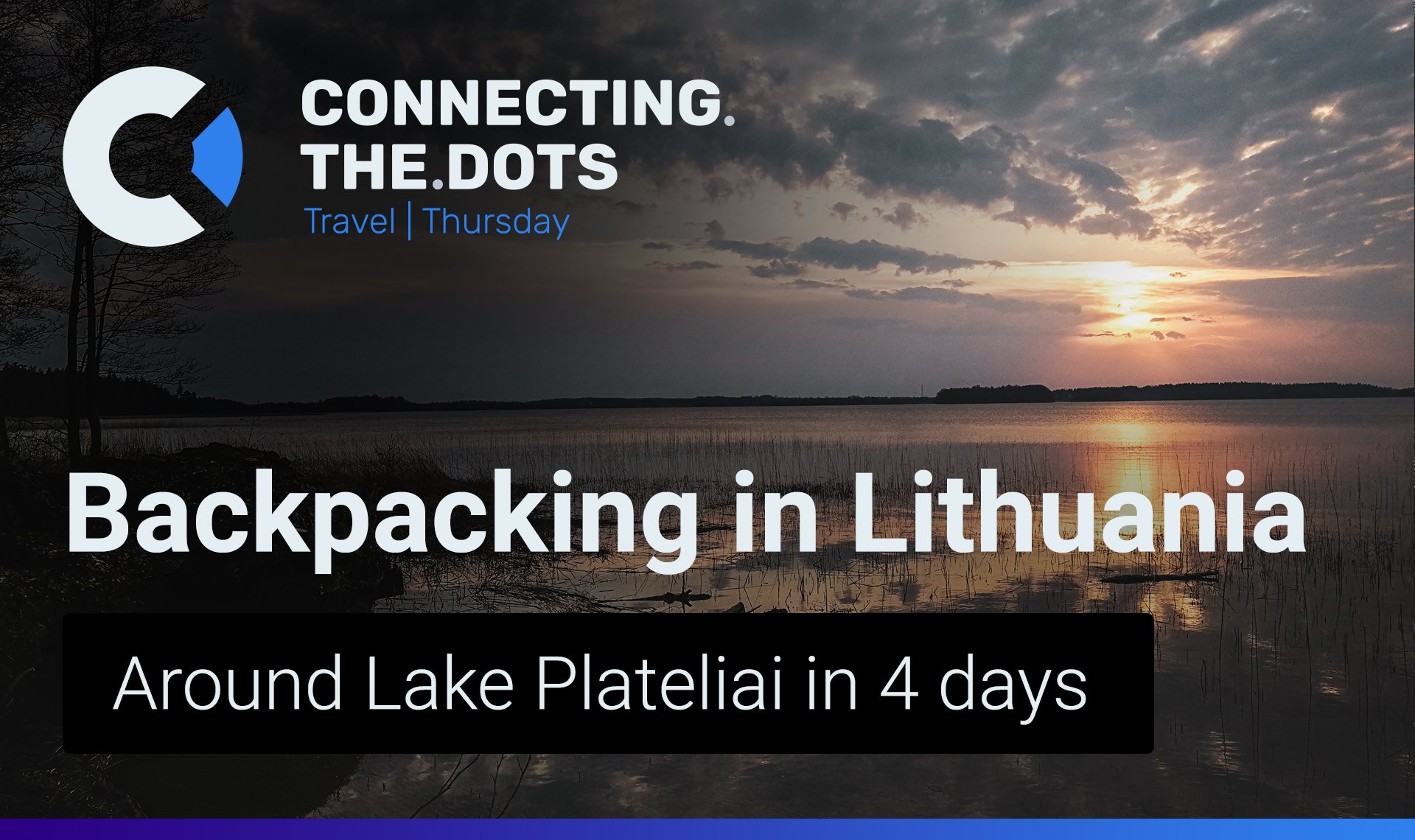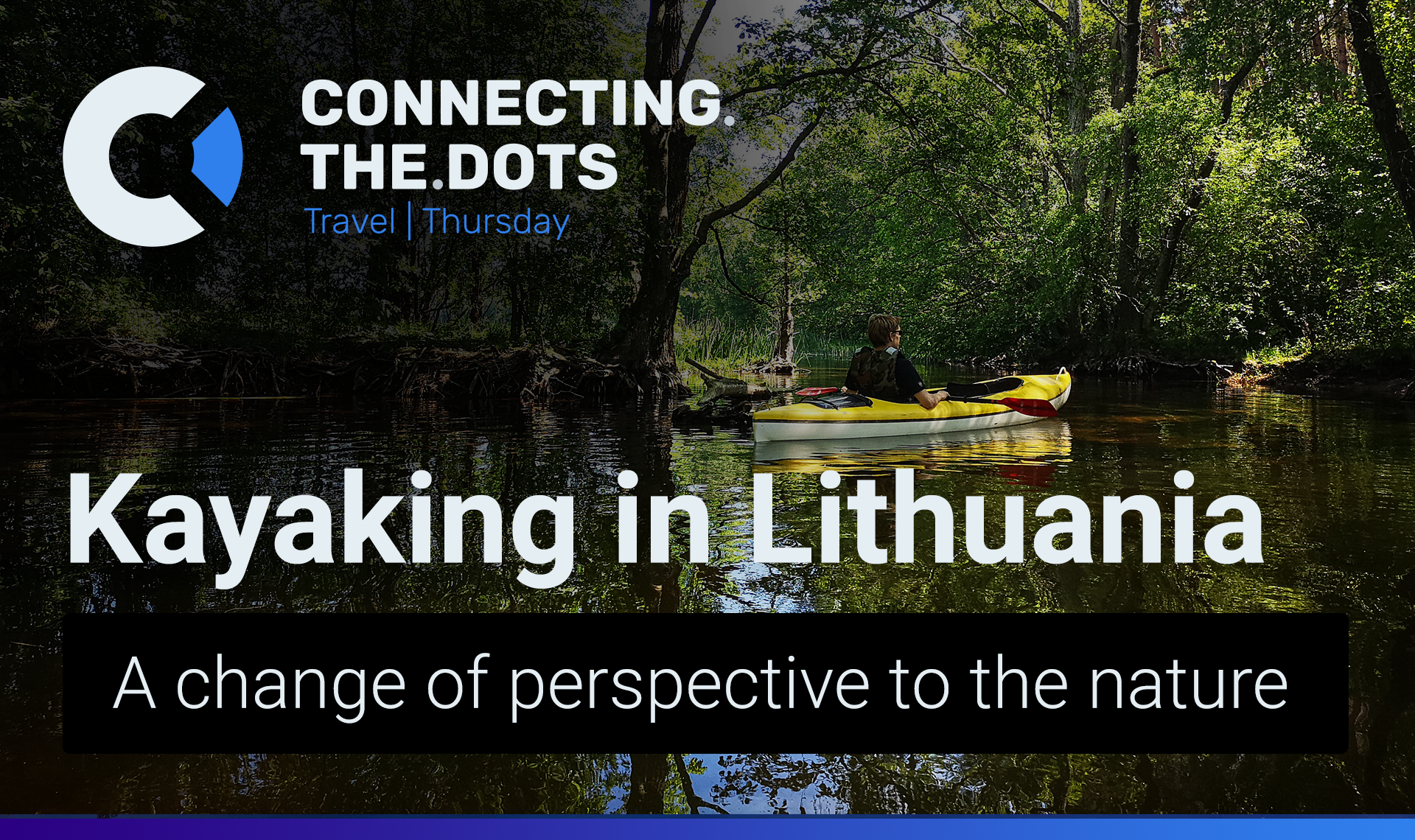
Curonian Spit is a recognized site of UNESCO world heritage and for obvious reasons, for example, Parnidis educational track, on which I’m going to focus today, goes through the most beautiful places in Lithuania – Parnidis Dune, the valley of silence and the valley of death. Each one of those places, though very close to each other, have its own unforgettable charm.
And this is only a fraction of what Curonian Spit has to offer, but well worthy of a separate article. While I have plans to write about more places of the Curonian Spit National Park later this summer, let’s focus now on this dream-like magical environment.
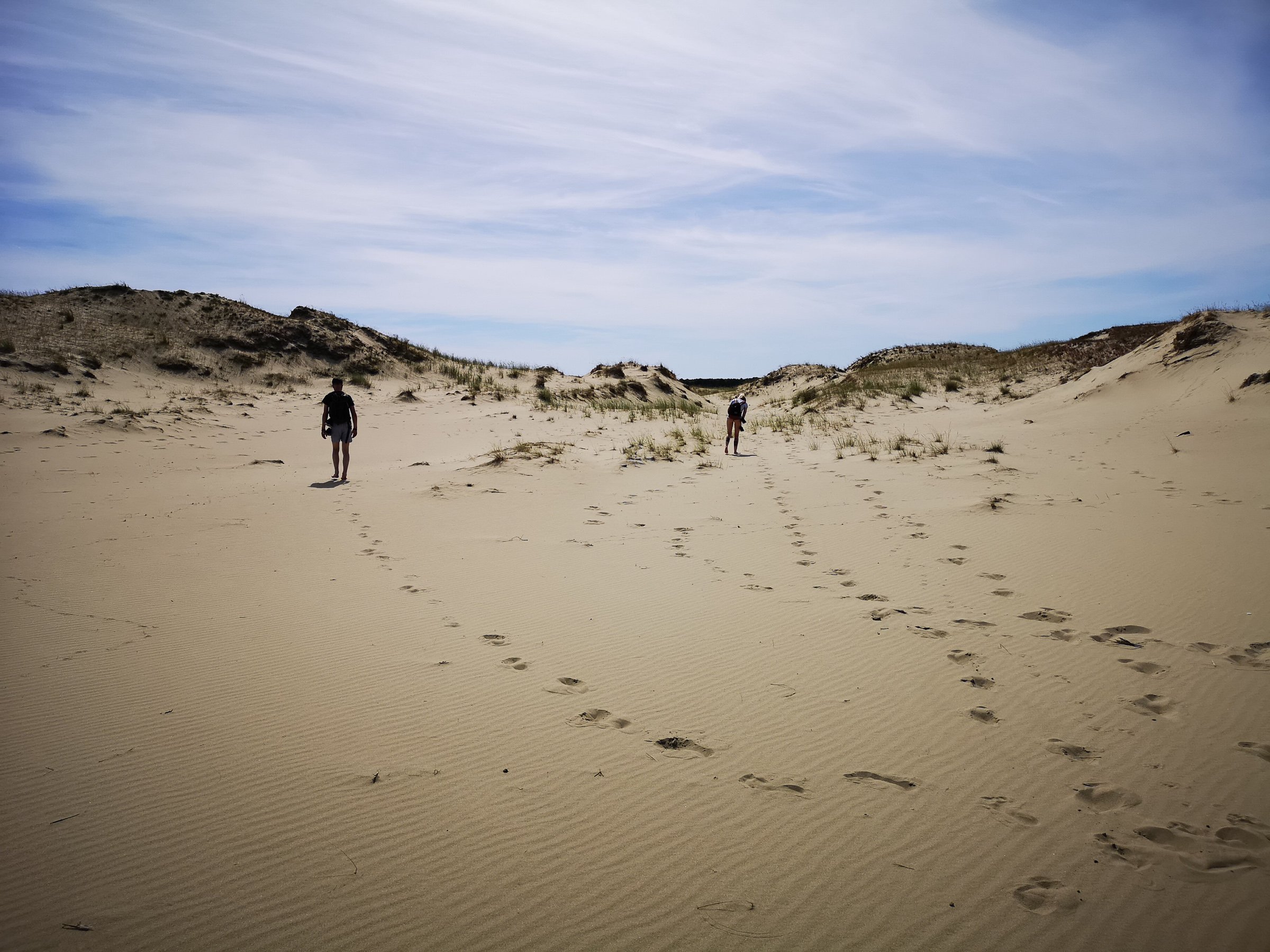
|
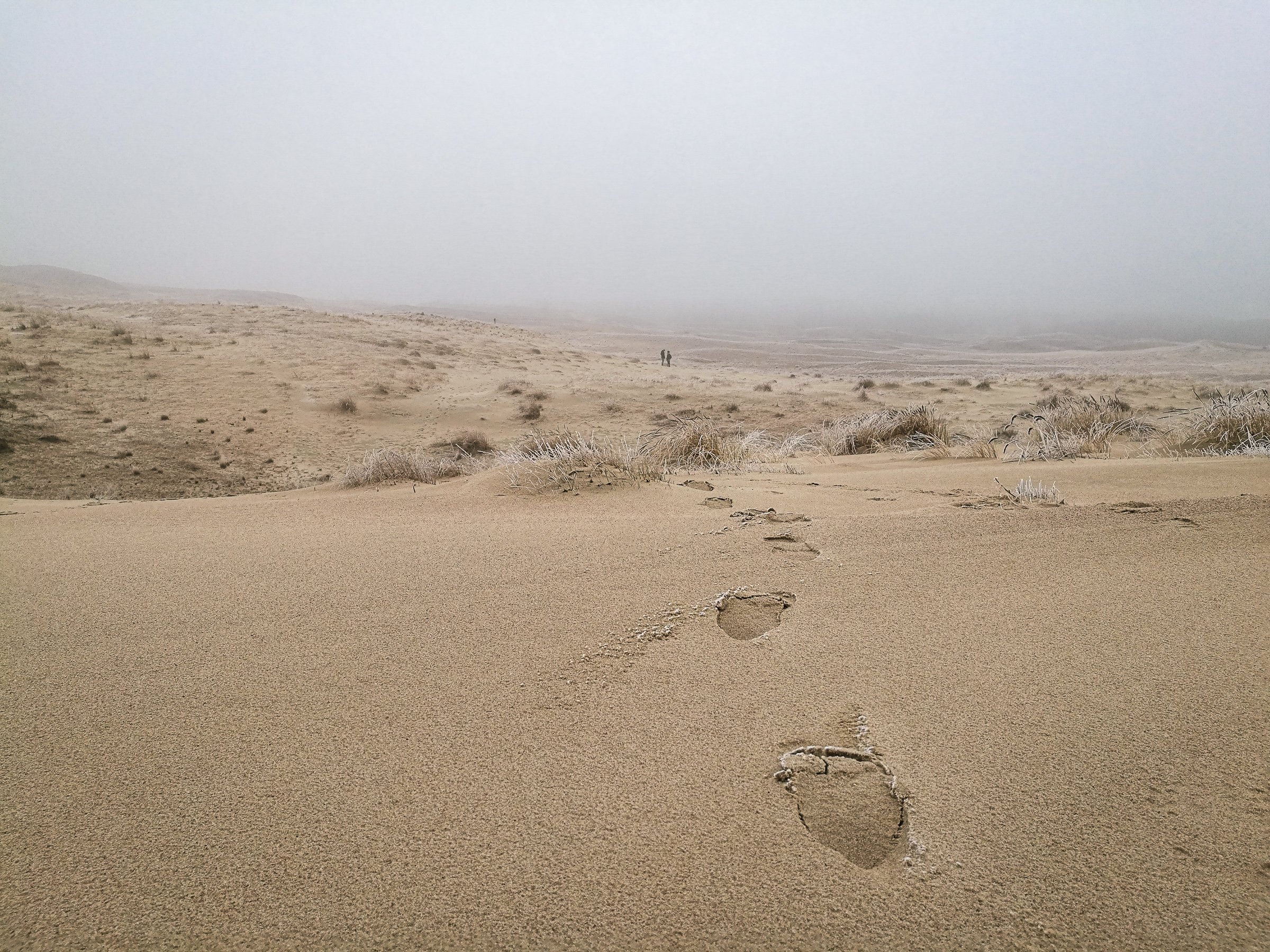
|
|---|
The following part of an article is translated from booklets and informational stands made and provided by Curonian Spit National Park Management. All the credit for the factual information of this piece goes to them and if you ever end-up visiting the place, be sure to visit their tourist information center in Nida. The staff were really friendly to me and helped to learn anything I needed by providing the following information.
Curonian Spit National Park
The history of Curonian Spit formation continues for the last 5,000 years. It was always terraformed by the natural hazards and later, with the ever-advancing technologies of humans, settlers made an impact on this environment as well for which they had a huge price to pay. From 16th-century the area suffered from mass deforestation, intensive animal pasture, tar and wood charcoal production, tapping and ravaging fires caused by humans.
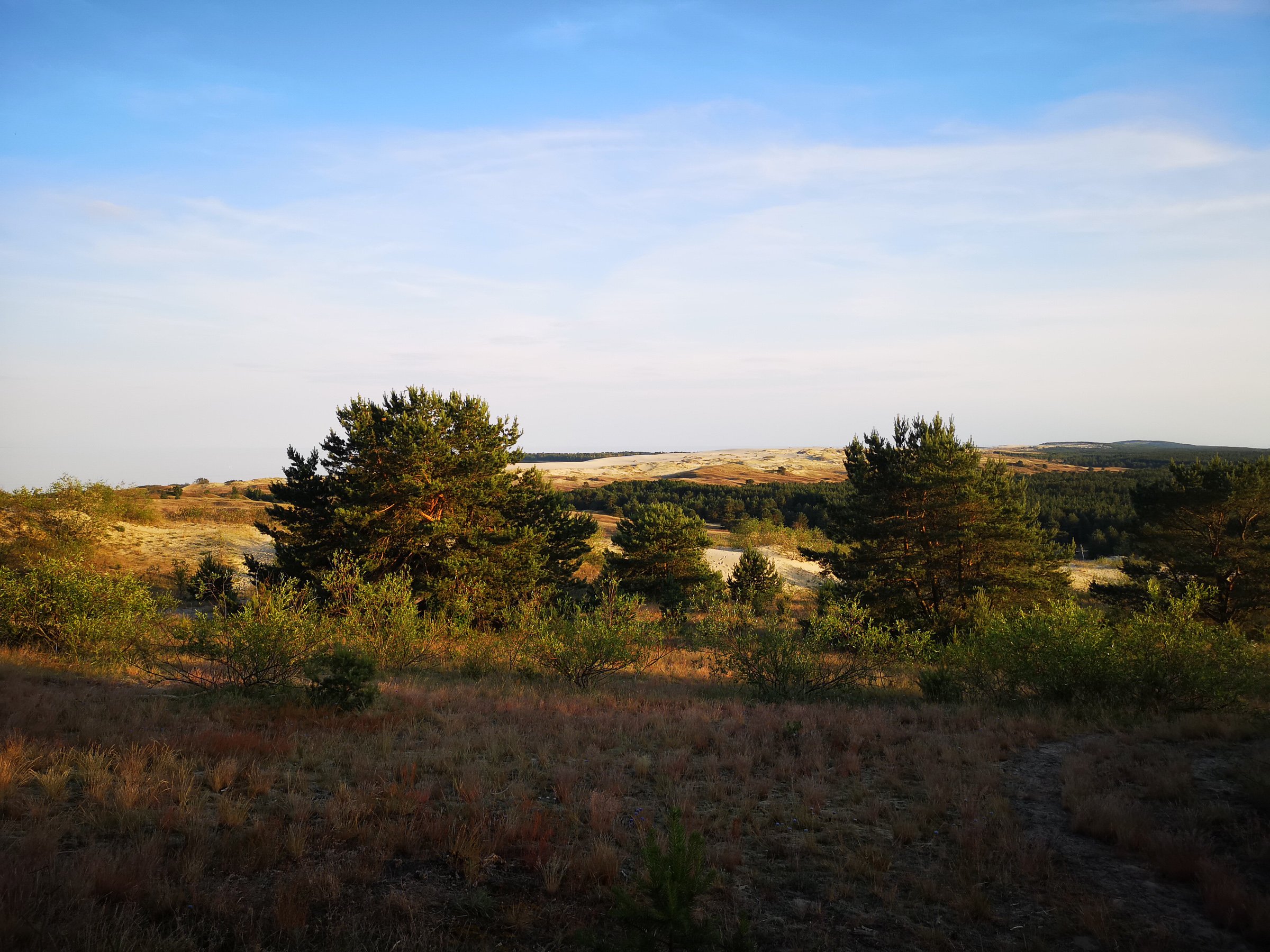
|
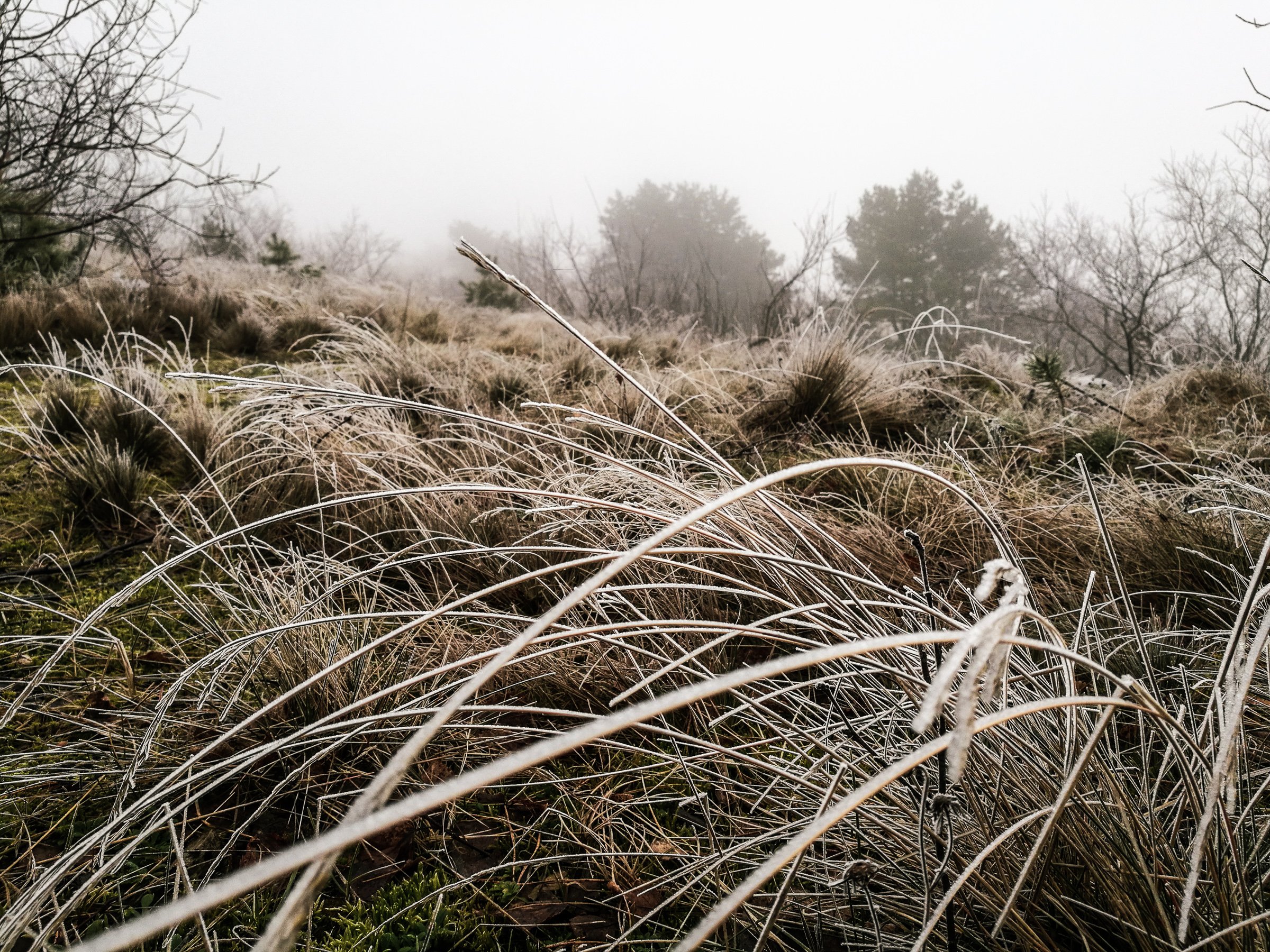
|
|---|
200 hundred years of deforestation dramatically decreased the area covered by the forest from 75% (1605 yr) to 10% (1834 yr). During 1706 - 1846 yr period the sand buried 14 settlements in the Curonian Spit. It took a lot of work and resources for humans to stabilize the region which resulted in an exceptional beauty of the landscape which sets an example of the harmony between nature and humans. It was formed by the combined forces of the sea, wind, and human activities which provides us an ever-changing cultural landscape, the fragile co-existence which can end at any time with no returning point.
Currently, Curonian Spit is a home for the tallest moving dunes in Europe.
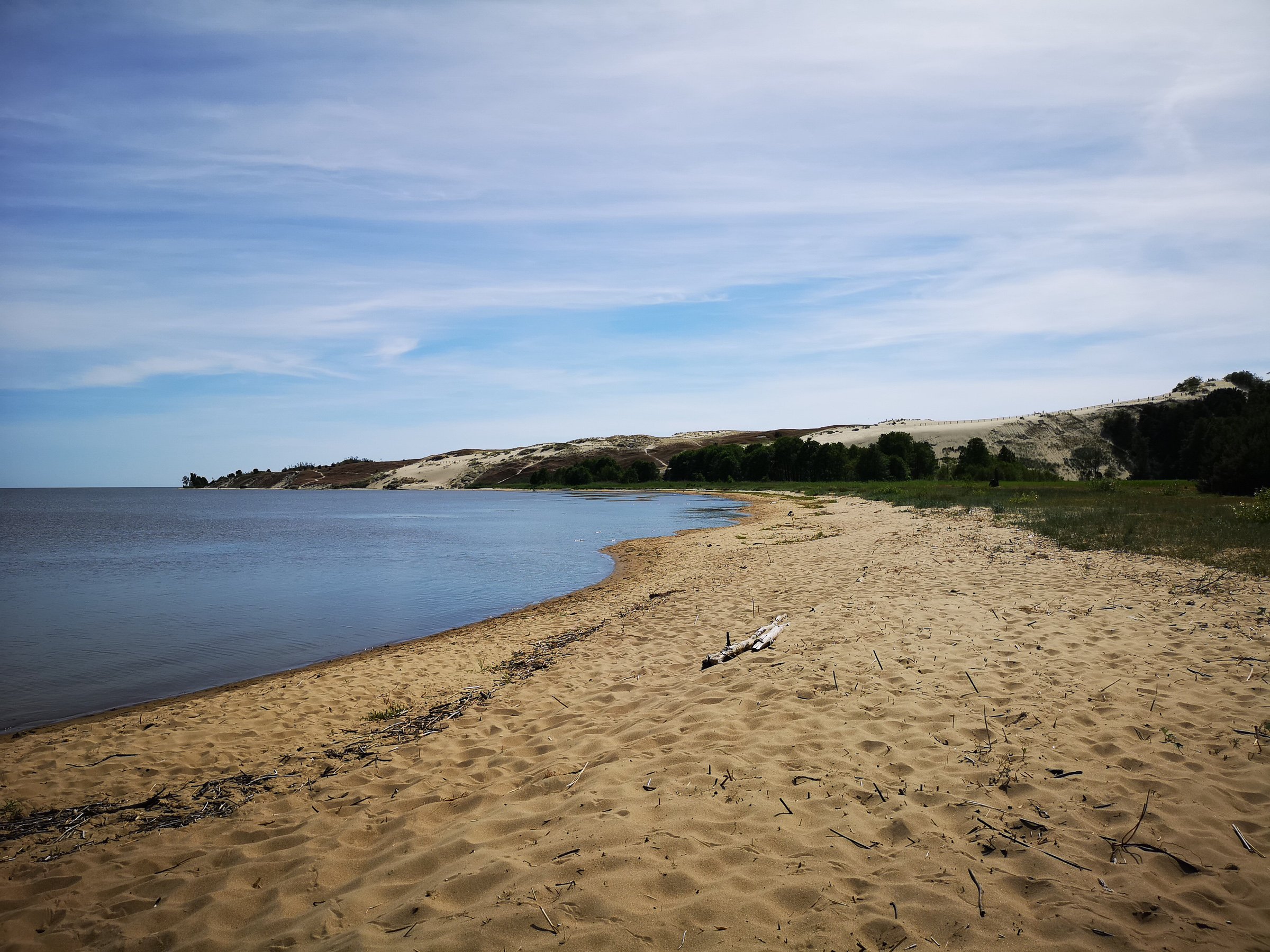
|
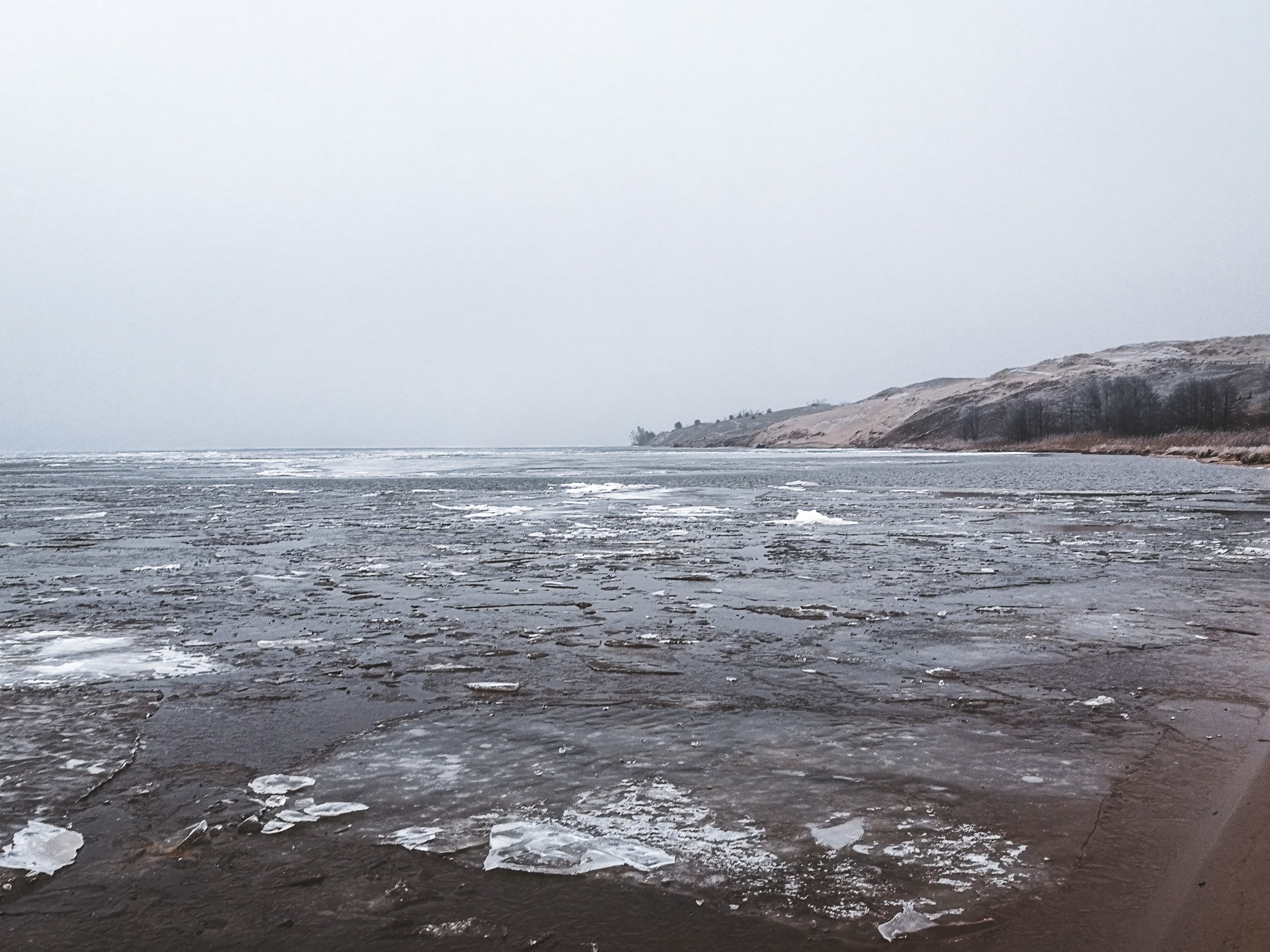
|
|---|
Curonian Lagoon
It is the biggest pool of the fresh water in whole Lithuania. Curonian Lagoon is connected to the Baltic Sea at the northern part of it by the Lithuanian port – Klaipėda city. Its water is constantly moving as Neman and many other Lithuanian rivers flow in to it and from here to the Baltic Sea.
The name of Curonian Lagoon was first time mentioned by the Livonian Order at 1303 marking its appearance in the history as a constant part of the human life and a food source. For a long time, Curonian Lagoon was the way to communicate and travel between the settlements surrounding it, both in warm and cold seasons.
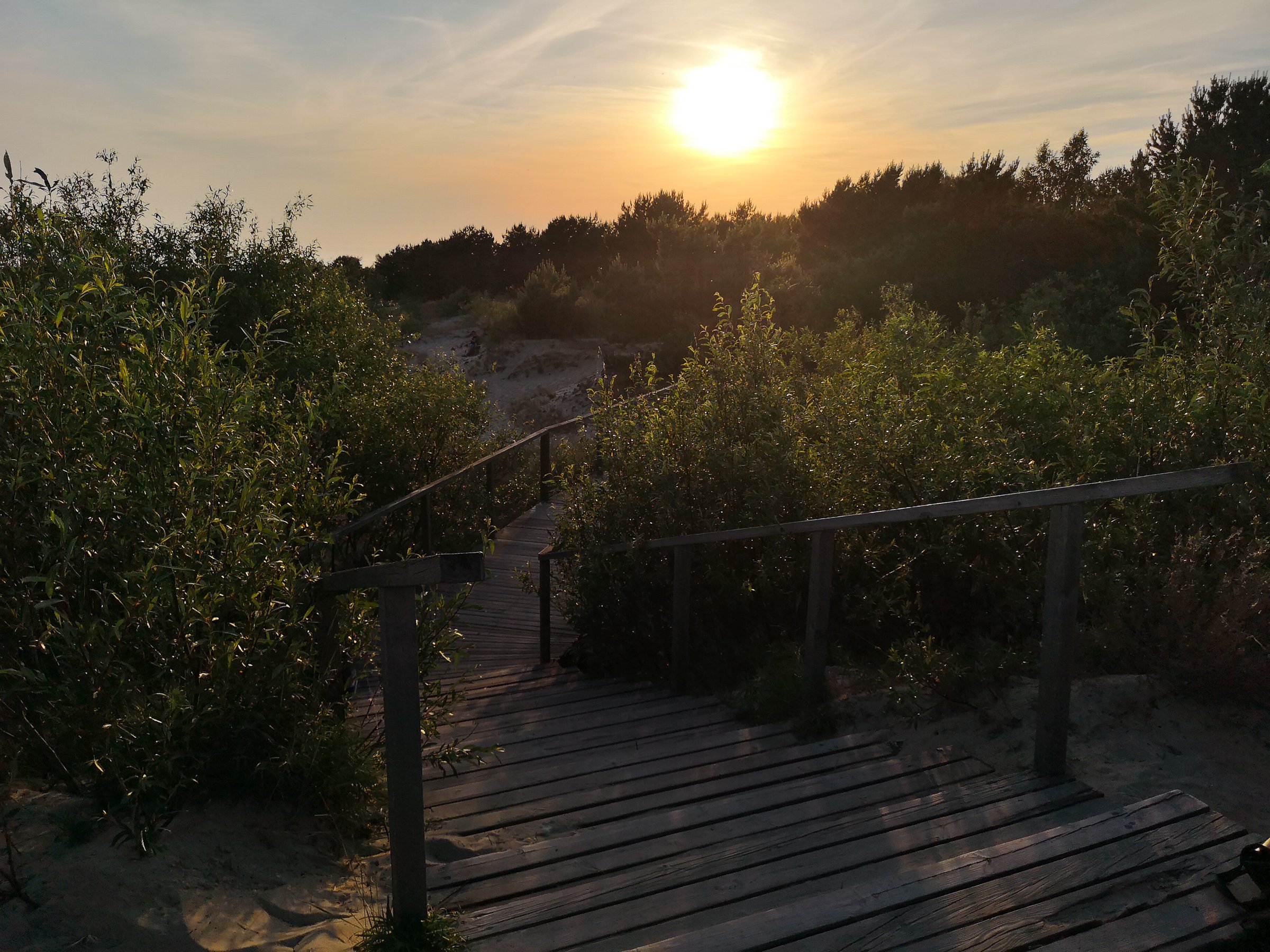
|
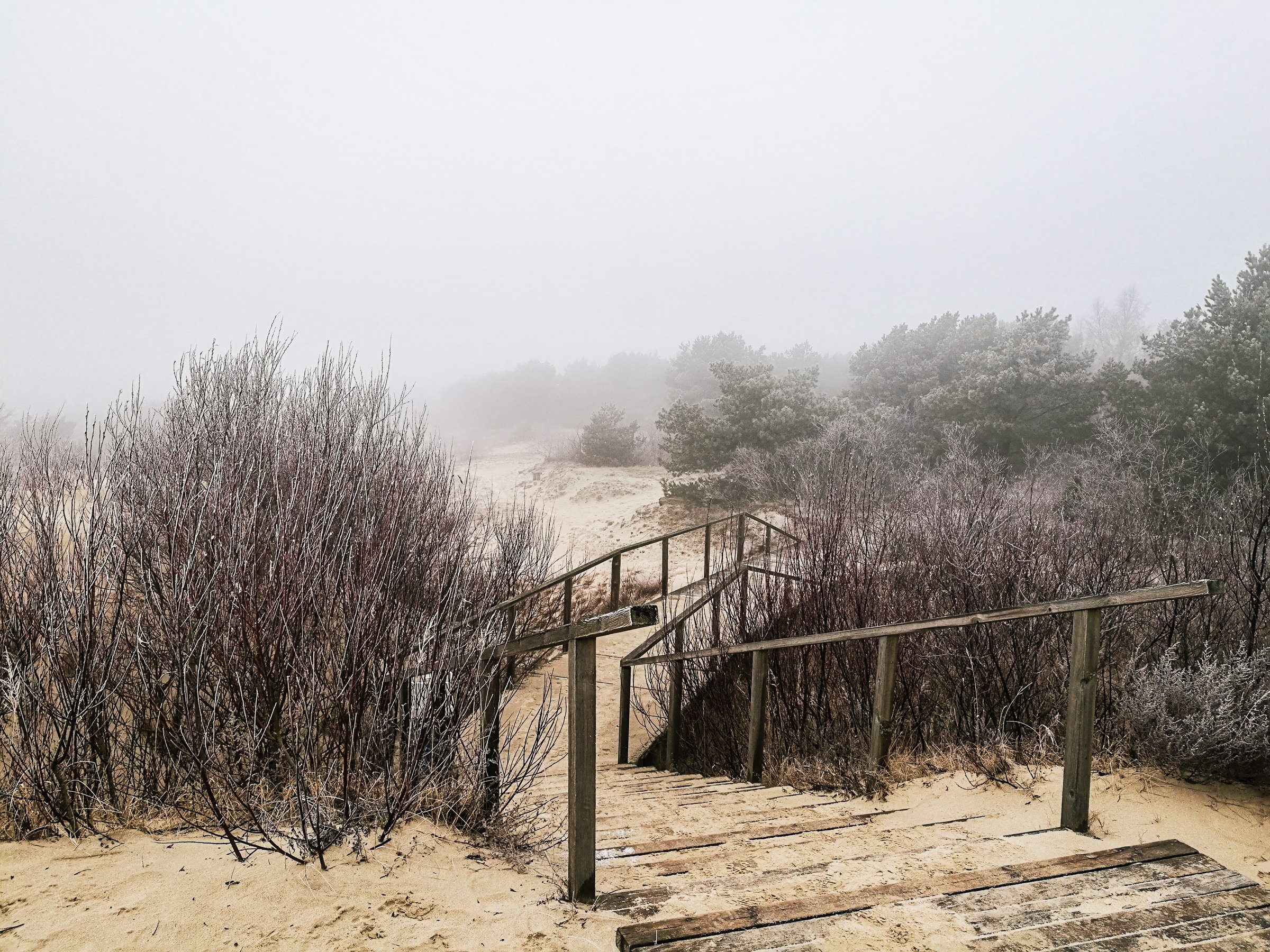
|
|---|
Parnidis Educational track
Combined forces of nature and human created this landscape of an unspeakable beauty, which can surprise you with the scenery during any season of the year. On Parnidis educational track you’ll visit natural meadows, white and grey dunes and forests planted by the human hands, still, whispering silently of the whole history of the Curonian Spit. You’ll not only going to be surprised by the picturesque scenery and its variety but feel and be filled by the natural forces surrounding you, pleasing your different senses.
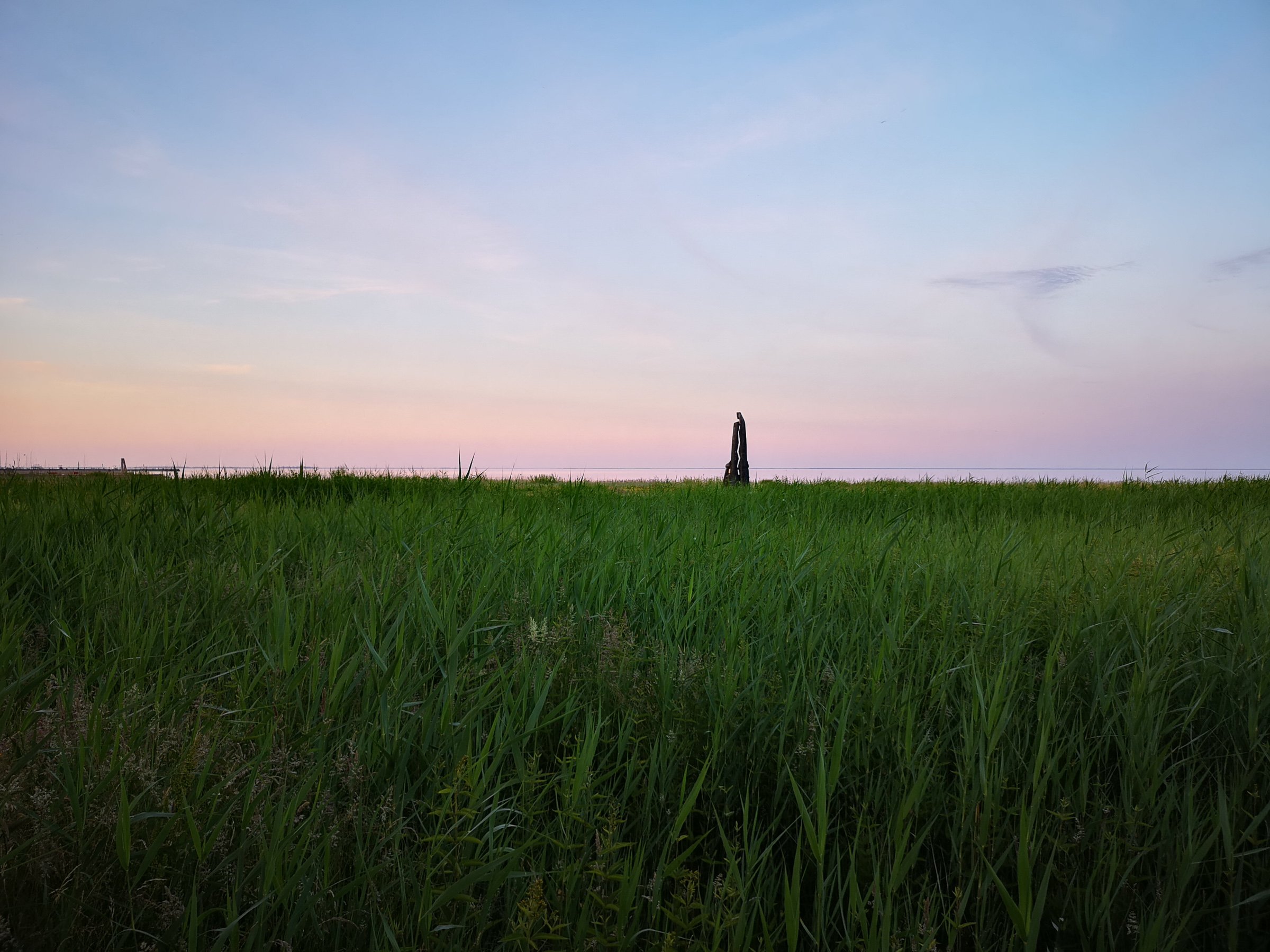
|
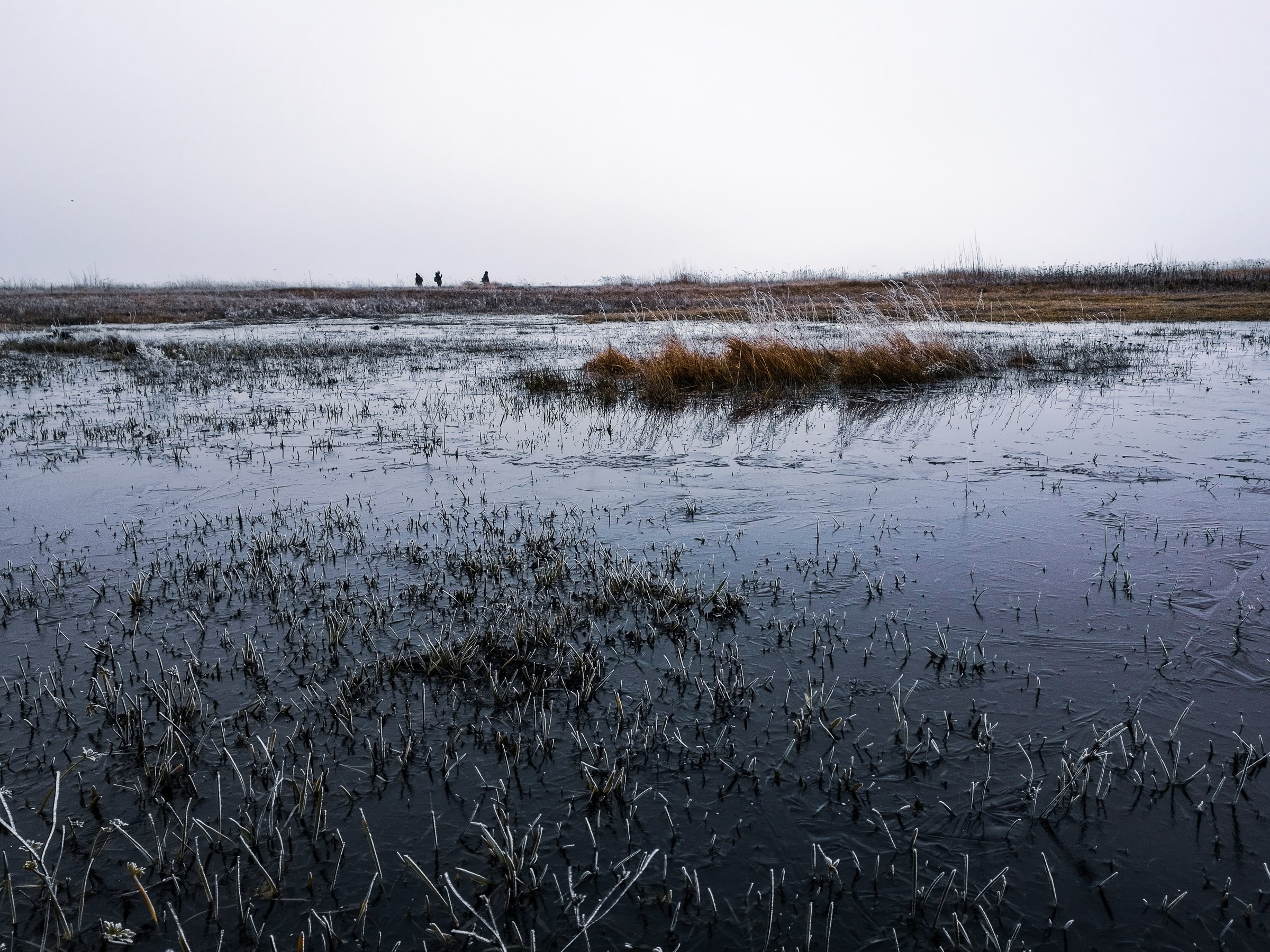
|
|---|
The valley of silence
Parnidis educational track starts at the valley of silence. That’s the name for a meadow by the foot of Parnidis dune where you can always find a peace and a refuge from winds coming from the endless sea. All of the settlements in the Curonian Spit is by the Curonian Lagoon. The reason for it is that meadows on this side of the peninsula are the safest place for humans to live. The only danger lurking for a several hundred years here is the unstoppable sand dunes, slowly moving toward the east direction.

|
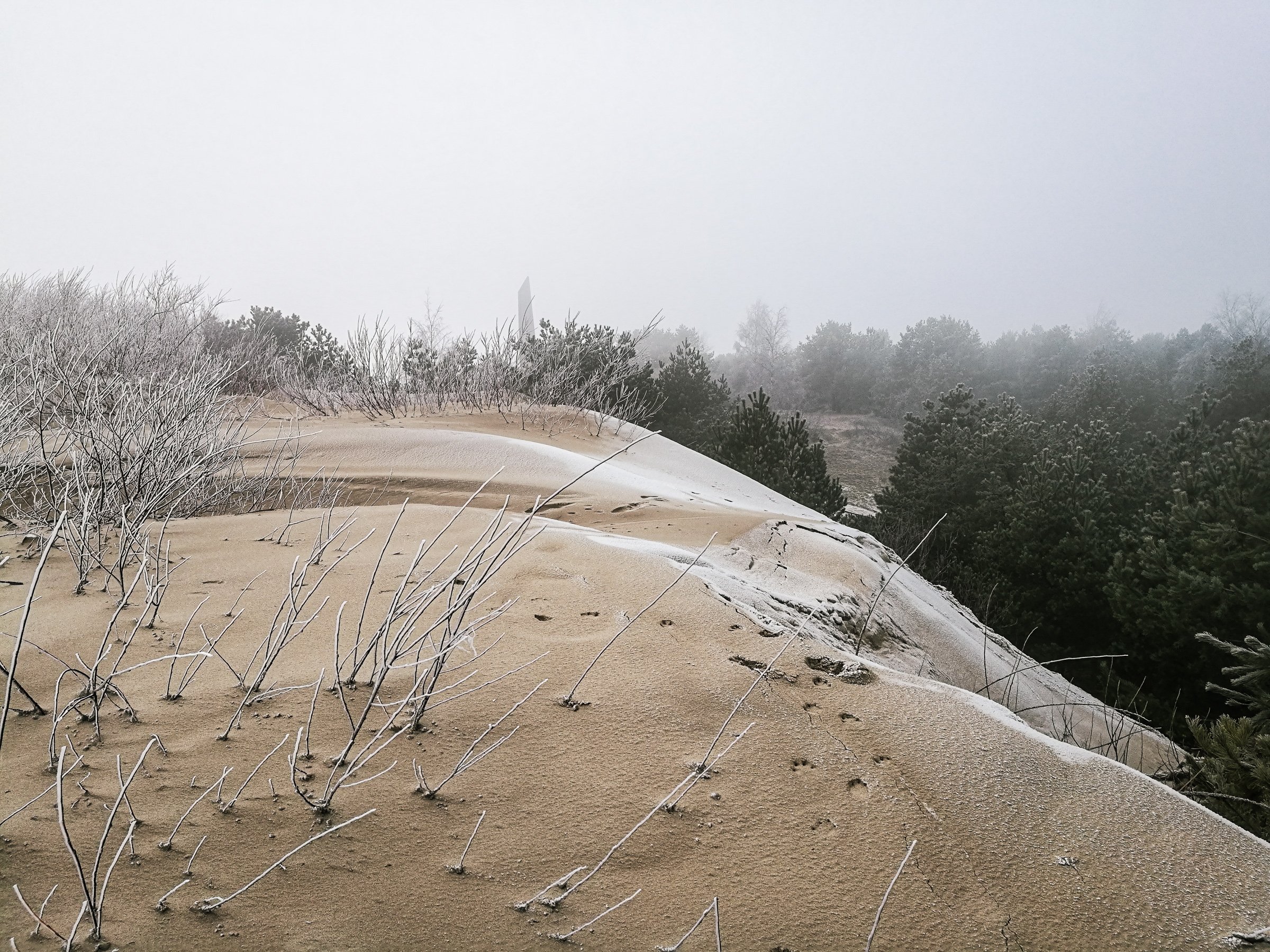
|
|---|
Parnidis Dune
With a height of 52 m Parnidis dune is one of the tallest in the whole Curonian Spit and the tallest in Nida city region. It is guessed that the name “Parnidis” came from a Lithuanian phrase “perėjusi per Nidą” (walked through Nida) as the dune with the help of the wind had covered the old Nida settlements for a few times. Parnidis dune is just a part of a bigger dune massive which goes either to the south in Kaliningrad region or towards Nida city where it is covered by a human-planted forest. Parnidis dune is one of the prime relief formations in the whole Curonian Spit, a sand mountain, which consumed the old parabolic dunes (U-Shape form dunes), endless forests and few settlements.
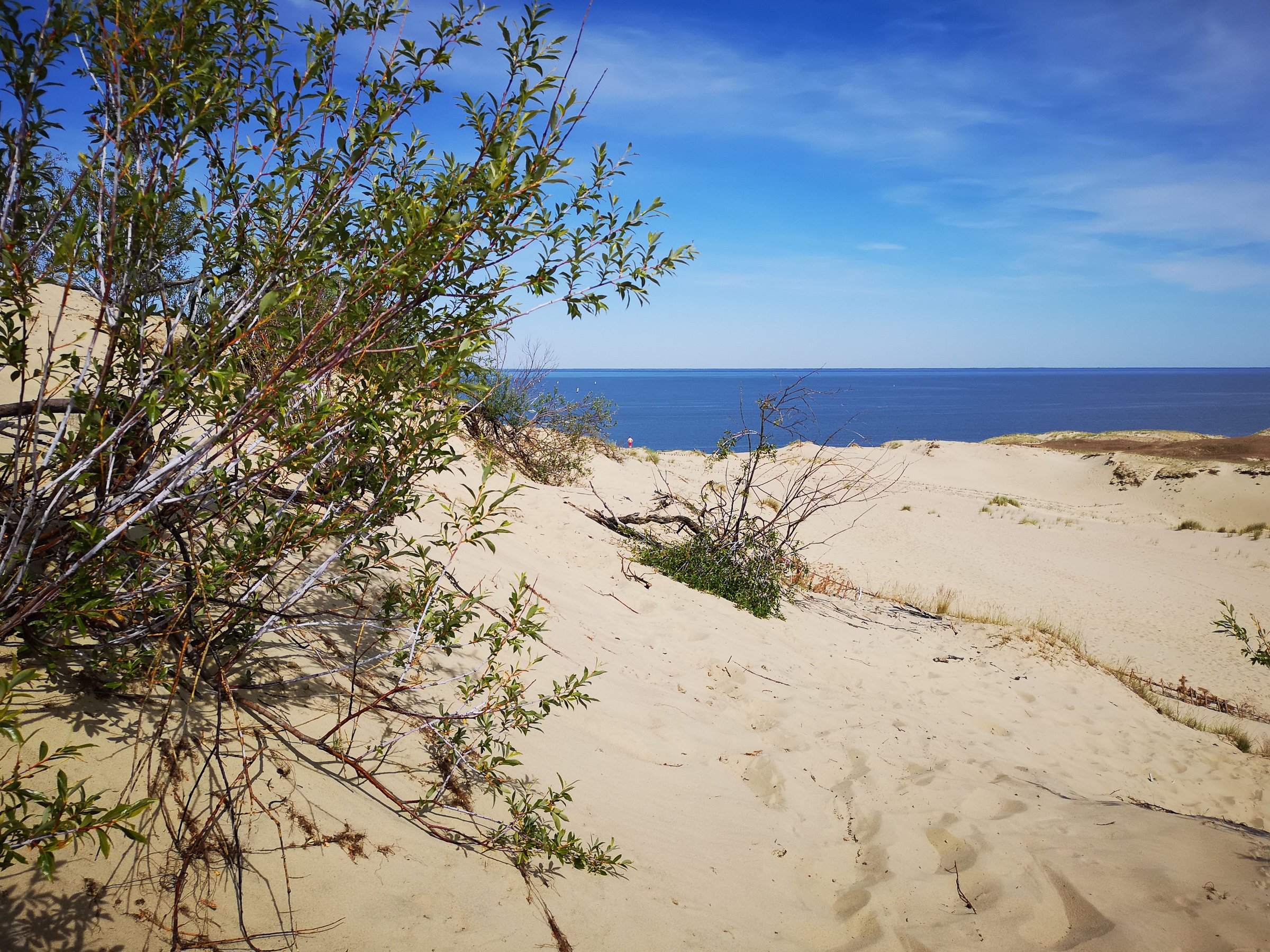
|
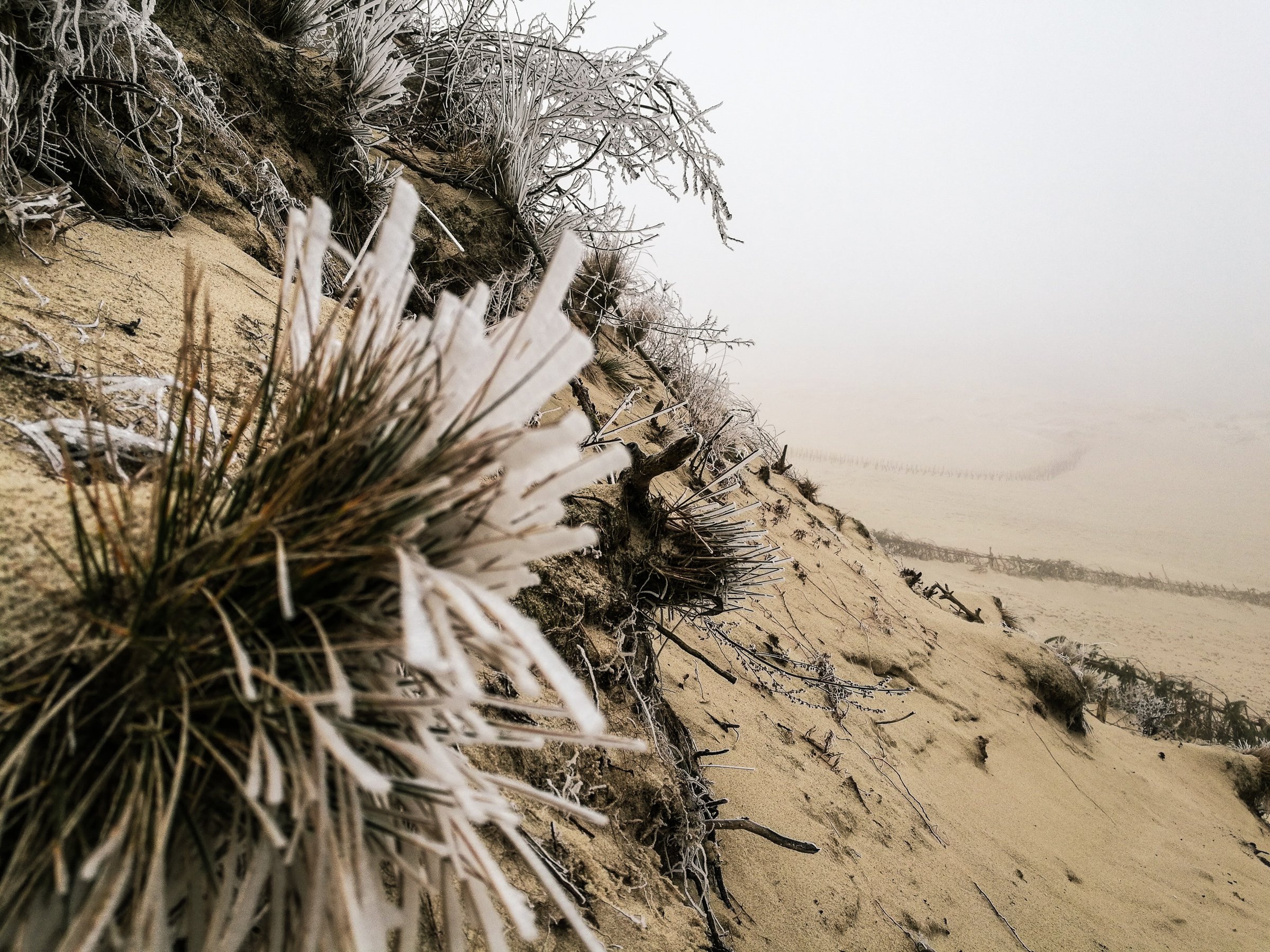
|
|---|
These dunes started to form in the 16th century when a mass deforestation of the area started. The destruction of a natural relief resulted in a dune movement from the sea coastline to the Curonian lagoon side. At the end of 19th settlers started to try to stabilize the situation by mass forestation and building a protective ridge on the sea coastline. This ridge cut the source of a sand for the dunes provided by the Baltic Sea.
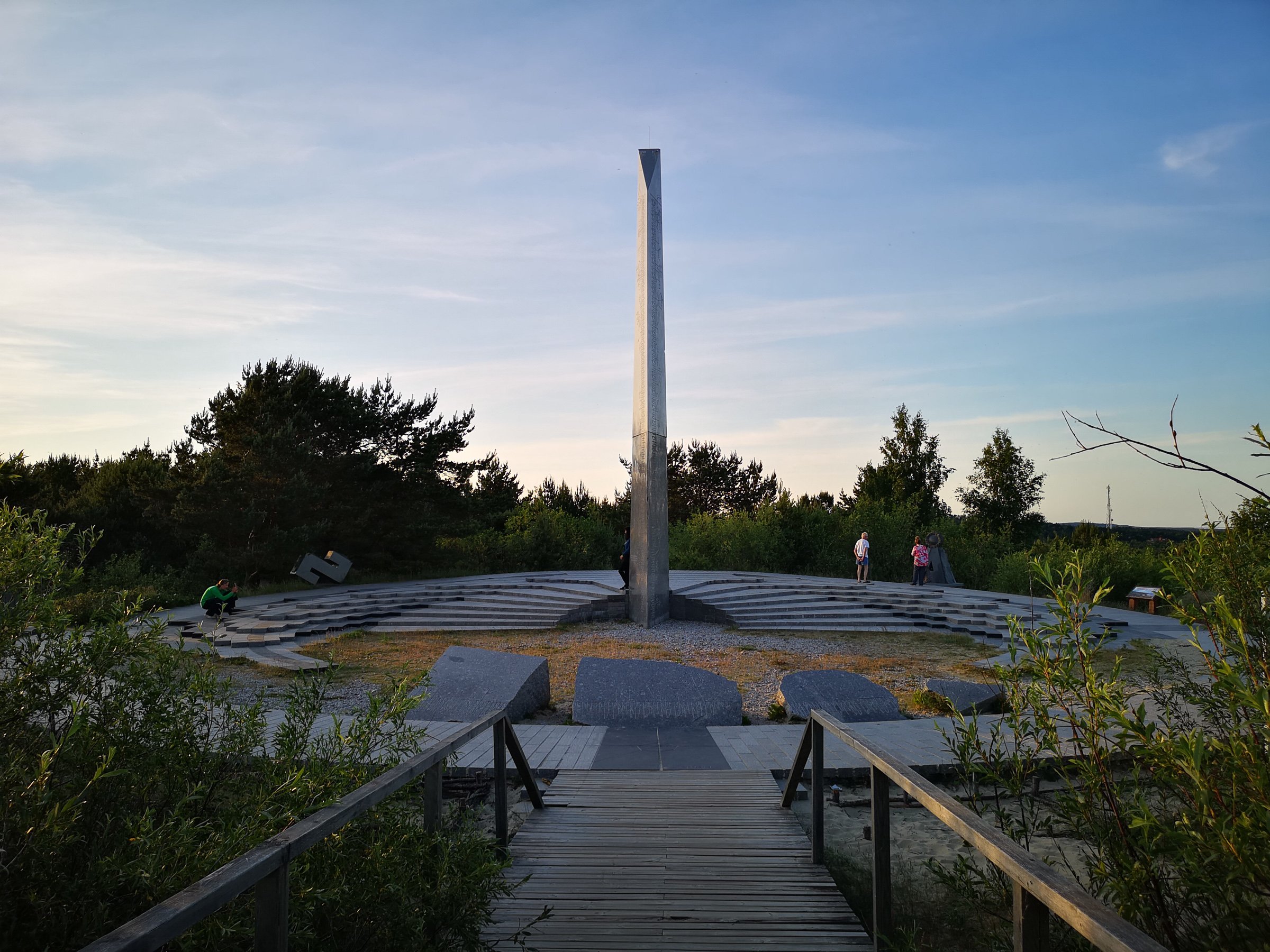
Parnidis Sundial - Calendar
In the year 1995 on the top of Parnidis dune a sundial – calendar was built. Its crown jewel – obelisk is 12 m tall with 2 m beneath the ground, with a weight of 200 tons it was transported from Vyborg pits in Russia. It is decorated with the symbols copied from the 17th century old wooden rune calendar.
The whole area is covered with granite plates at 16 different heights marking 12 months and 4 solstice and equinox lines. Curonian Spit is the only suitable place for such a complex construction, actually, the conditions here are perfect – it is the only place in Lithuania where the sun rises and sets into the water which opens the absolute mathematical horizon.
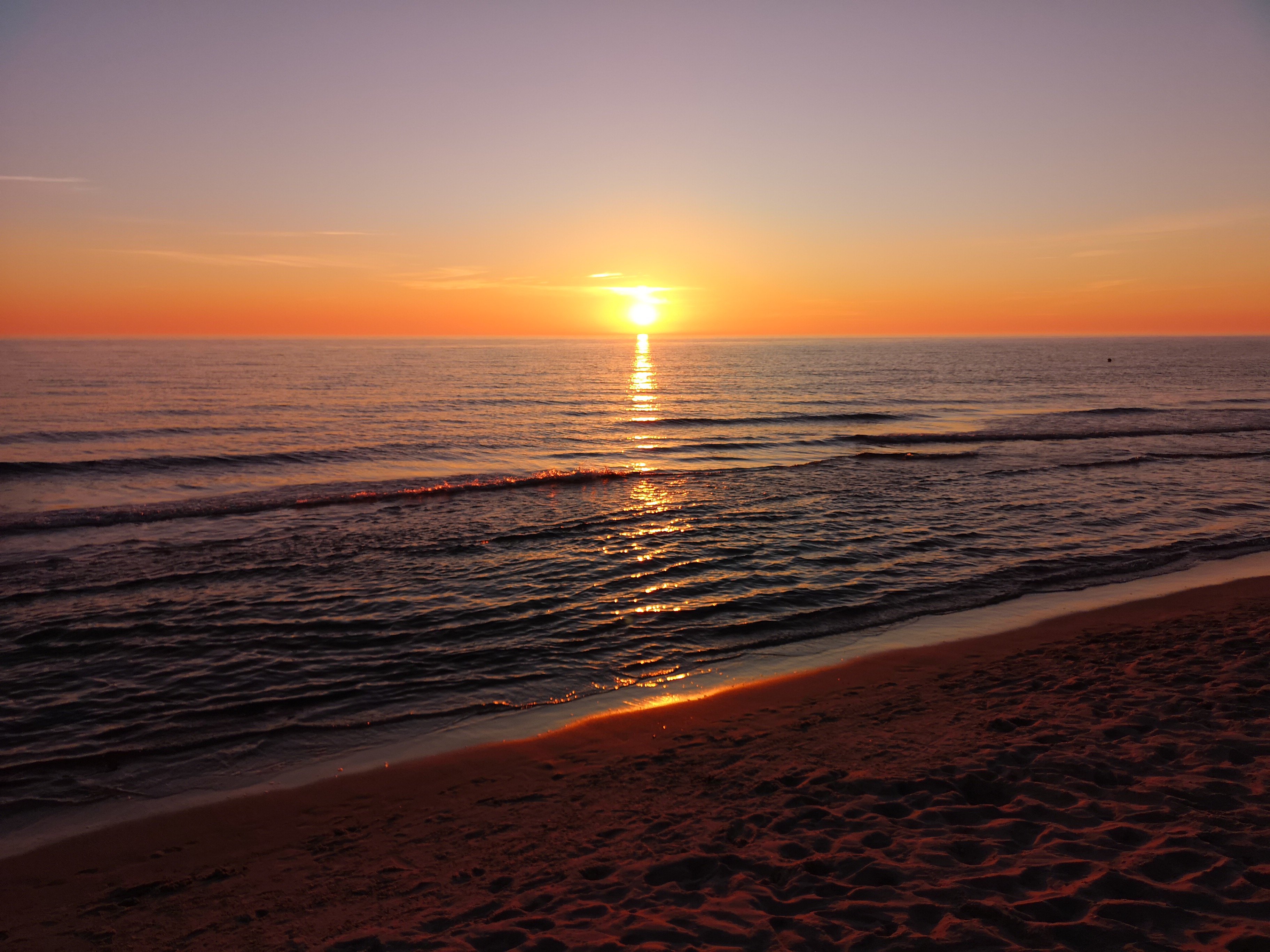
It is a truly amazing place as by observing the sundial – calendar you can understand how everything is in sync with the natural rhythms. With the help of the structure like an ancient pagan priest or priestess, one can tell if it is a solstice or equinox, when the Sun sets into the direction of one of the four sculptural shapes, symbolizing the corresponding seasons. And that’s not it, you can also tell the length of the day of any month in a year, divided into hours showing the exact true local Lithuanian time – Greenwich Mean Time GMT+2 hours.

It was destroyed by the hurricane Anatolia in 1999 and rebuilt only in 2011, a bit higher at 13,8 m and way lighter – only 36 t.
For more information, please, visit the official website for Curonian Spit tourism http://visitneringa.com/en
Or official website of Curonian Spit National Park management:
http://nerija.am.lt/en/VI/index.php
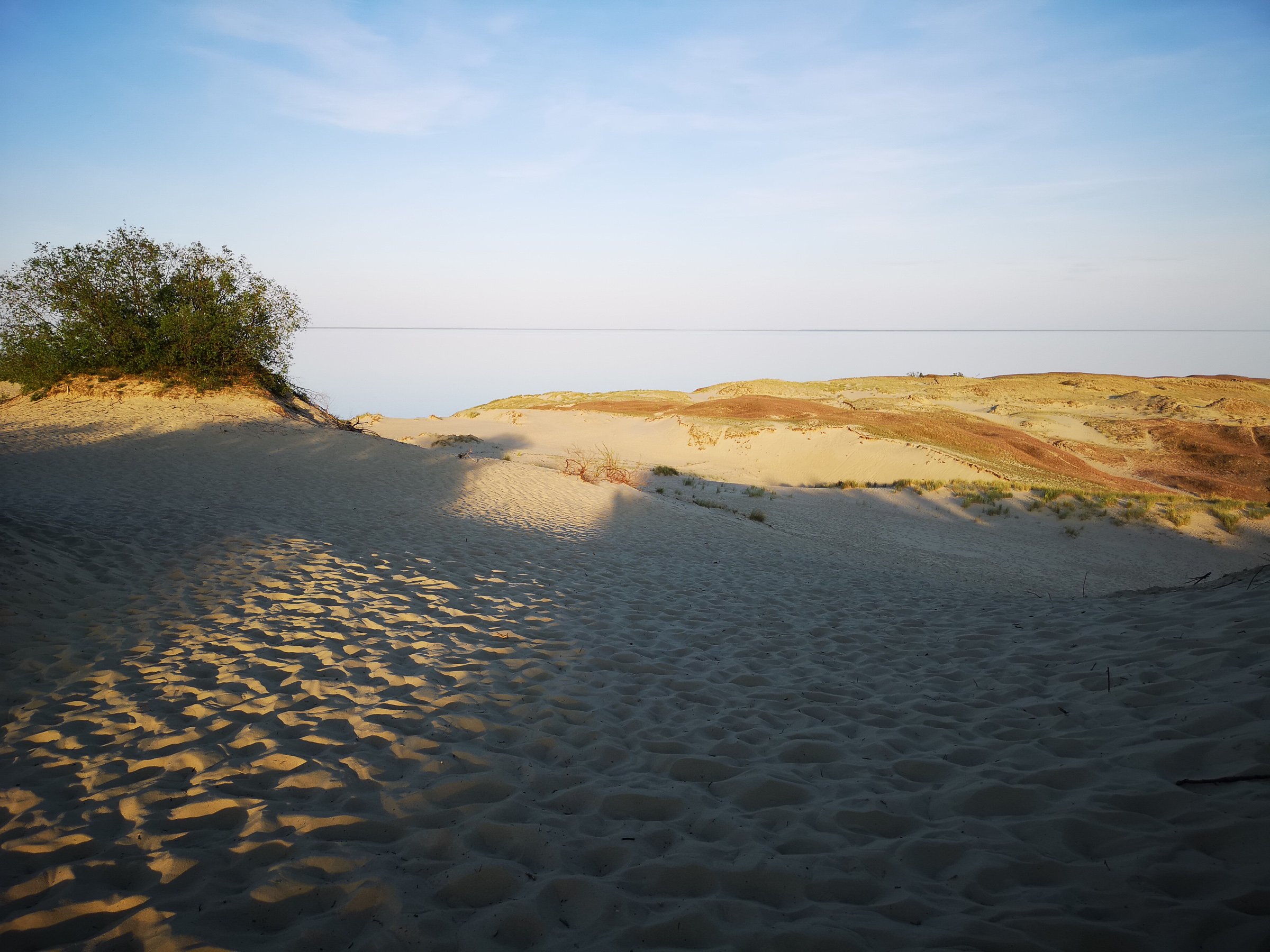
|
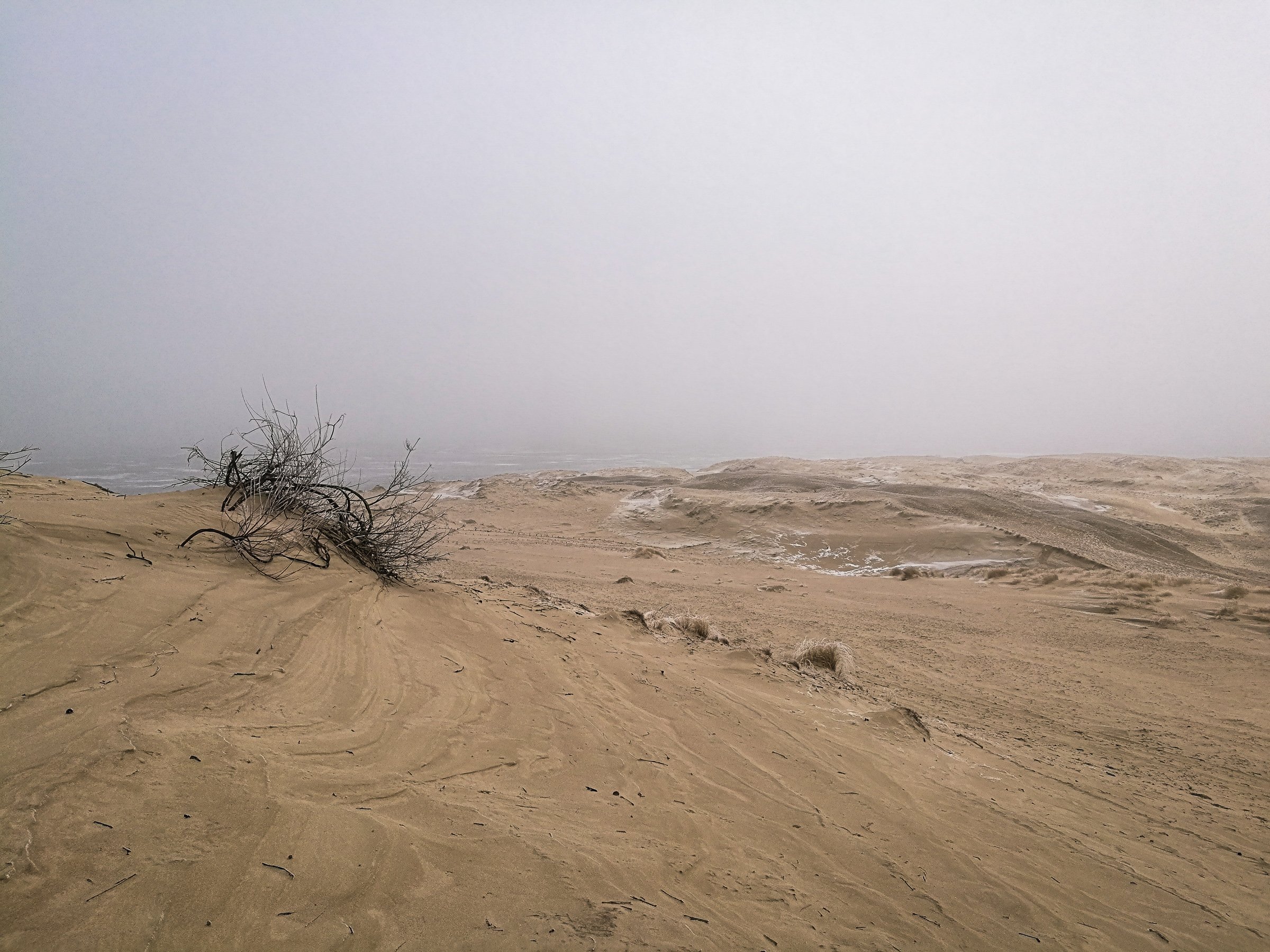
|
|---|
Between life and death
Though these amber-toned sandy lands during the summer are not as lifeless as it might look from the first impression, the winter brings a totally different mood. The beautiful golden dunes during the cold season turn into the gray and silent valley of the death. It is when you understand the reason for its name as it is usually a vivid and lively valley between Parnidis and Gliders dunes.
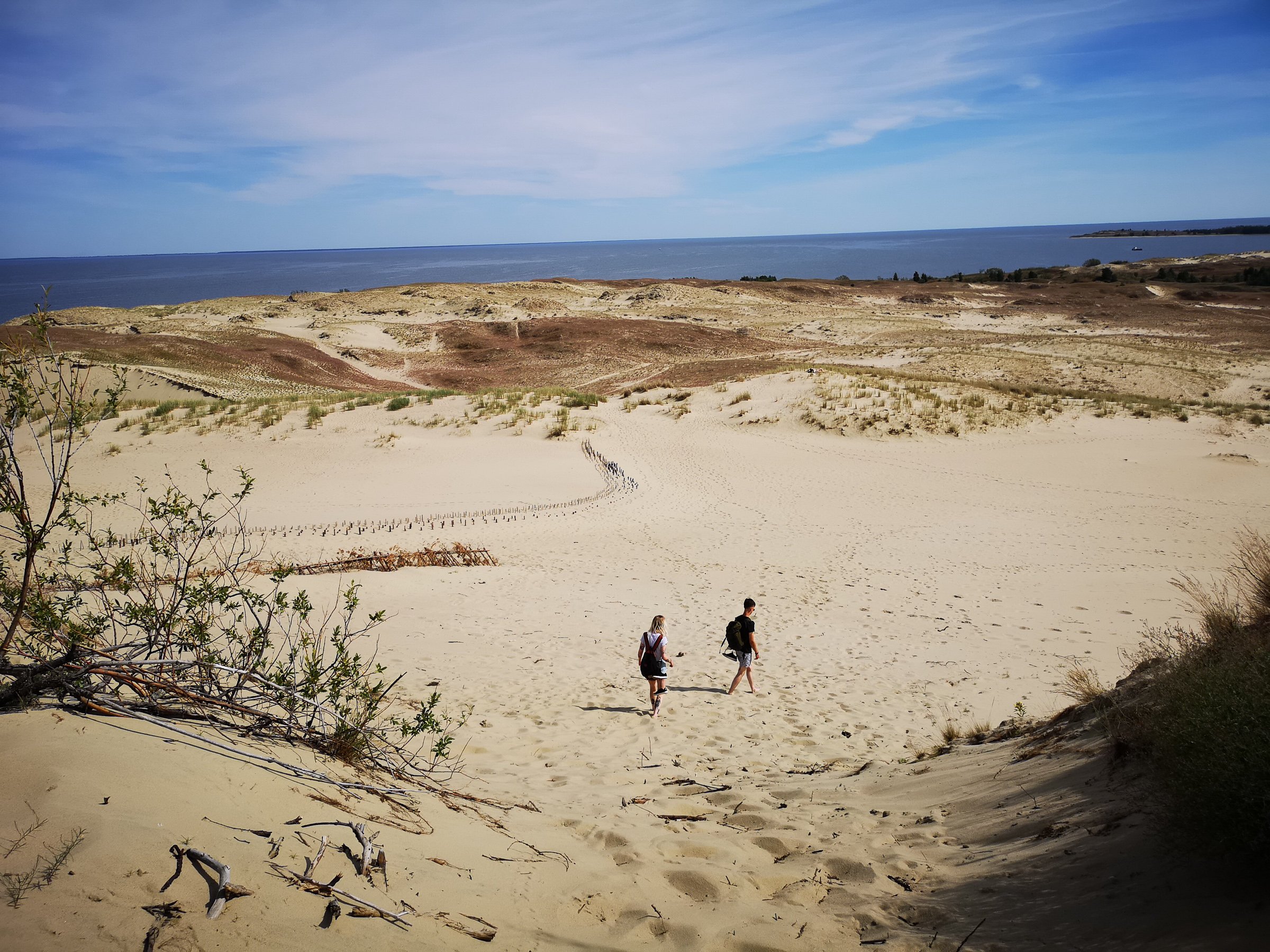
|
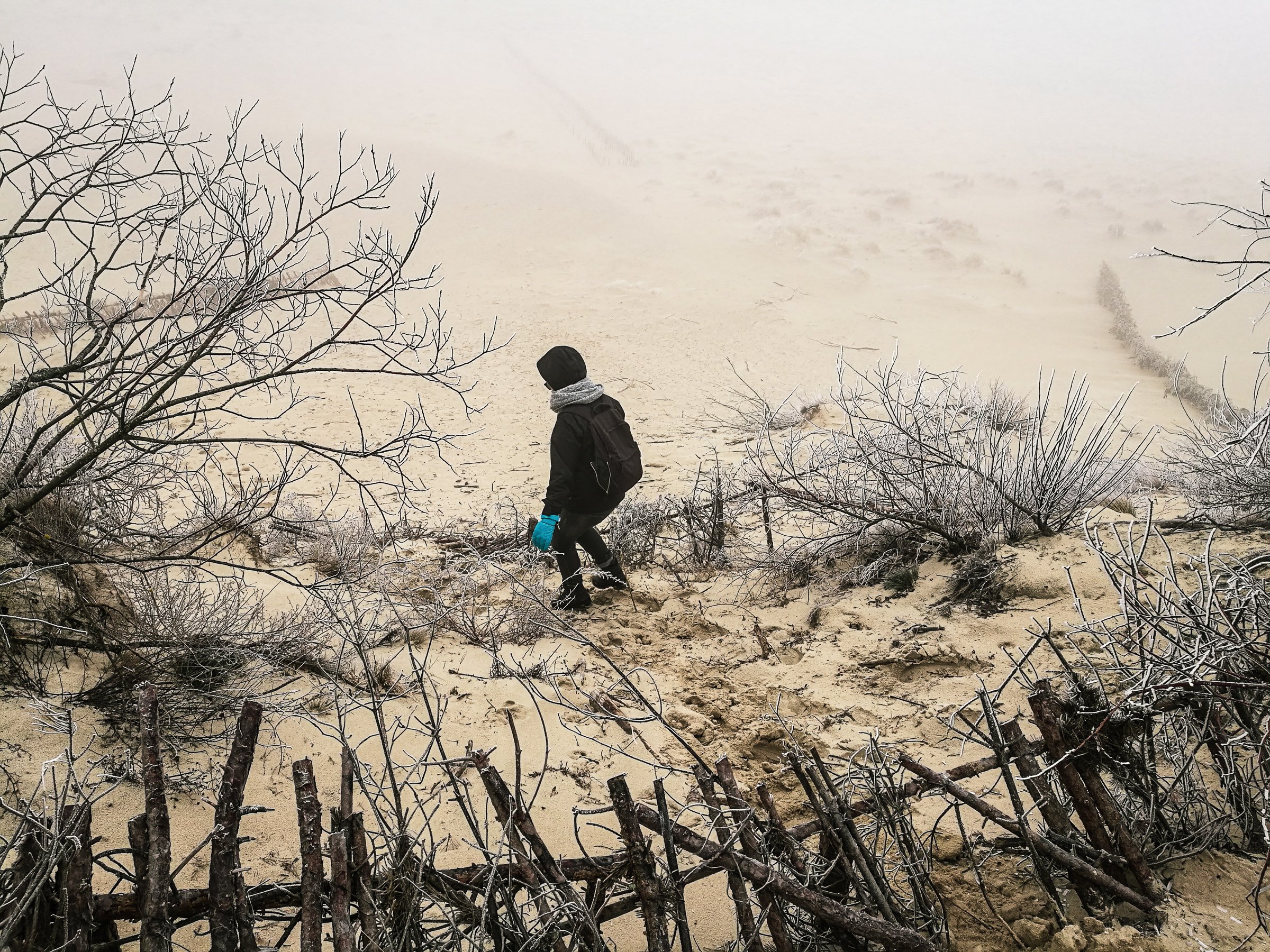
|
|---|
During a winter the place feels like a planet forced out of its Goldilocks zone into the vast and cold nothingness of the eternal abyss. Life doesn’t seem to be self-sustainable anymore and you no longer hear cheerful voices of playing children and relaxed adults. The sun is absent and so is the time, the sun clock stands without a purpose as the shadow engulfs everything you see and dare to touch.
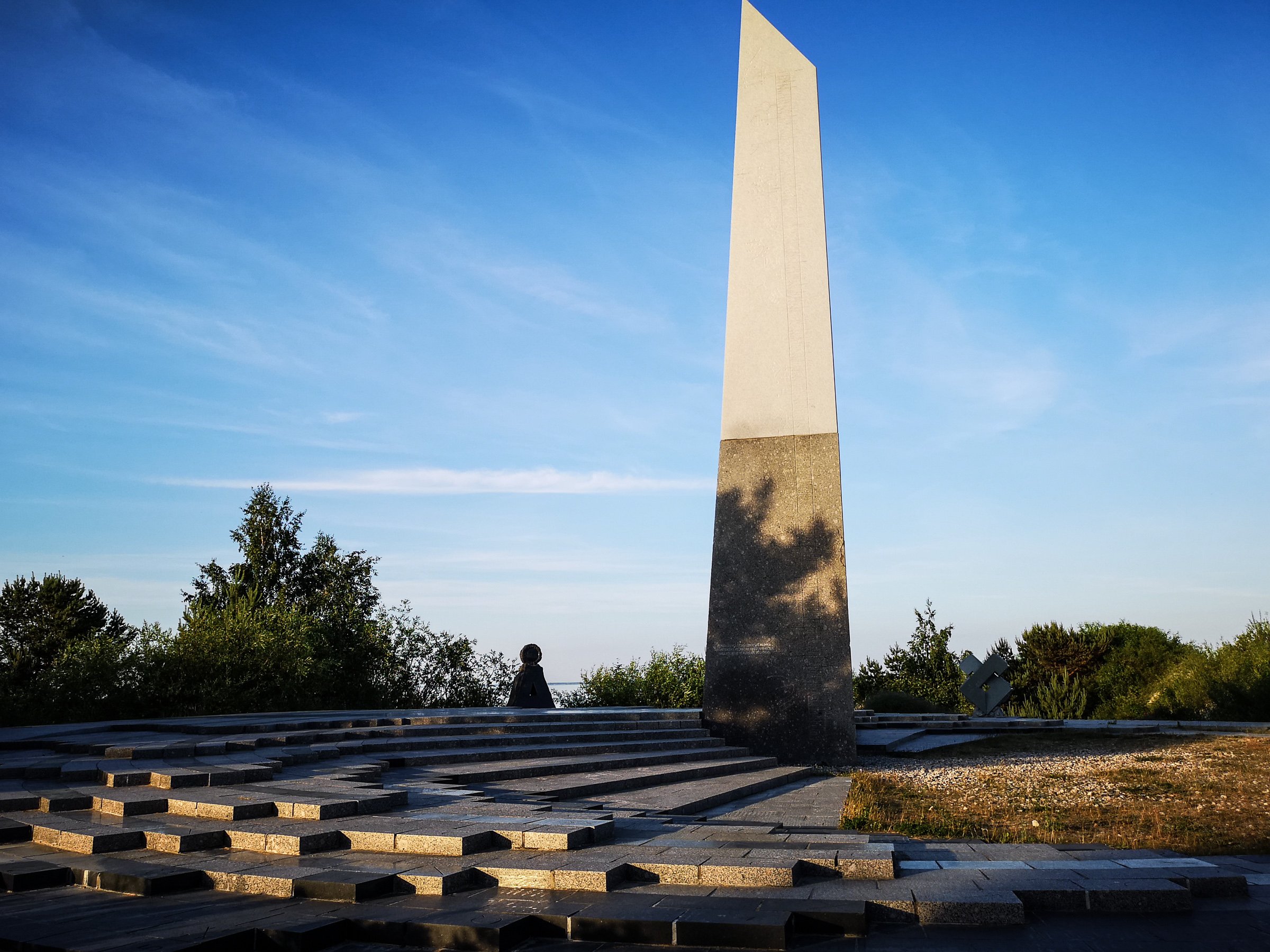
|
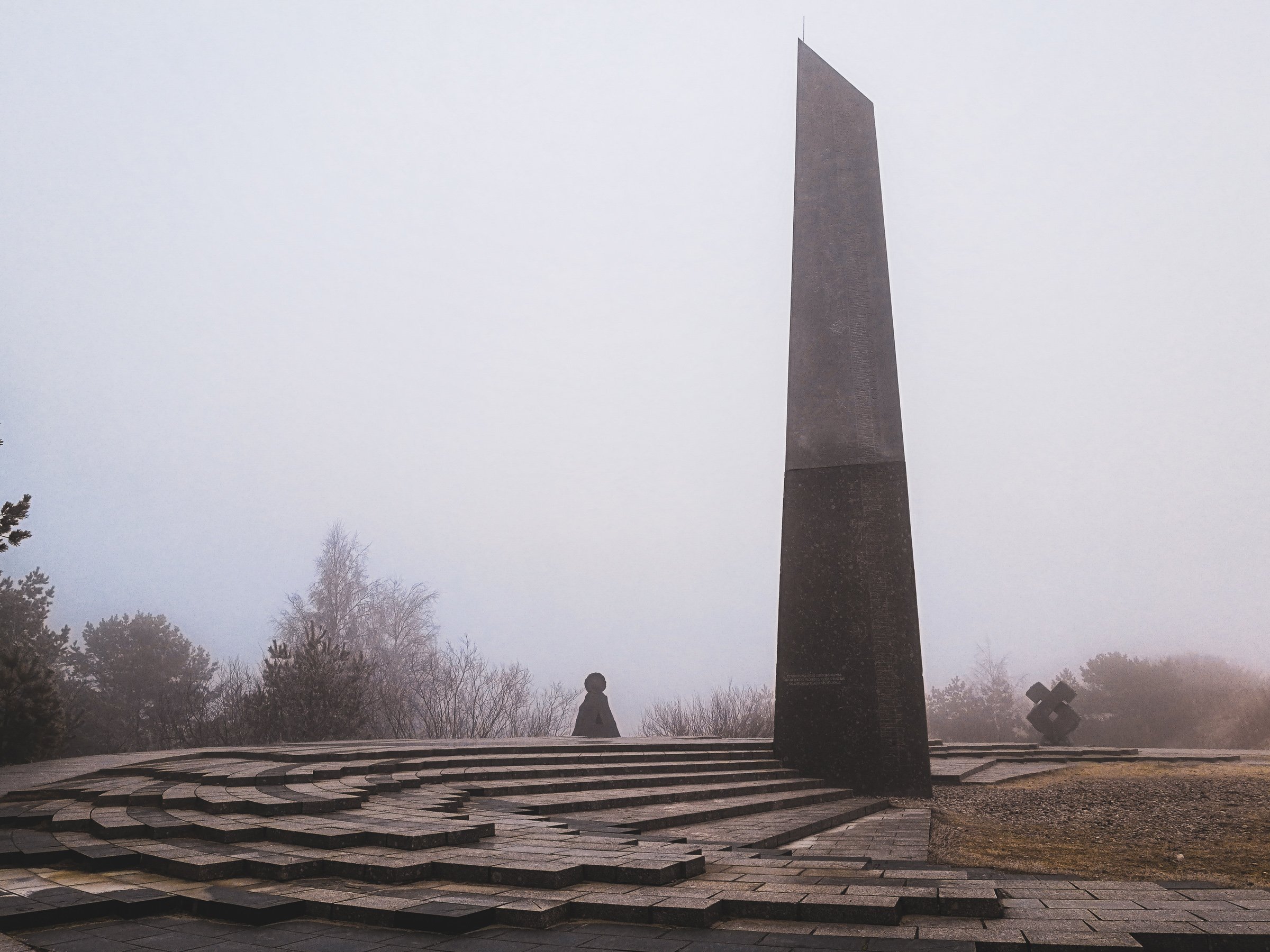
|
|---|
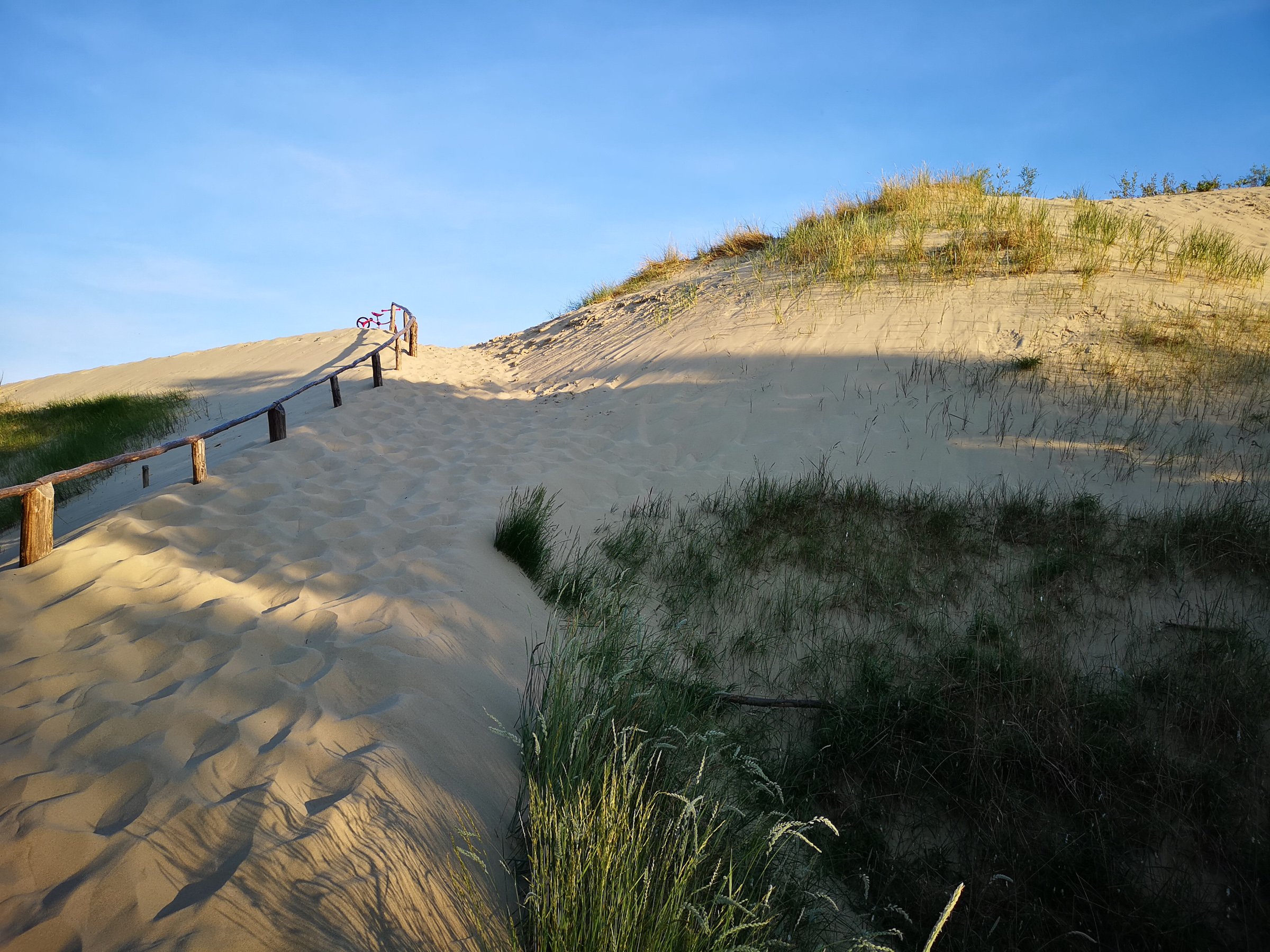
|
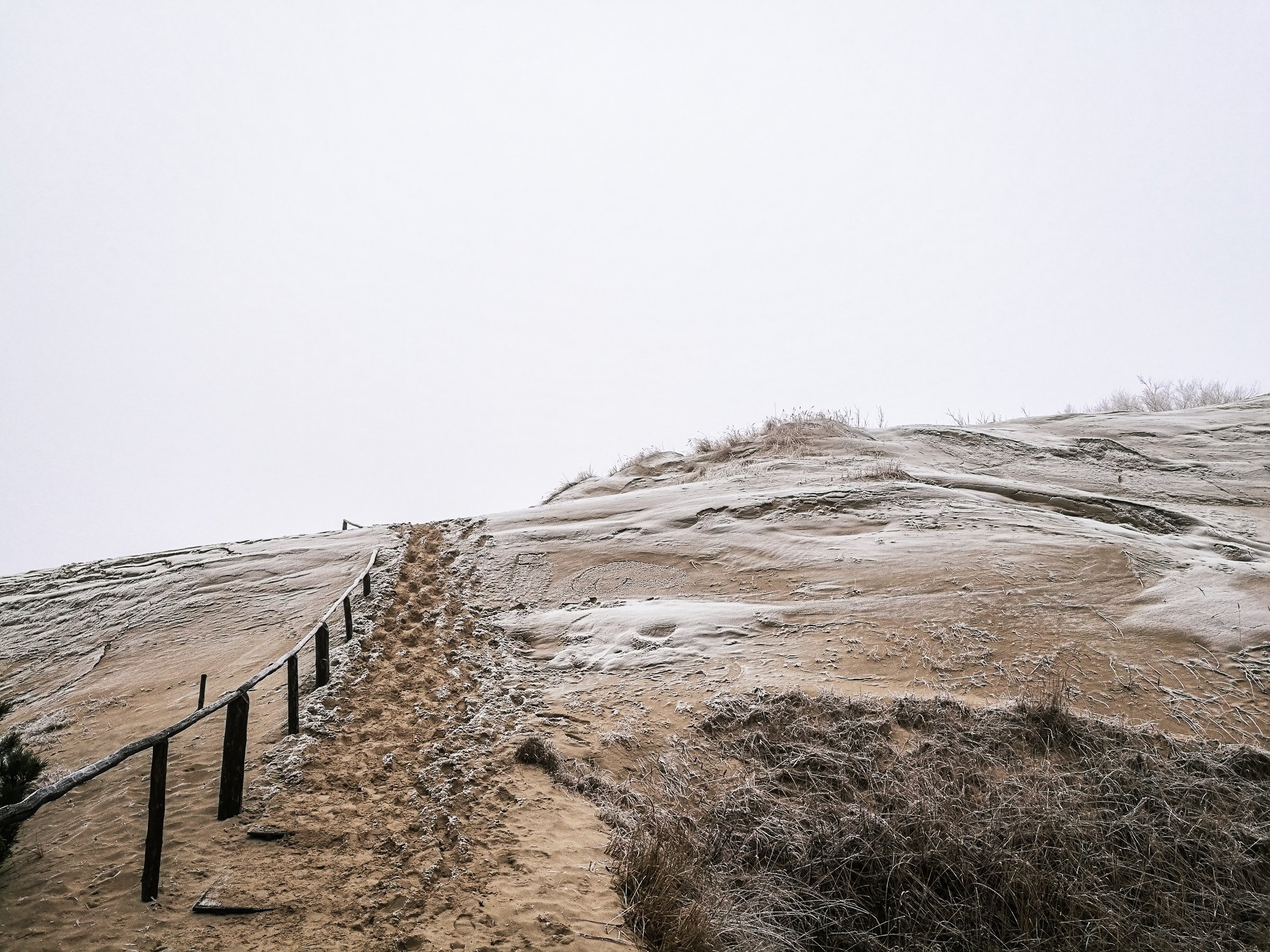
|
|---|
The golden dunes are dead, long live the frozen dunes
Even the amber sands get frozen and the ever-changing landscape stops in time as well. Nevertheless, all of this makes the place even more magnificent, the contrast between the seasons makes one cherish the balance of the nature we live in. And even though everything around you seems to be lost forever, it always bounces back. It is like a phoenix, incapable of the burdens of his own sins, bursts into the death until it rejuvenates for a new life, the cycle repeats.
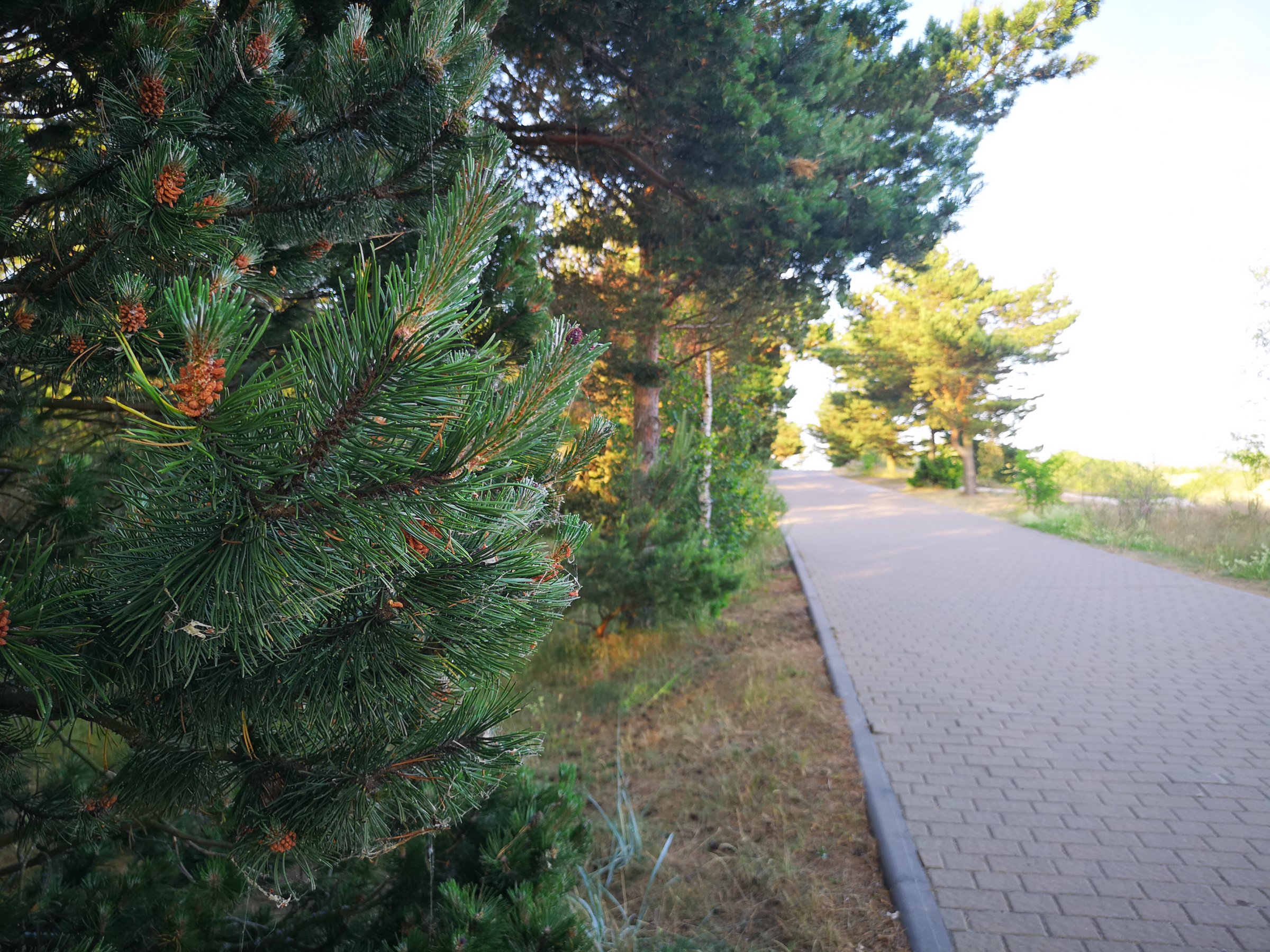
|
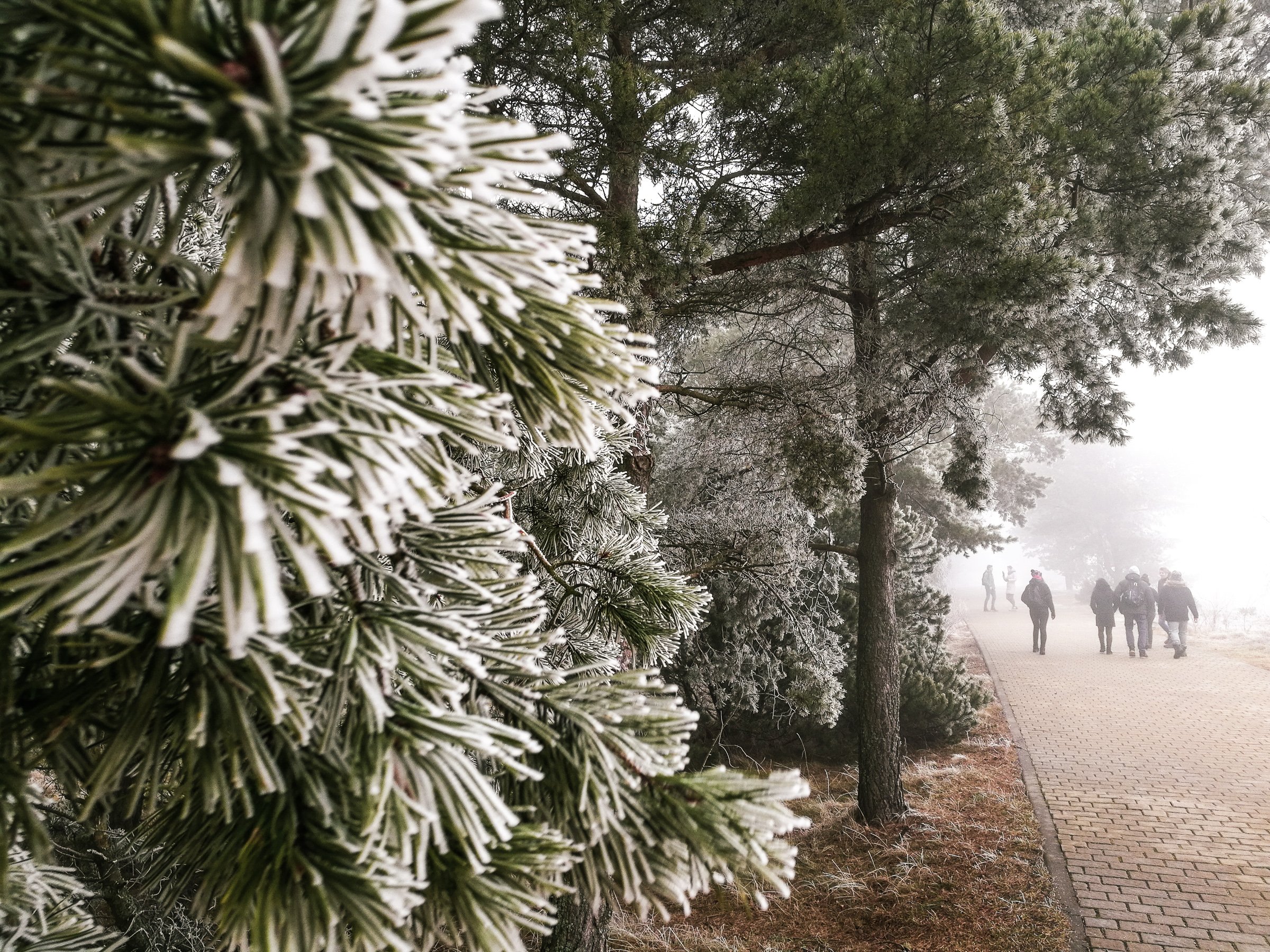
|
|---|
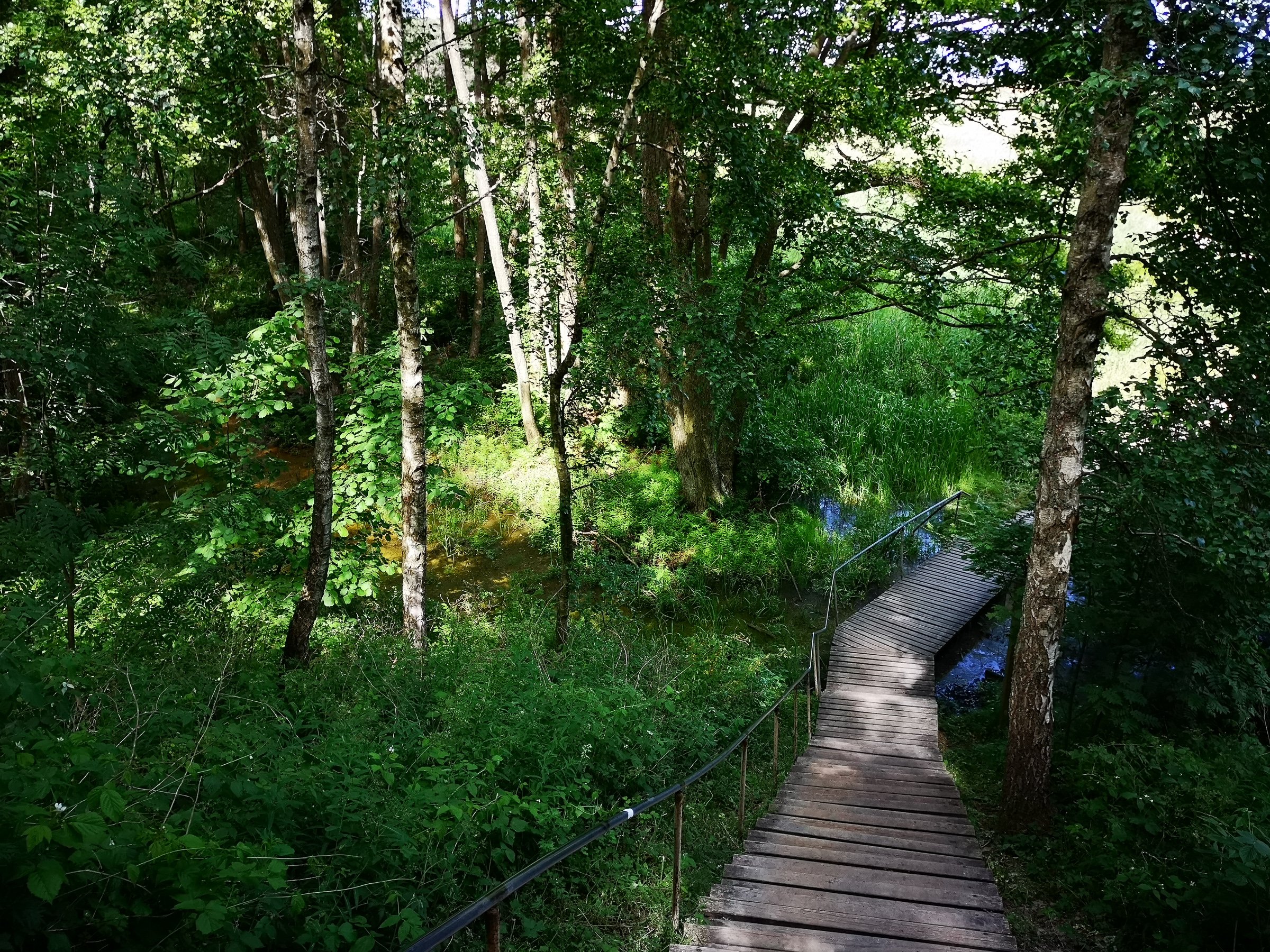
|
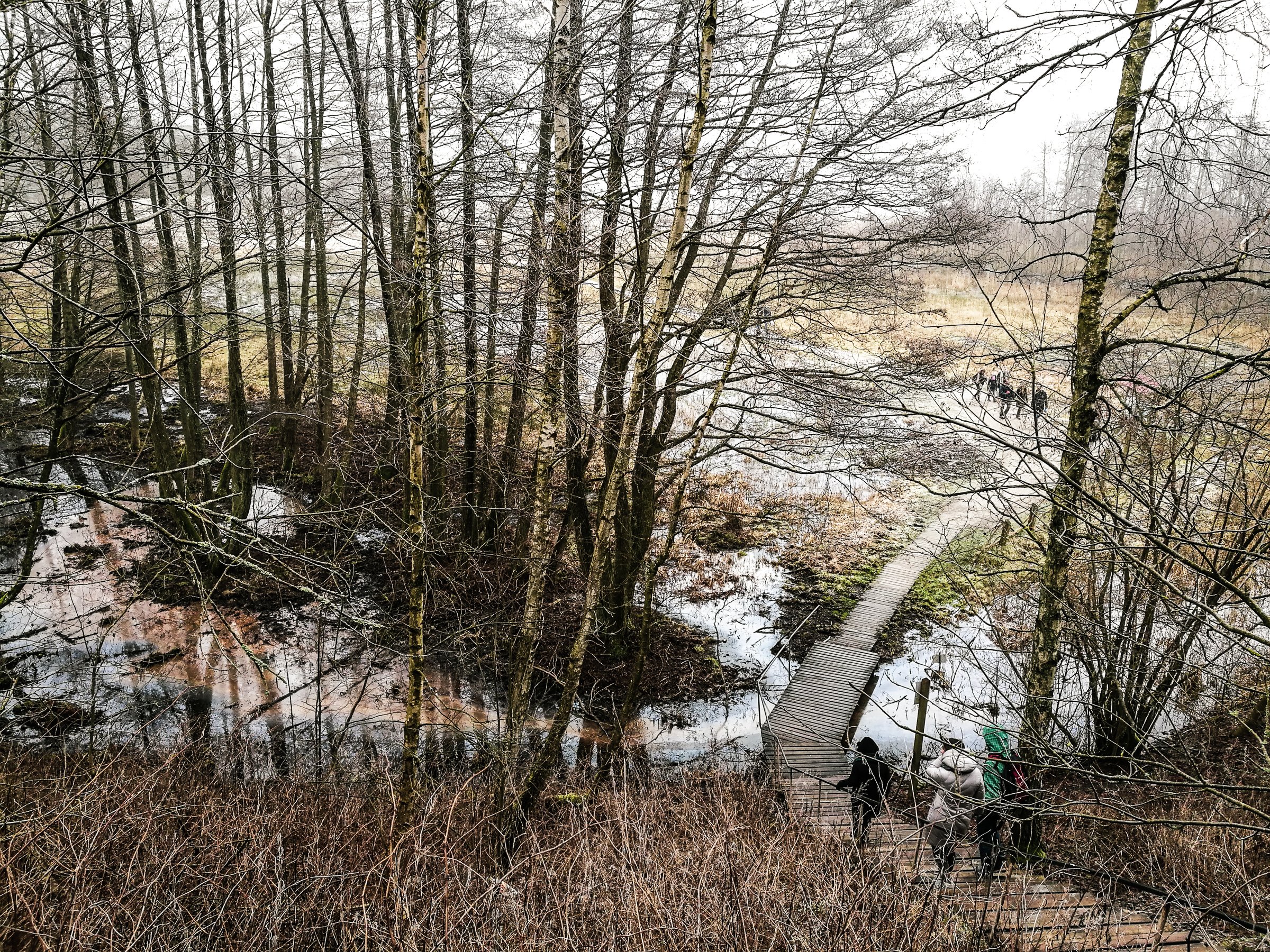
|
|---|
The entrance
There are two main entrances to the Parnidis Dune, which is the attraction point of the Golden dunes, one through the start of Parnidis educational track from the lagoon side through the valley of silence - lively meadows full of mosquitos and other lifeforms - until it reaches the stairs, where you can climb the Dune by yourself, the other access is from the seaside and you can drive up that road by your car almost to the sun clock, obviously, it’s not challenging at all, but a good path for older or lazy people. There is a third path, or should I say paths? Golden dunes are also accessible through a forest maze and is the best way for more adventurous people.
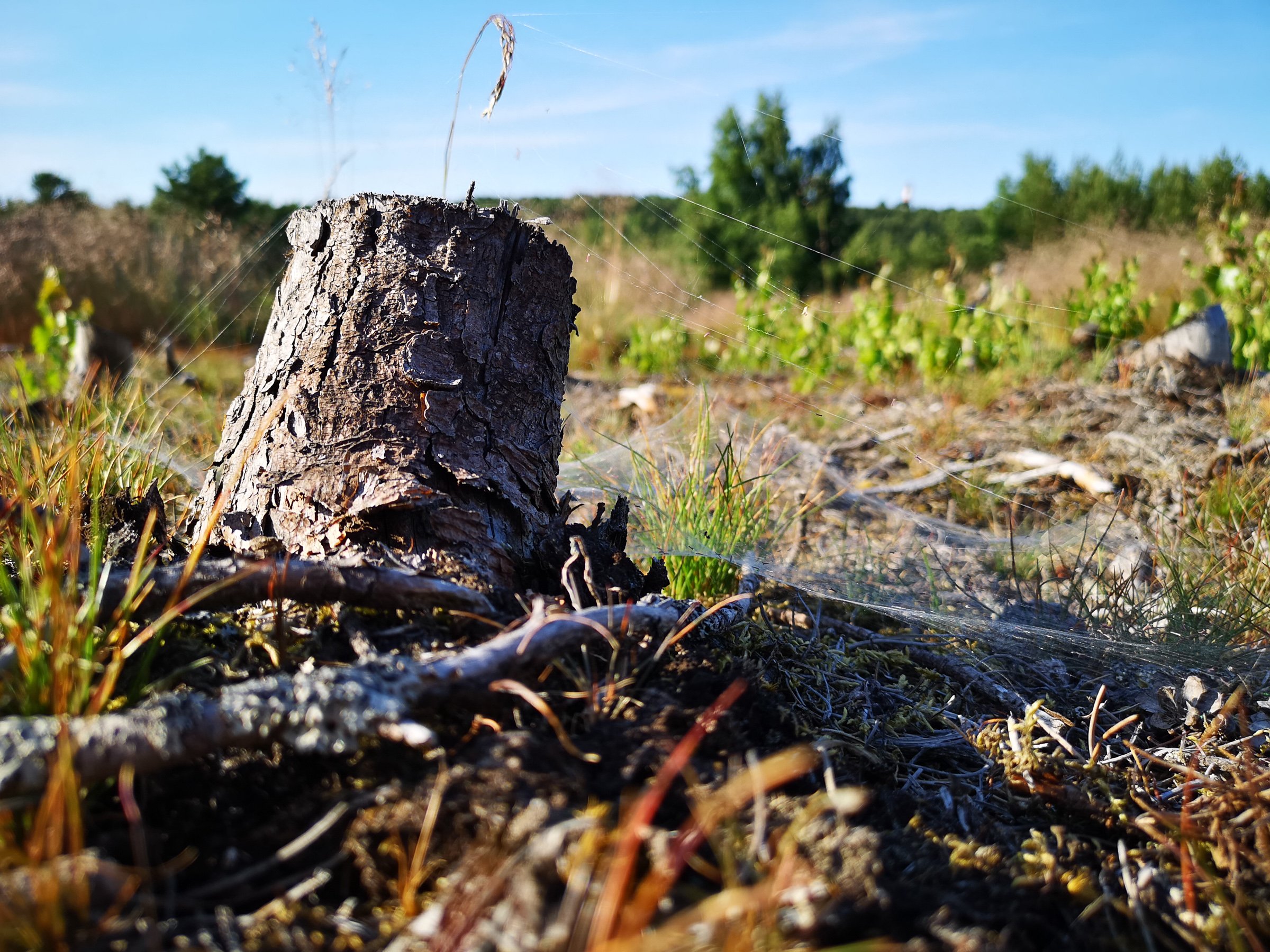
The life
It was a sunny day and no wonder I chose to go through the forest where to my surprise I met only two people who were at the end of Parnidis educational track. Anyway, sometimes it is even better when I get left alone with nature. I can explore without any disturbance.
In the moments like this, I really love using maps to find some hidden gems. And there are plenty of them here in Nida. That day my exploration resulted in finding two amazing points where the beautiful panorama of Curonian Spit opens in front you.
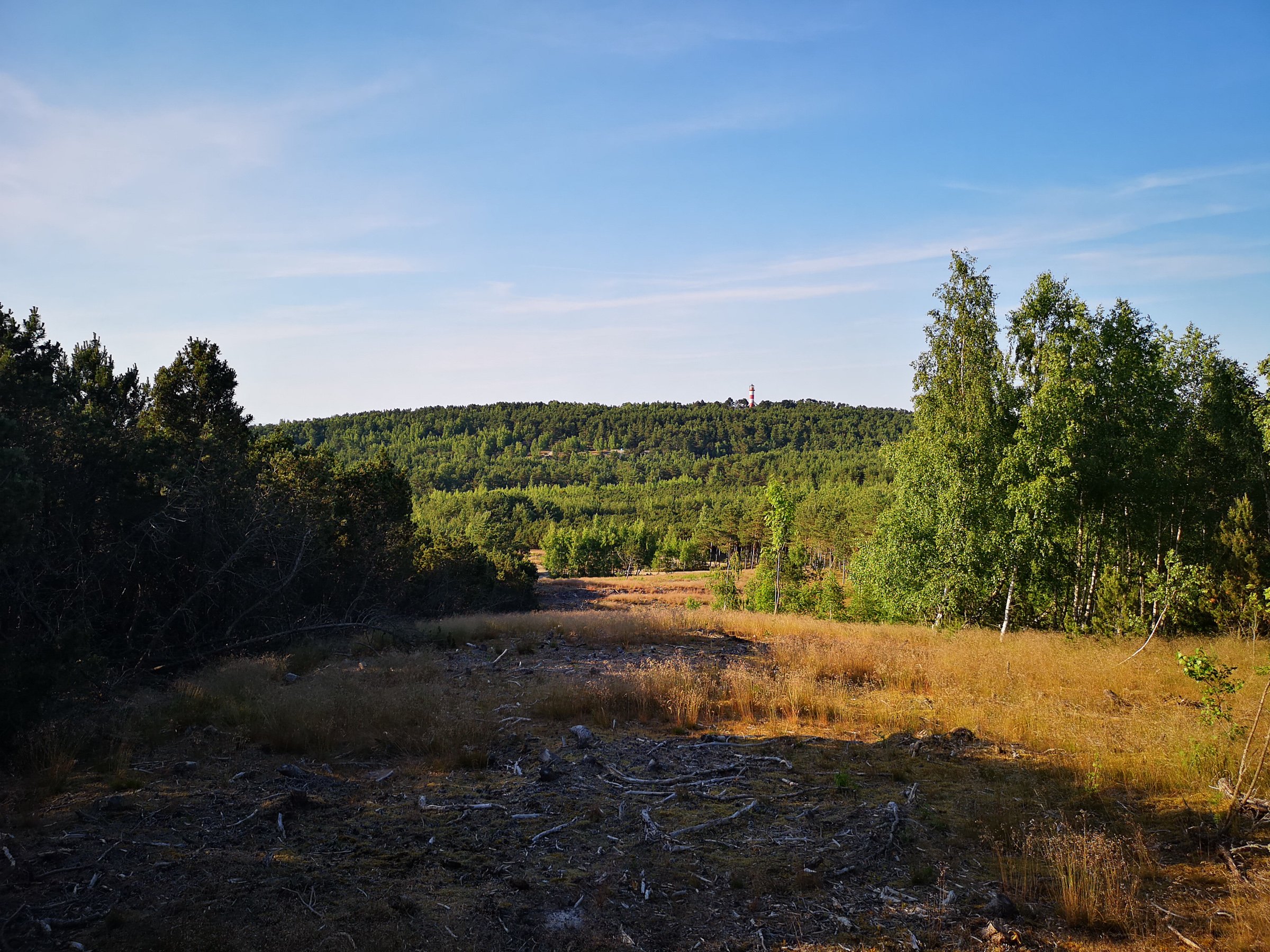
One is accessible through a dry yet lively field of low grasses full of sneaky spiders on their webs praying on their victims. Had to walk carefully as it is never my interest to disturb the natural flow of nature. At the observation point, you can find a bench with a view toward the inland of the Curonian Spit and Nida lighthouse on Urbas hill – an old dune forested by humans. The place was an amazing spot for some yoga exercises and taking shots.
The second observation point is even better, it provides you a view to the Mergelis exposure and the lagoon, it is hard to take a picture of the full landscape you see as it is covered by trees, but believe, it is amazing. I even tried to climb a tree to make a better shot, but the pine was full of branches, so I couldn’t find an opening for a shot and getting to the top of it didn’t look like the best idea.
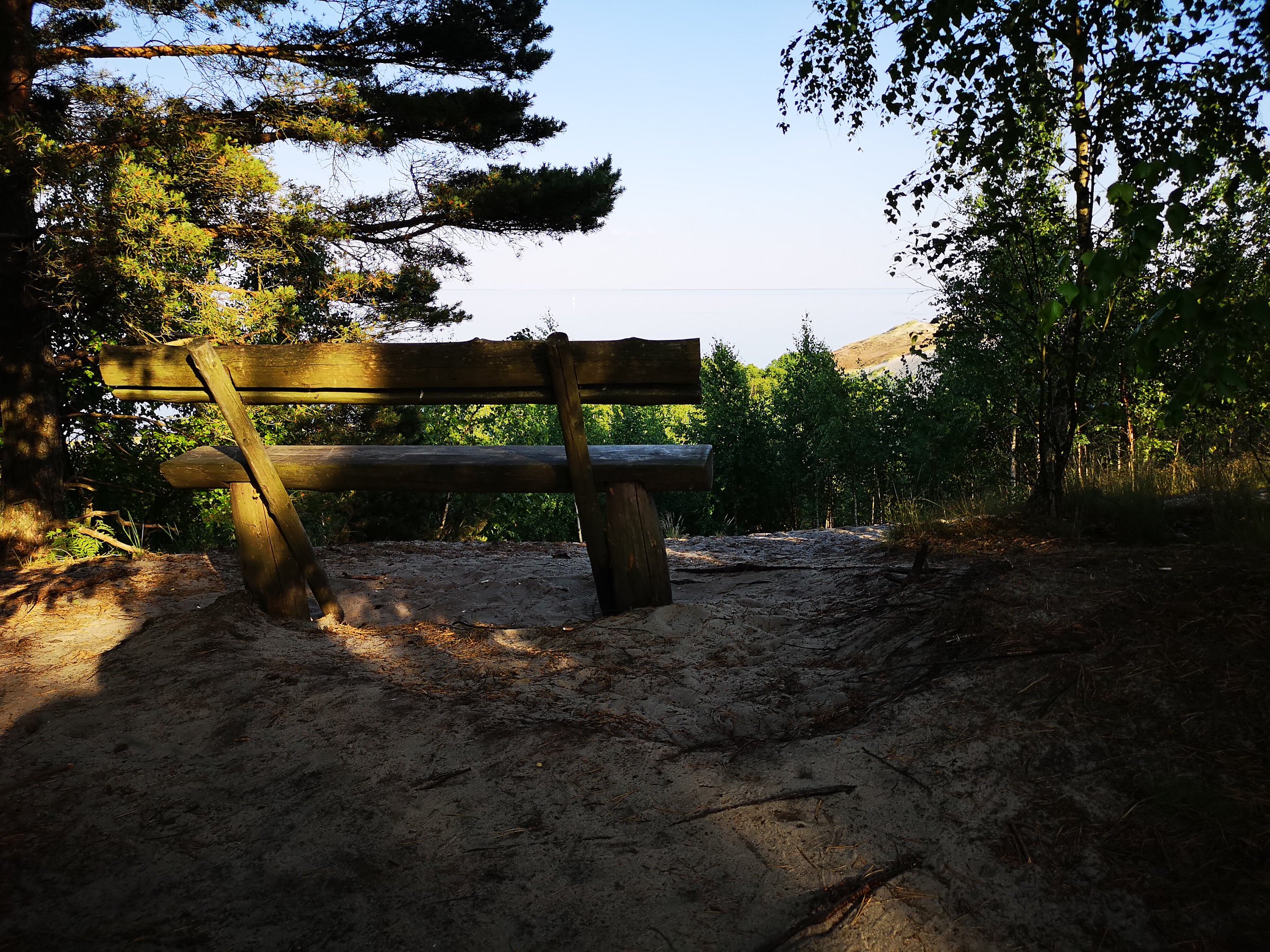
Oh, a bench stands here as well. The place was so amazing that I decided to open a can of cold beer and work for a bit with my computer. After an hour of a truly enjoyable work, I moved on to the Golden Dunes where I took some shots before meeting my friends.
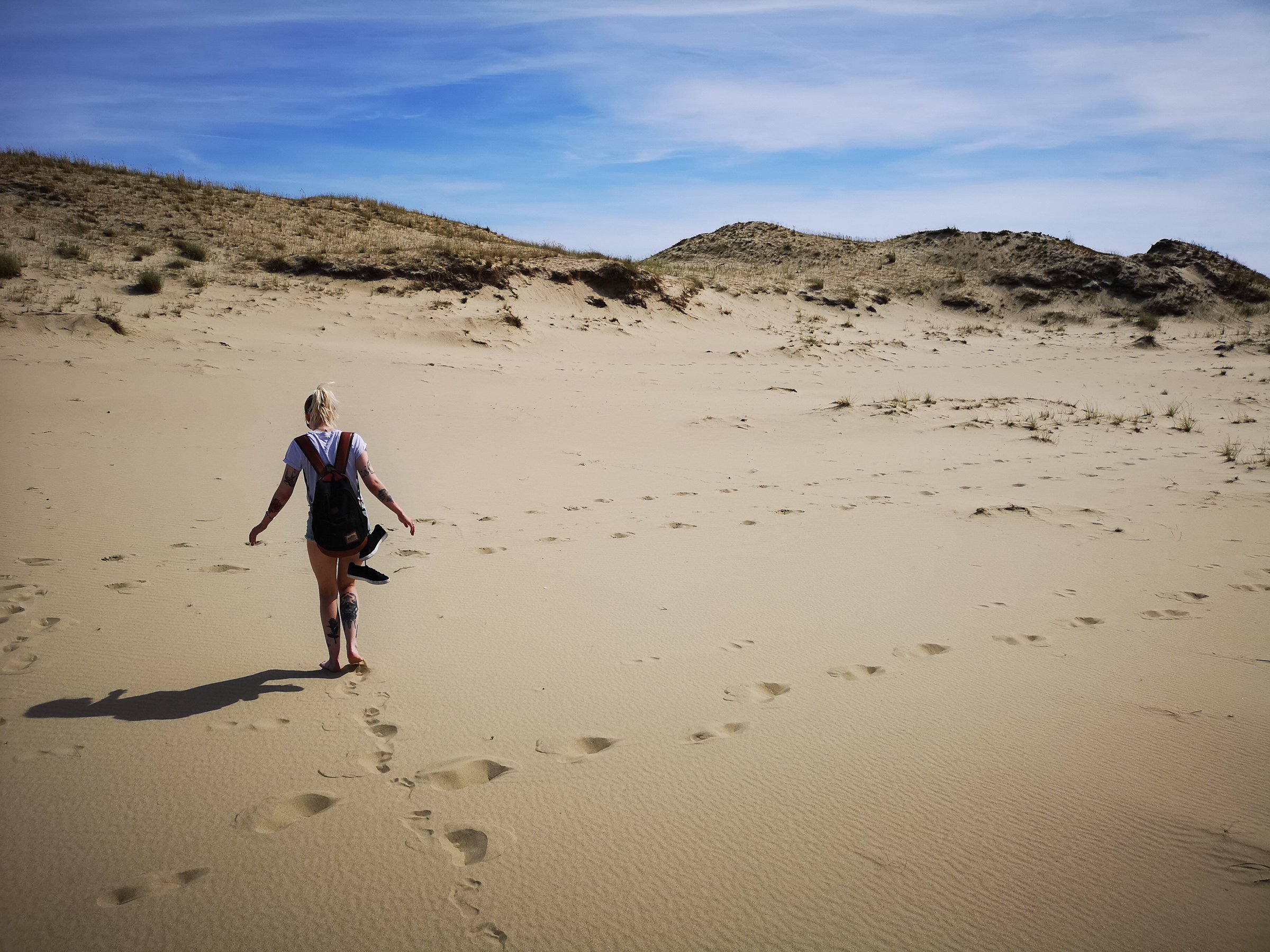
The valley of death
From Parnidis Dune you can descend into the valley of death, which is between Parnidis and Sklandytojų (eng. Gliders) dunes. This part is just breath-taking, I won’t talk much an I’ll let the place to talk for itself.
At this part of the year, the valley doesn’t seem to be dead at all, you can meet a lot of people doing their things. Well except maybe this part.
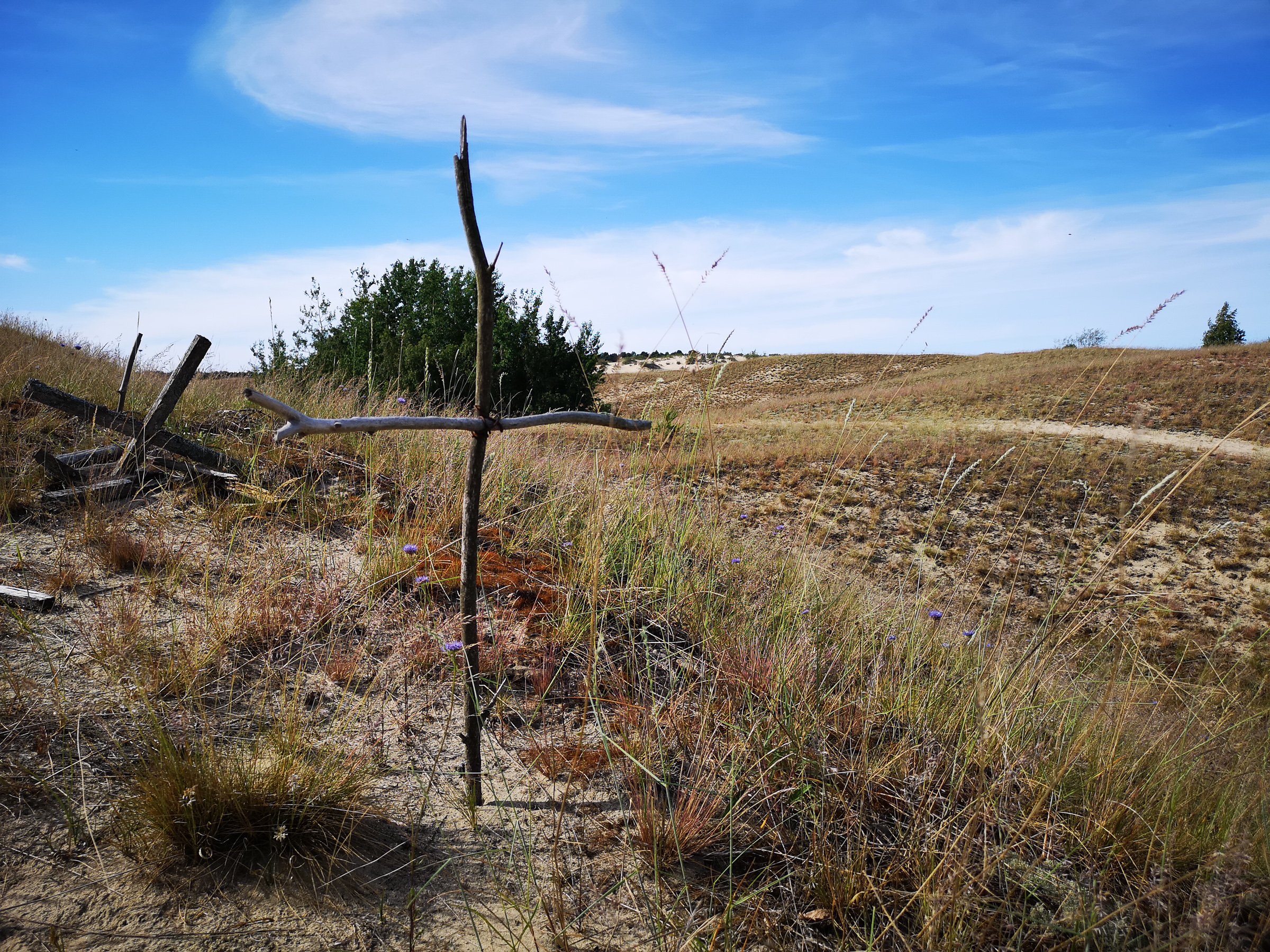
Through the valley of death, we descended to the Curonian lagoon, where you can find some of the most beautiful beaches in Lithuania. Though they have no name, I would call them the birch beaches and for obvious reasons. They grow here like palms. I wouldn’t recommend swimming in the lagoon, as it is even more contaminated than the Baltic Sea, but the place is well-worth visiting for its beauty and the vibe.
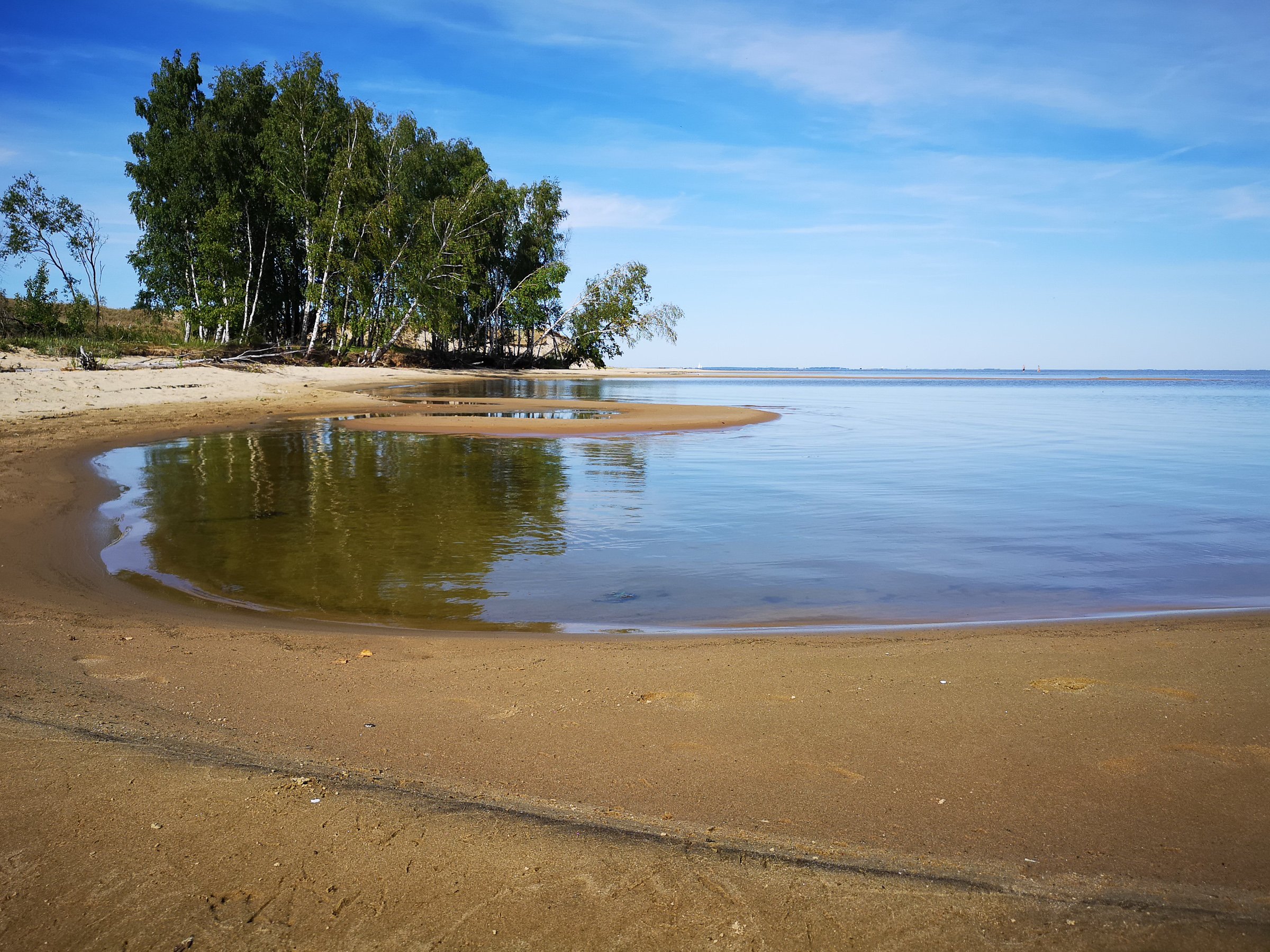
We sat down to hide from the Sun at least for a while as it was a hot summer day. A great company is inevitable here, the place itself obsesses you into your best mood, everything seems to be positive and all you want to is to smile, to share the moment, to feel love.
Time doesn’t exist at this point as well, you just get lost in euphoria, the impossibility of problems. Under those conditions, we are just not evolved to care much about anything but the given moment.
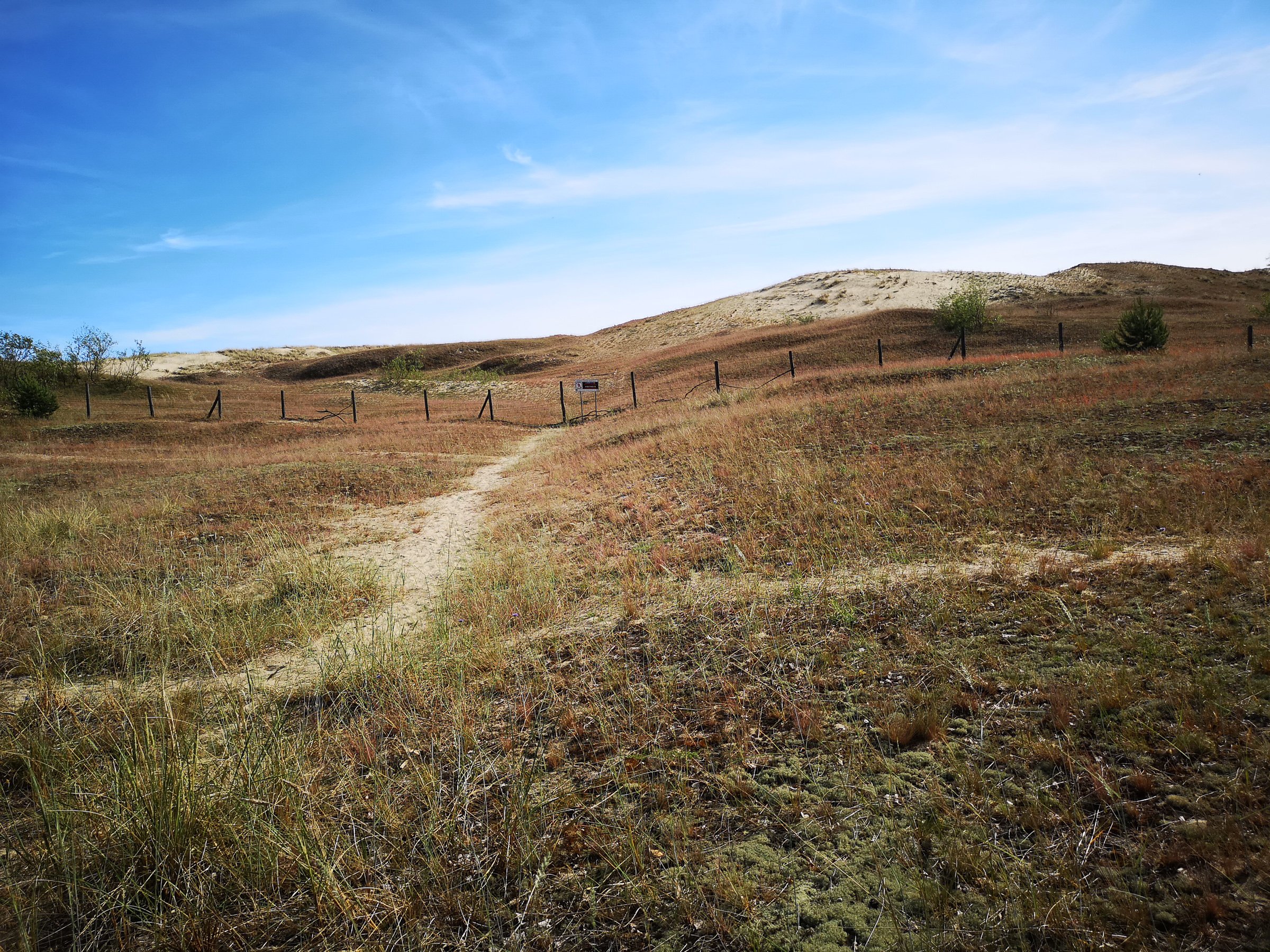
Further down a path, just before the Sklandytojai Dune, you find yourself against reservoir fence, this reservoir not only protects the nature but is the border between Lithuania and Russia.
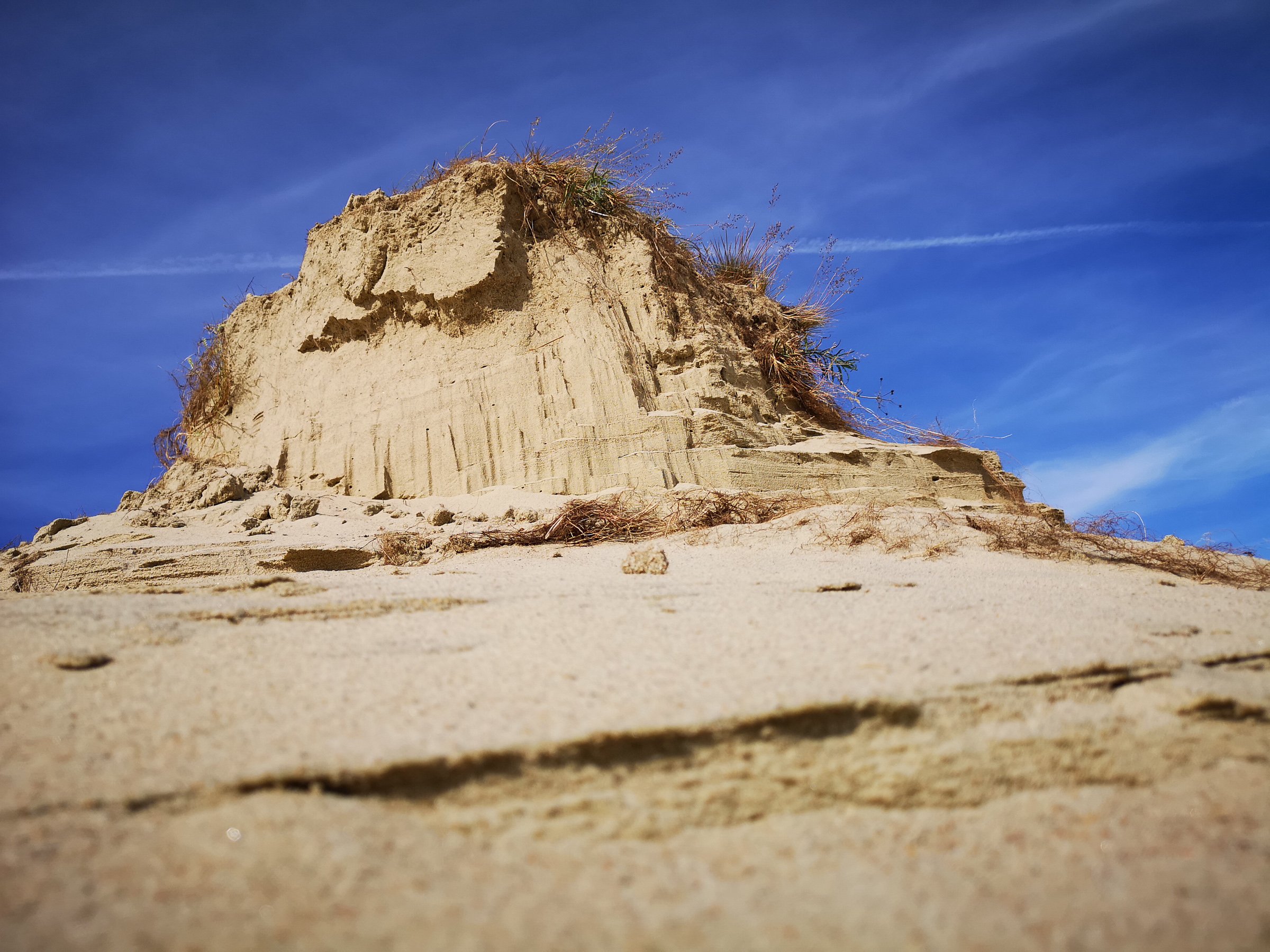
The obstacle doesn’t matter as much as you might think, one can walk in the valley of death in circles and it will always feel like in a new place. In this sandy maze, everything is rapidly shifting, not only the landscape but your life as well. It is an amazing place to relax and fix the damage done to you by the stress and other nasty stuff. Just sit down and observe the ever-changing environment and you won’t notice how quickly it will consume you.
I’m alive.
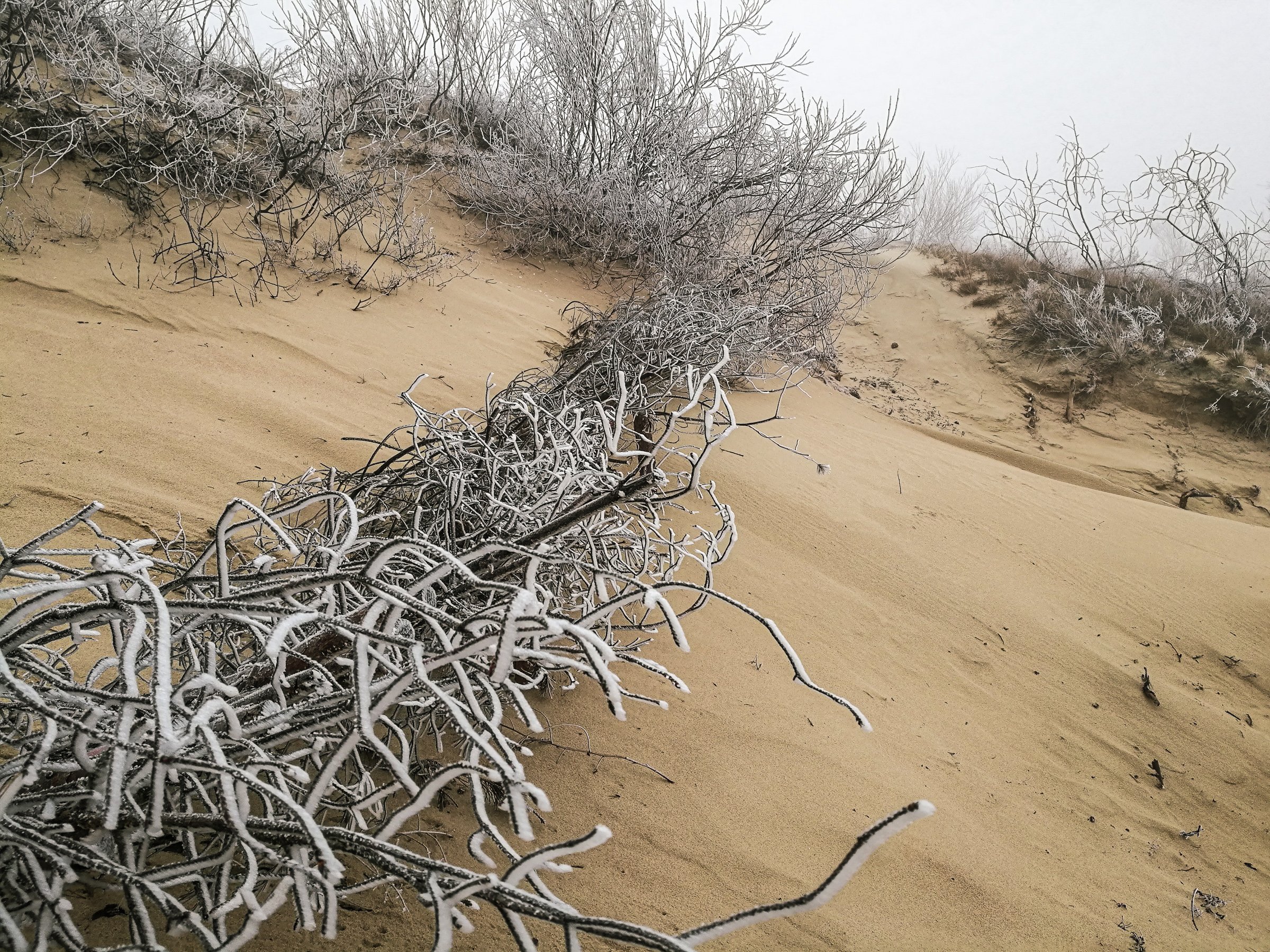
The Death
The sense of death comes not from someone dying or the pain inflicted upon someone, the death comes from the impossibility of creation, the absence of life, a lifeless Earth. This is as close as I ever felt like an astronaut visiting those planets, where the life was never brought upon. You cannot help yourself, but to feel like the only thing sustaining you here is the energy you stored in your body before, somewhere else, definitely not here. I Am dying, these conditions cannot lead somewhere else.
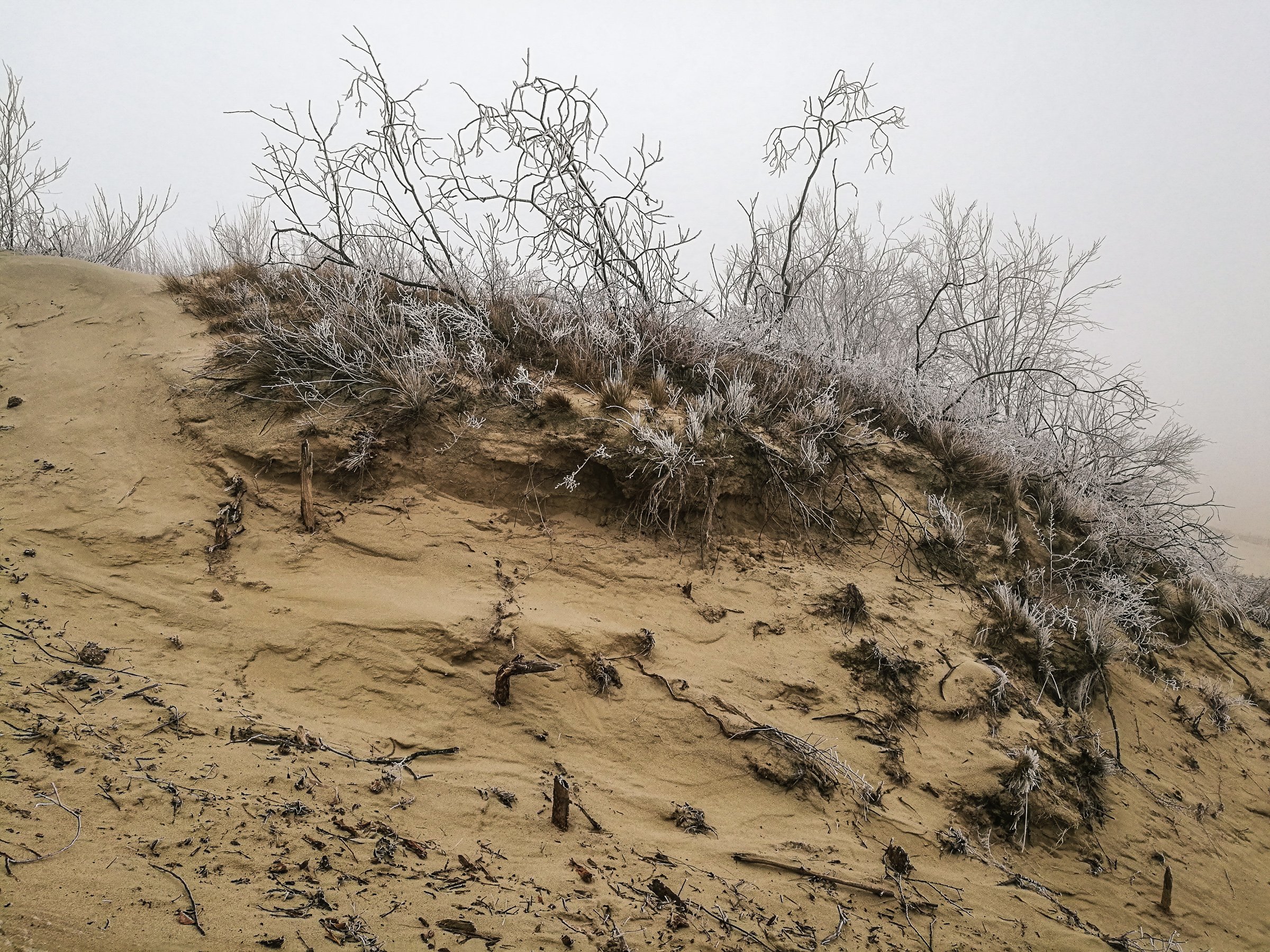
It doesn’t matter which way I go, it doesn’t feel either right or wrong. Being in space-time without time feels like space does not matter much either.
It is hard to tell how much time we spent there, it was really cold as well – end of January - the coldest period in Lithuania. For that very reason, nobody is here, the sundial stands alone, stripped of its purpose. The fog of shadow engulfs everything, even my soul.
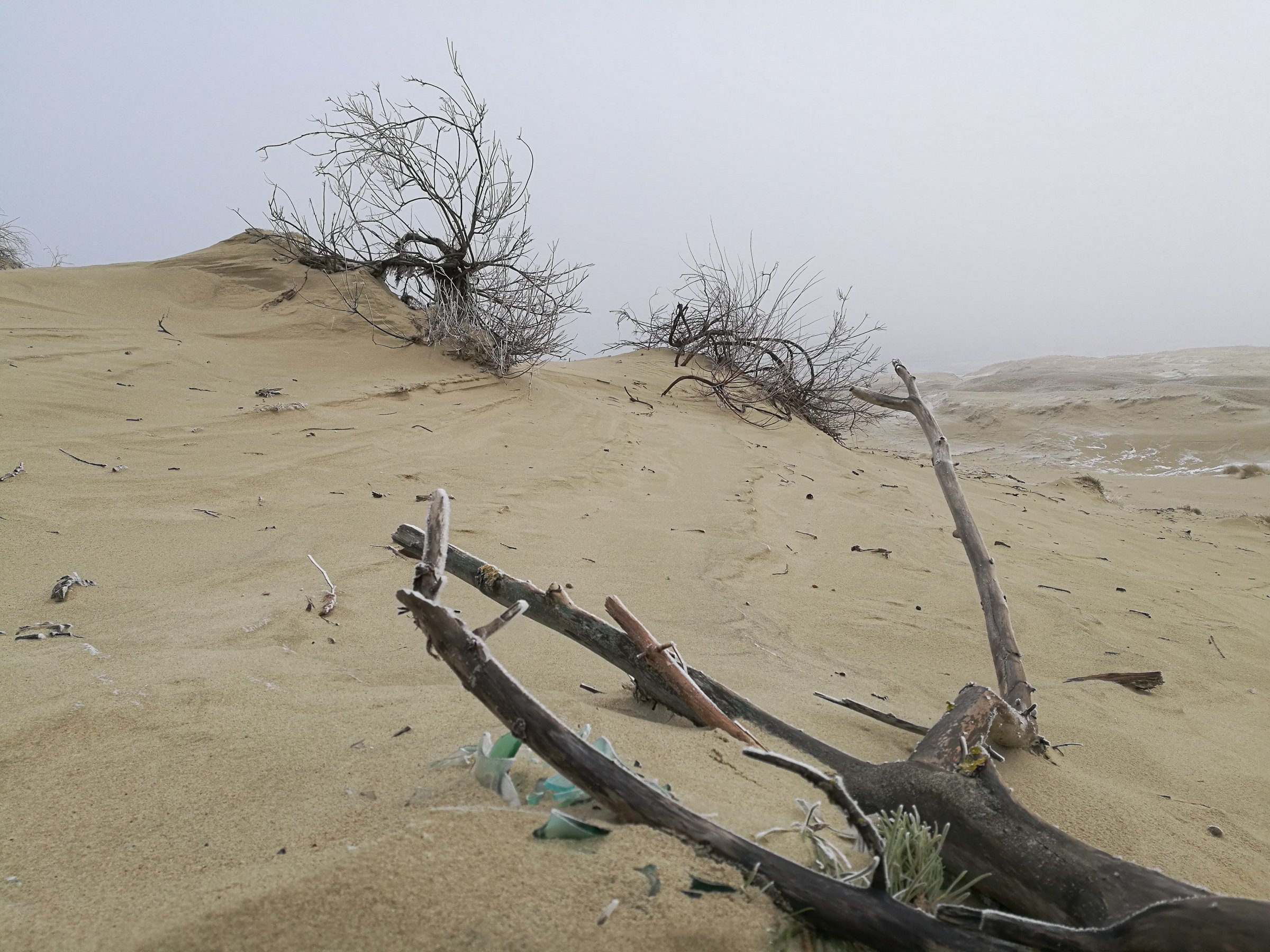
In the moments like this, I start asking myself what I have done to end up in a place like this and what is ahead. It is hard to imagine that there IS something ahead. Even the will for drinking water dries-up and in order to warm-up, strong liquors takes its place. I stopped feeling, I stopped caring or regretting. As I sank deeper and deeper, the only thing I understood, that this is not life.
The valley of Death
As I mentioned before this is the perfect time of a year to understand the name of this place. Once I entered it, it seems like it had no end. My vision was very limited and all I could do was to plan only a few steps ahead. Deep inside, soon, I forgot where I came from. Parnidis dune with its clock disappeared in the memories of fog as well.
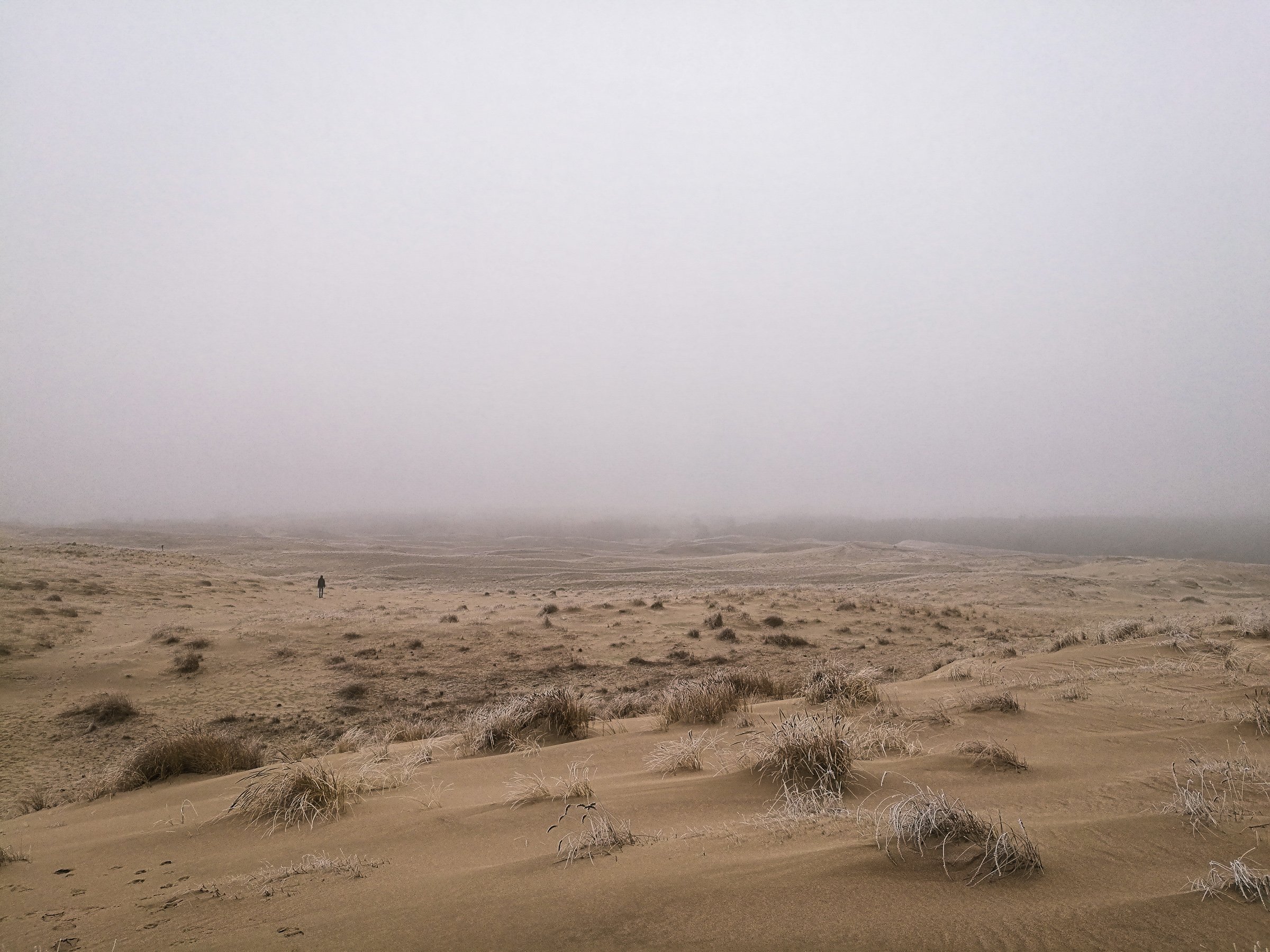
I’m lost.
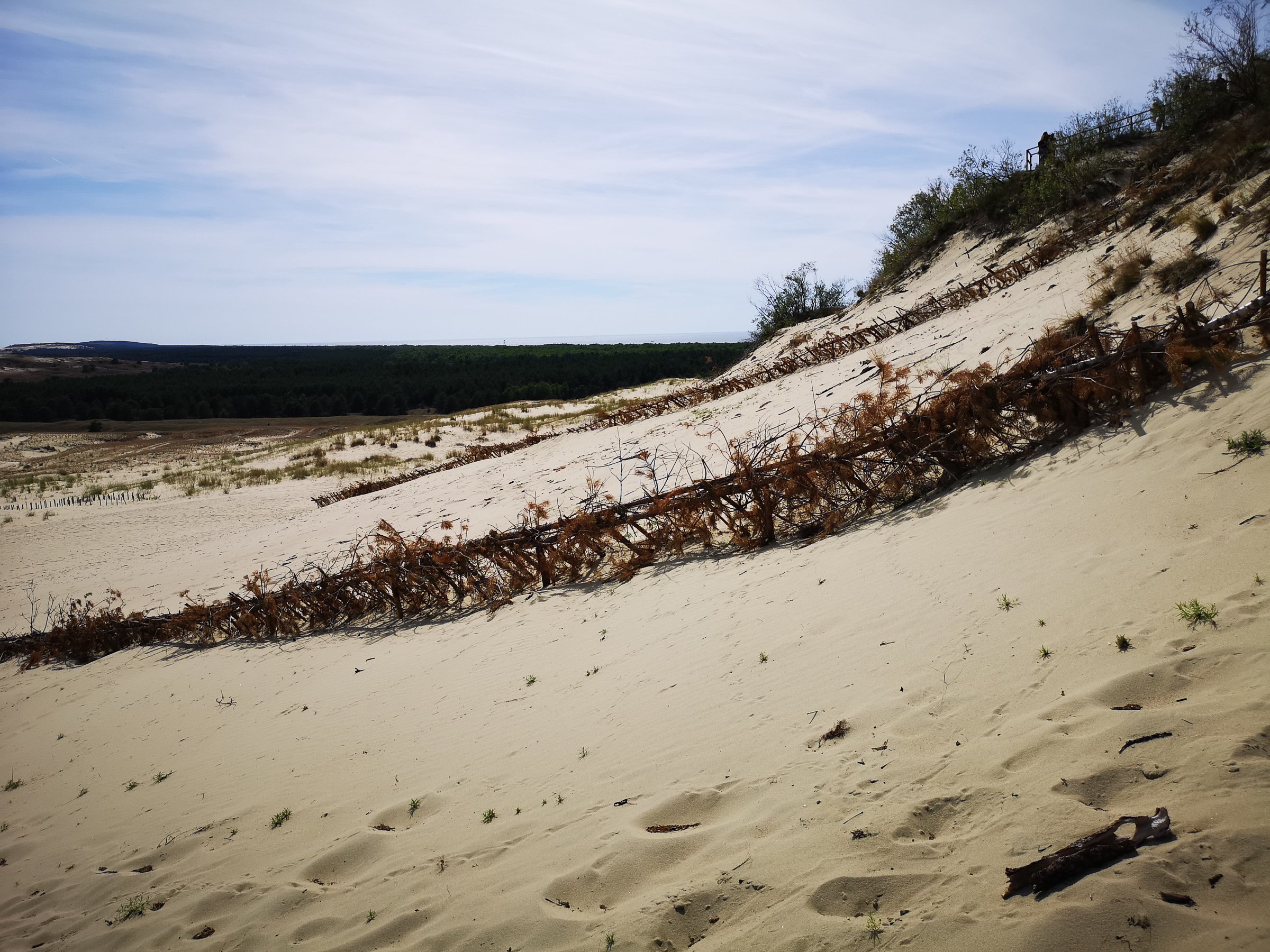
|
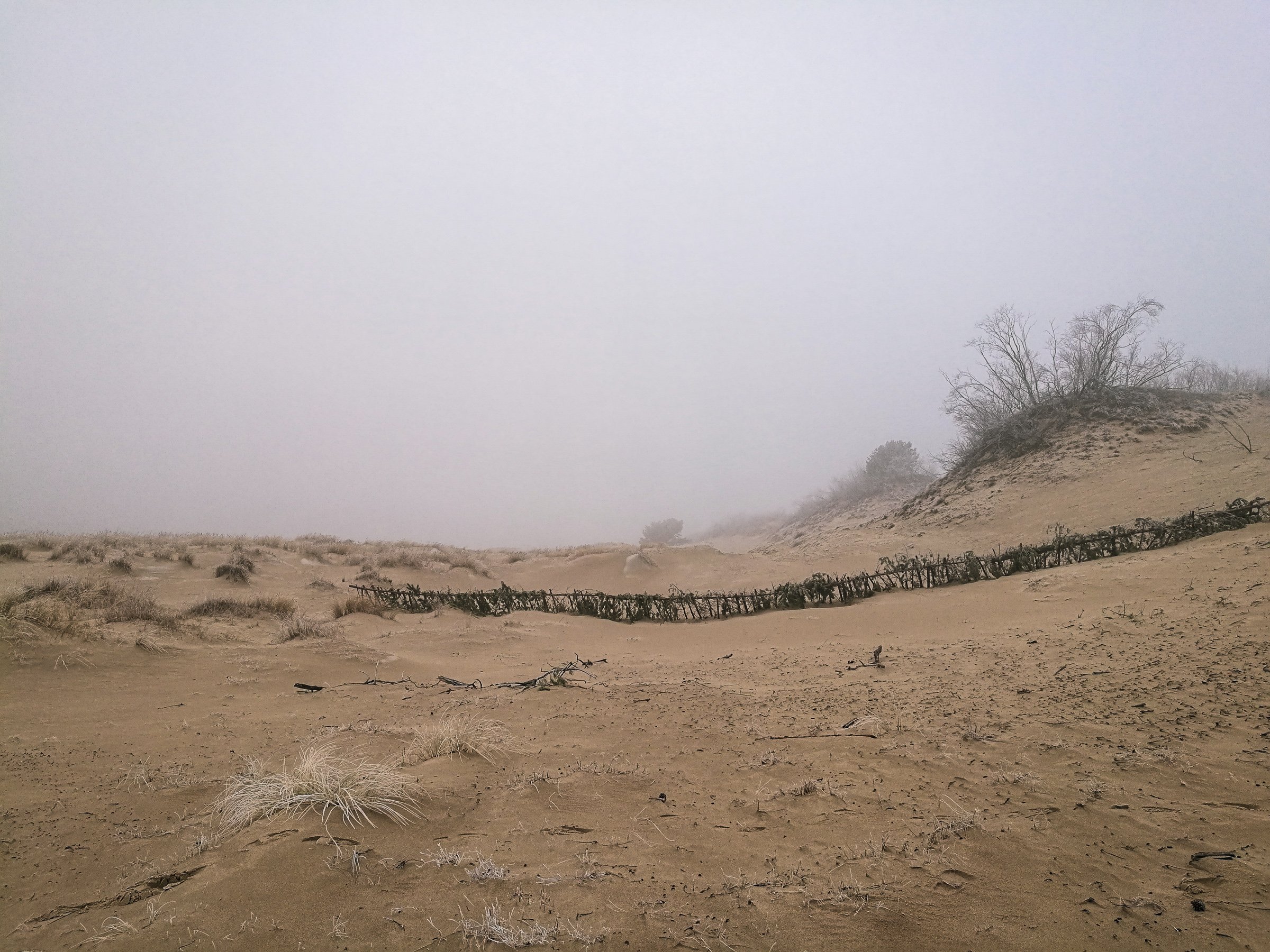
|
|---|
The Rebirth
It was hard to move, hard to breathe, hard to smile, impossible to exists, impossible not to enjoy. There is something wired in humans that when we suffer we feel sort of satisfaction – pride at being capable of enduring the hard conditions. Something super counter-intuitive, but something which looks way more real than the joy I see in people faces when I see them in comfortable conditions. Those people seem to be so distant.. I’m not telling that I’m envious, unhappy or somewhat depressed, quite the opposite, I consider myself to be very fortunate and optimistic person. It’s just that there is something hidden in us – humans – the comradery which occurs in harsh conditions makes you feel like after a long time you are finally home.
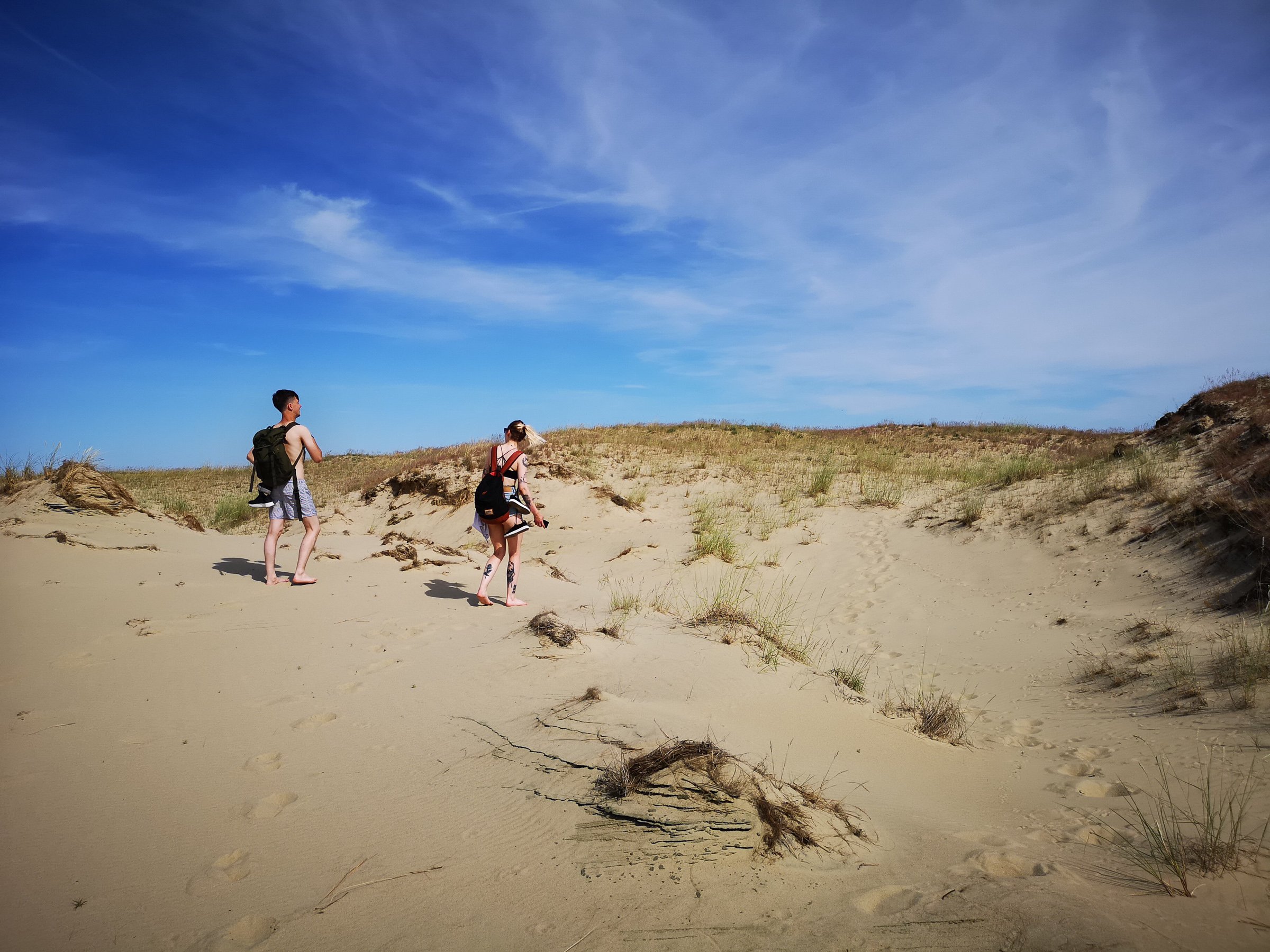
|
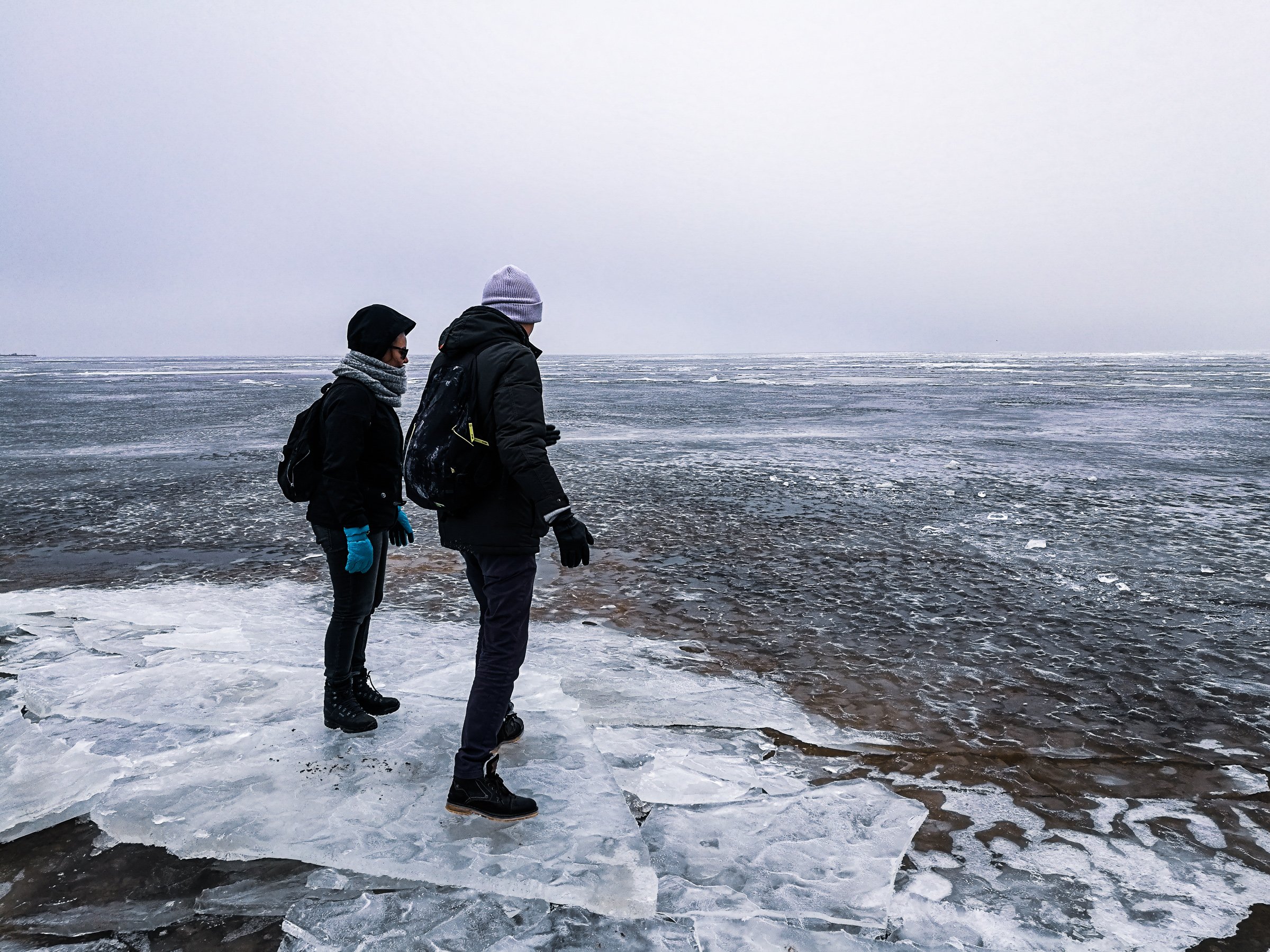
|
|---|
We are social animals, we evolved in communities, meaning, in conditions where we share and help each other. Modern pace of life is somewhat stripping us from our natural environment, which is not physical, but rather communal. You might have a good career and a bright future, based on widely used terms, but if you lose your connection to your close ones or simply the sense of being useful to anyone, you’ll get wrecked. In a sense of our ancestral natural environments, you are an outcast now and that can’t be good.
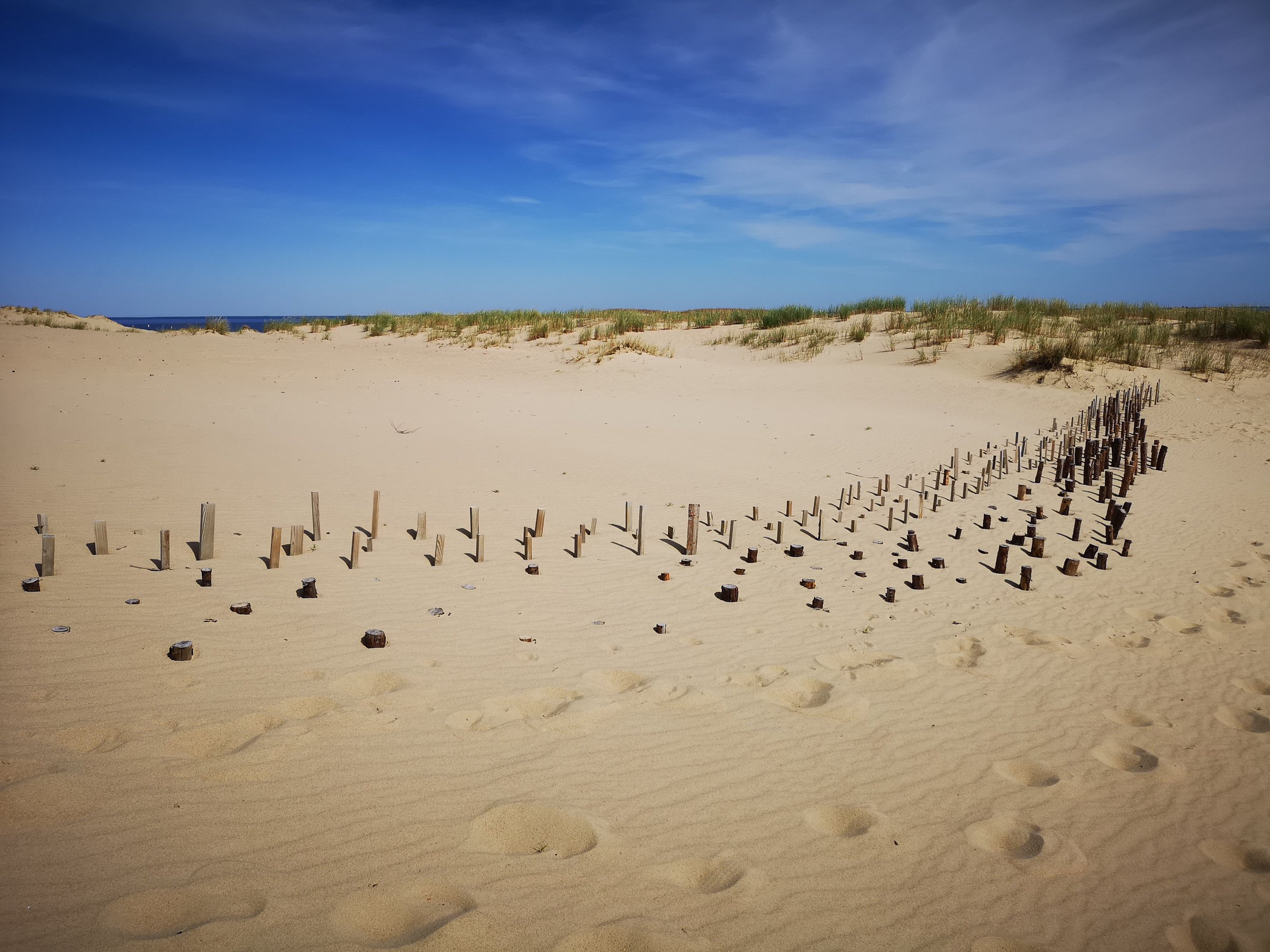
|
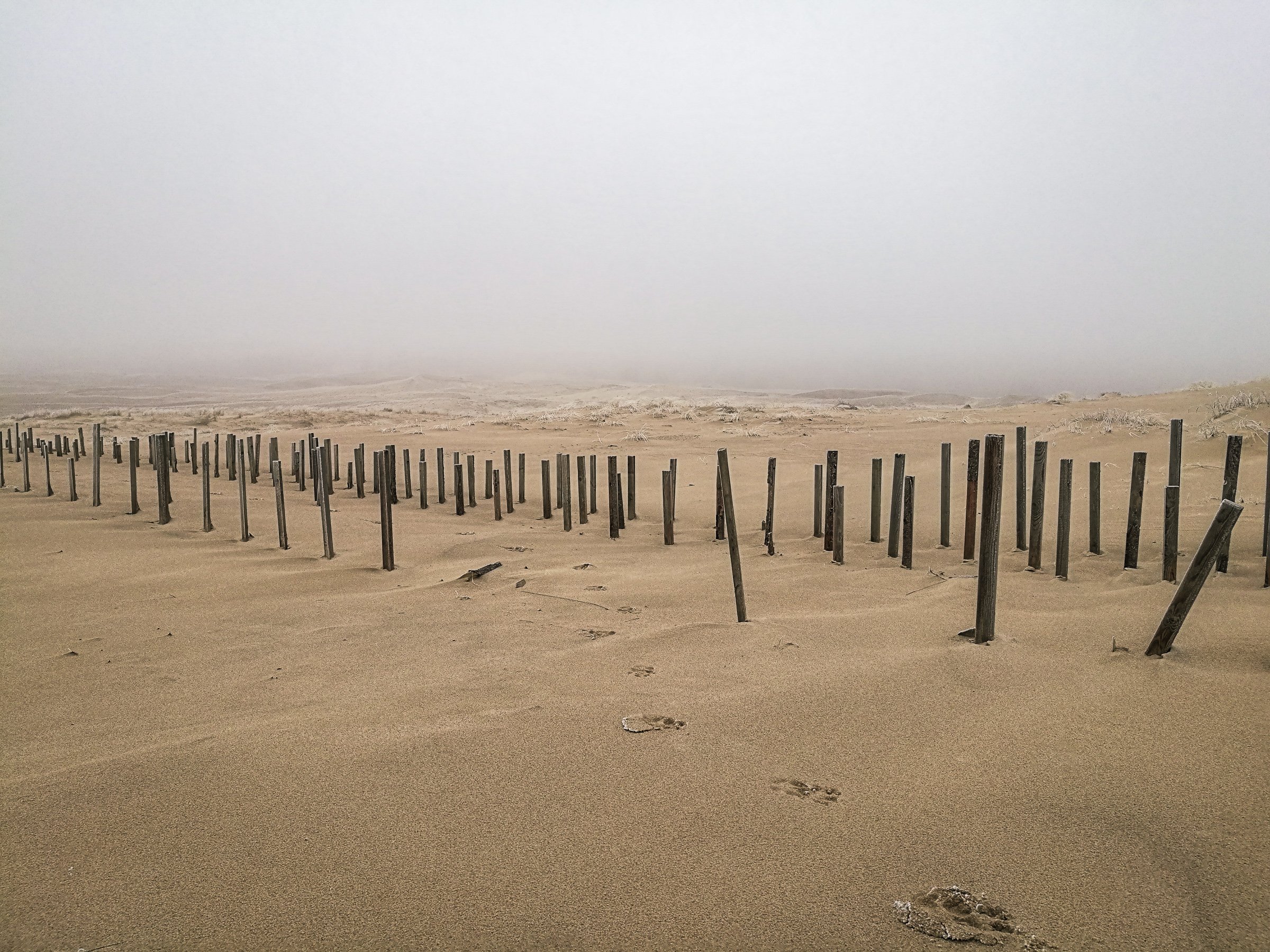
|
|---|
Under same principles in harsher conditions, some deep mechanisms seem to wake up and people start to rely more on each other. And even if it does occur under positive conditions it is way less likely for people to realize and appreciate it. We don’t question the reality out of happiness.
The opposite conditions can result in quite different results, the brotherhood of soldiers, bounded spirits of true explorers, victims of war, they all feel nostalgic toward the struggle and comradery of harsher times, because it is closer to our nature than leisure and comfort. We are simply eating too many apples.
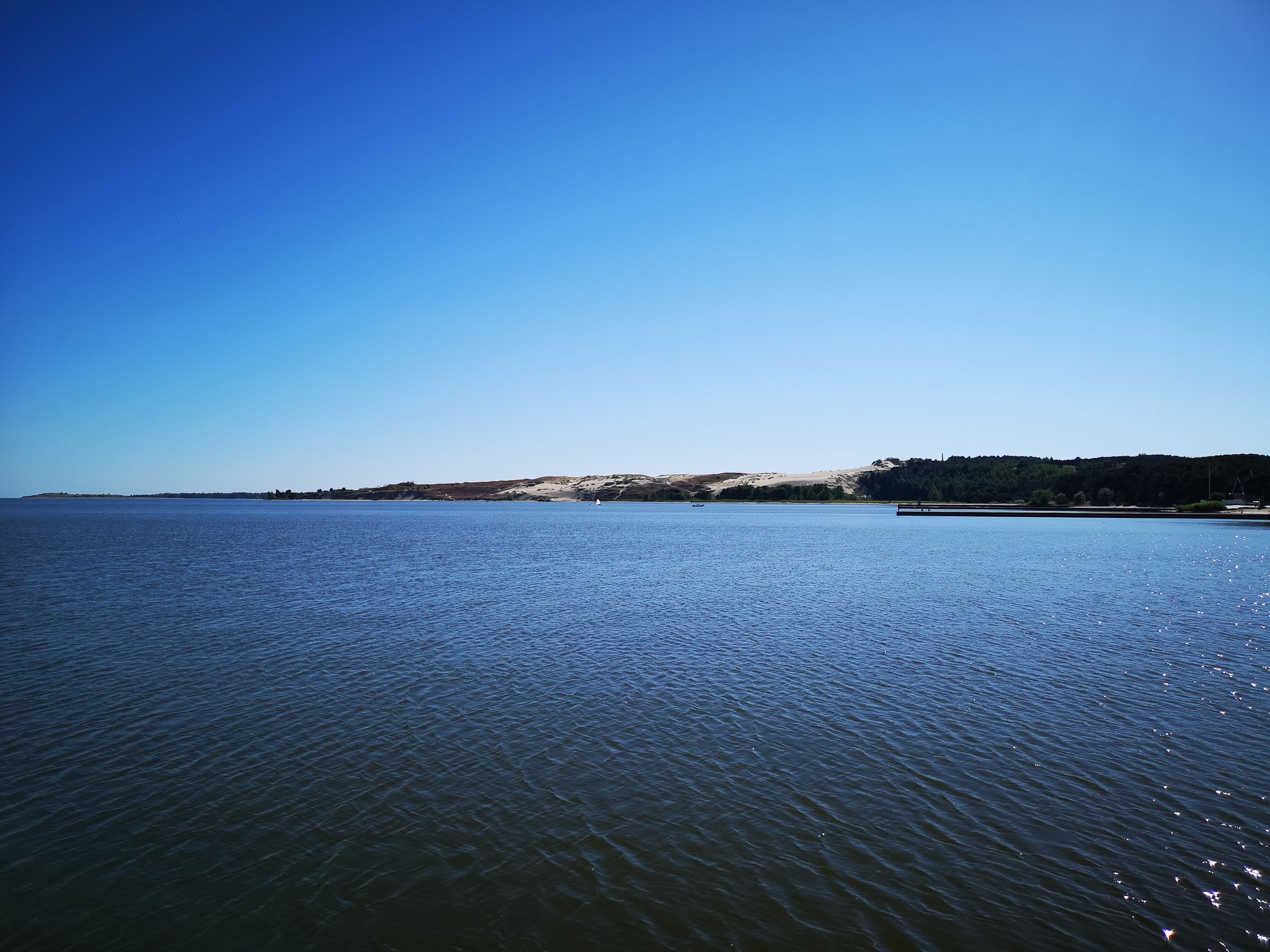
|
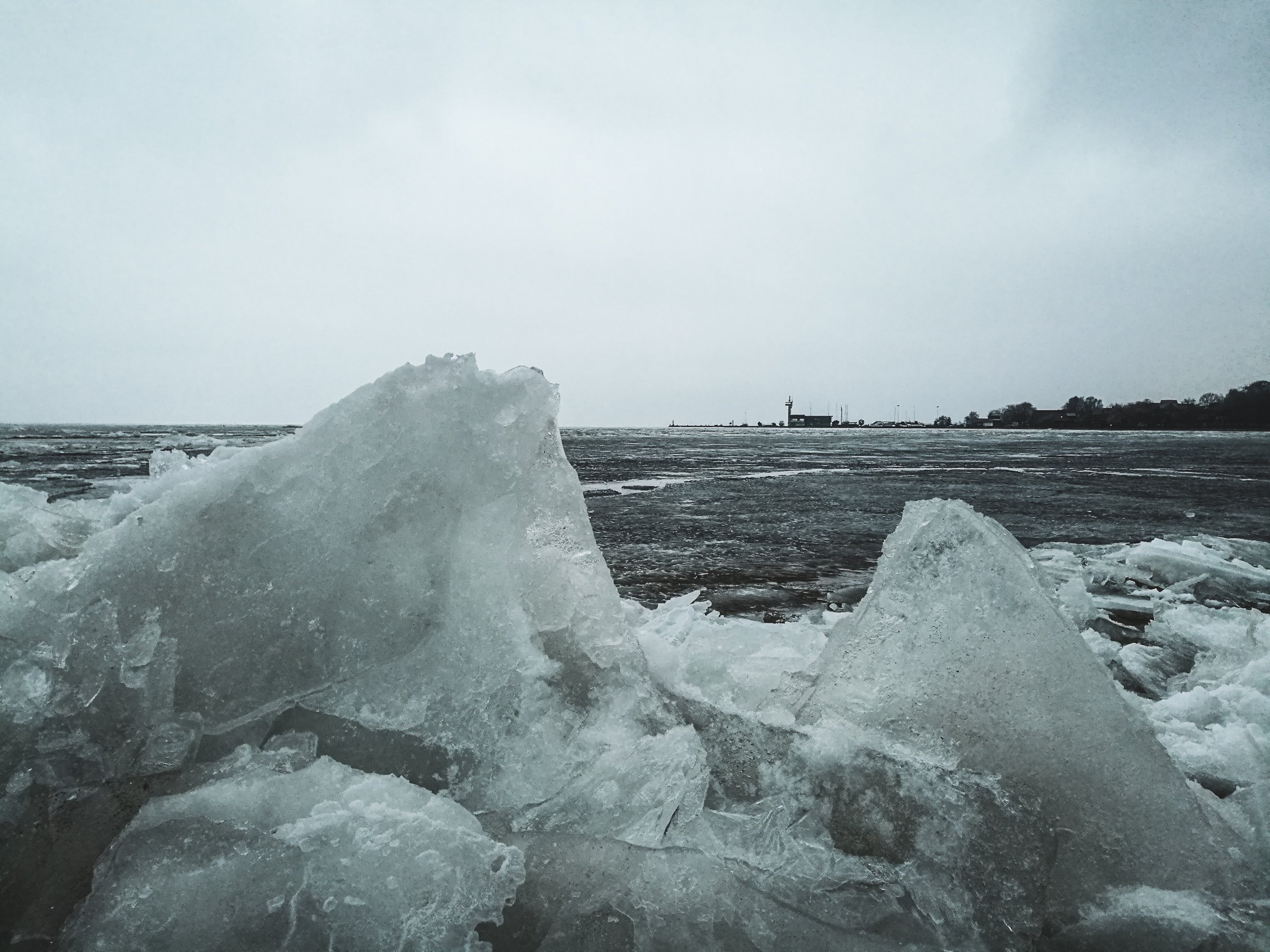
|
|---|
If you feel nihilistic about what I say, feel free to do so as there is no meaning in trying to prove the meaning. If you feel skeptical, I respect you, you should be. One way or another if you are interested in these ideas, the first time I heard of them was in Sebastian Junger’s book “The Tribe”. Few excerpts from the book:
Humans don’t mind hardship, in fact, they thrive on it; what they mind is not feeling necessary. Modern society has perfected the art of making people not feel necessary.
People in wealthy countries suffer depression at as much as eight times the rate they do in poor countries.
The mechanism seems simple: poor people are forced to share their time and resources more than wealthy people are, and as a result, they live in closer communities.
Communities that have been devastated by natural or man-made disasters almost never lapse into chaos and disorder; if anything, they become more just, more egalitarian, and more deliberately fair to individuals.
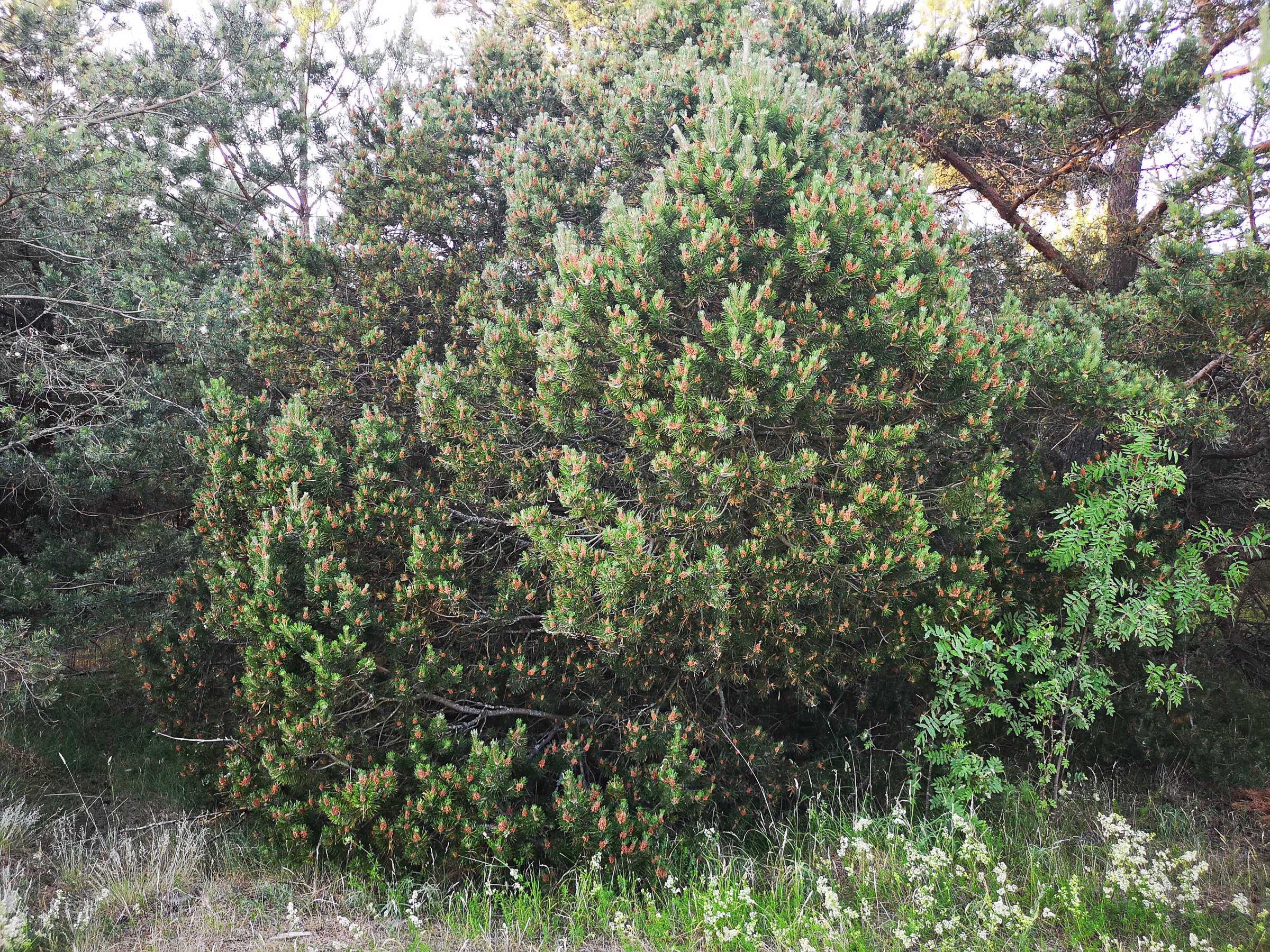
|
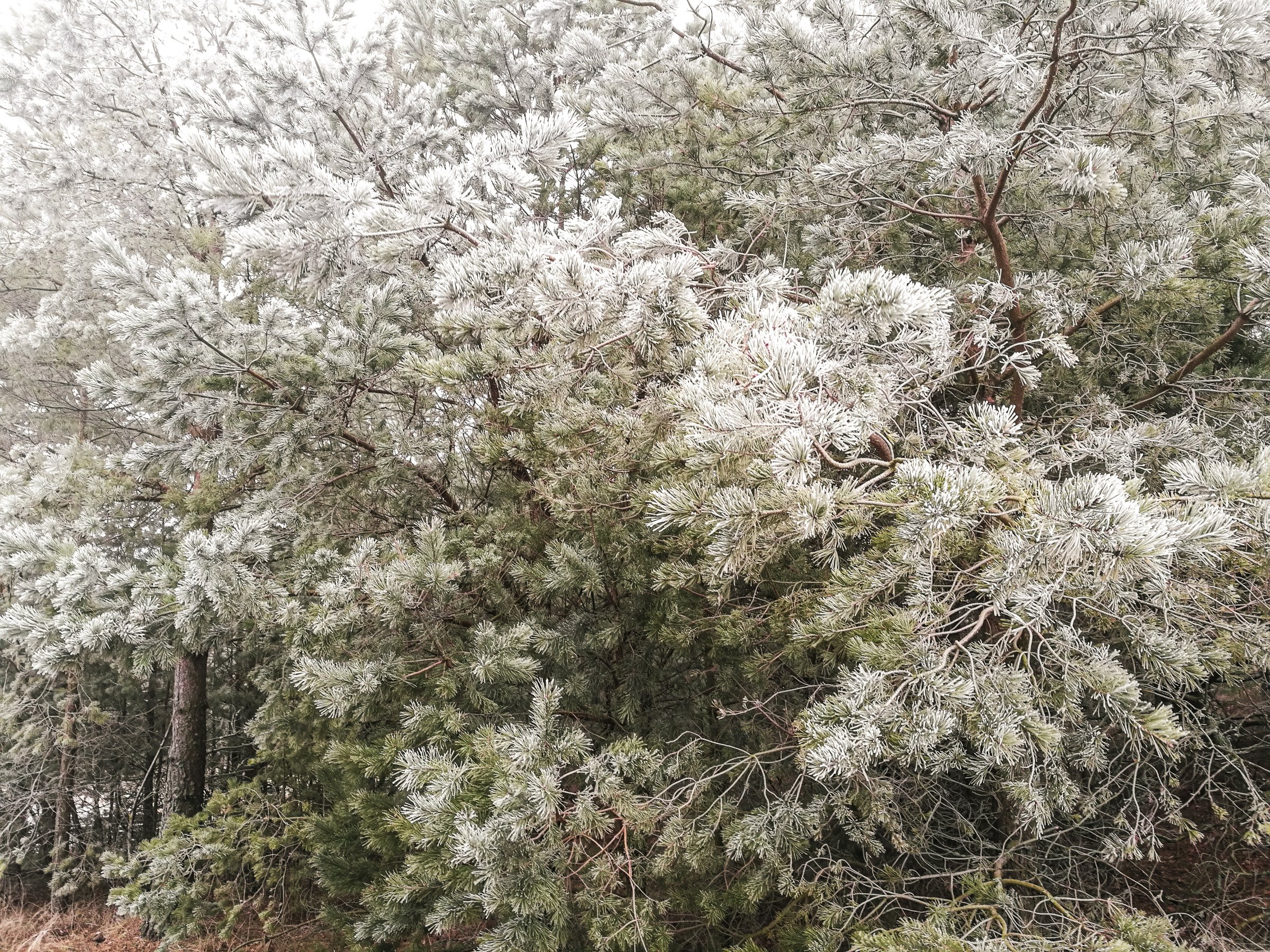
|
|---|
The other promising part of the chaos is that we learn while we suffer way faster. If something is wrong we are wired to look consciously for a salvation and it is totally normal to feel bad when something bad happens. One just needs to learn how to find the problem and how to fix it. This is the progress, and old system burns and a new one emerges from its ashes, capable of both: solving new problems and aware of all old experiences.
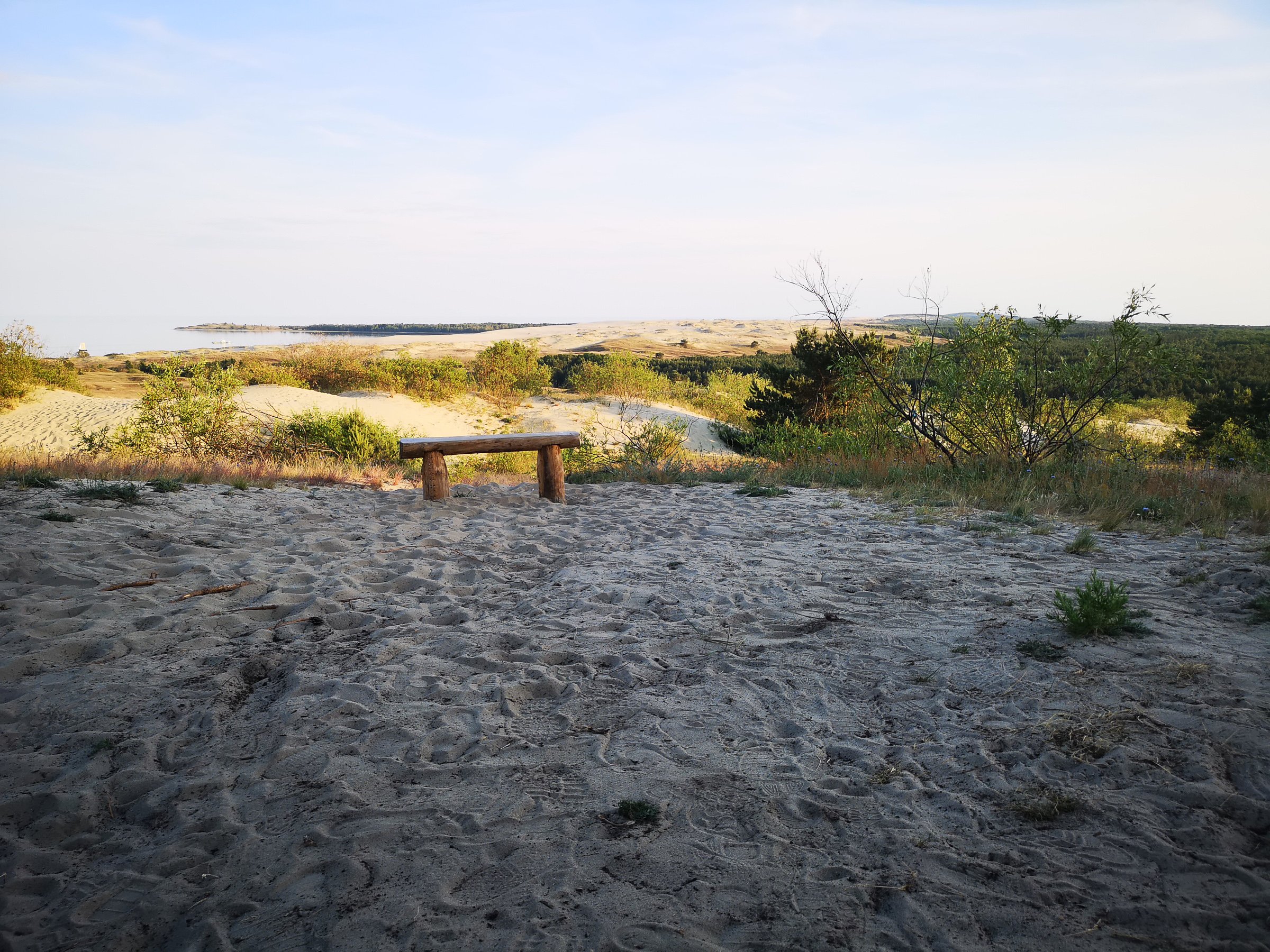
|
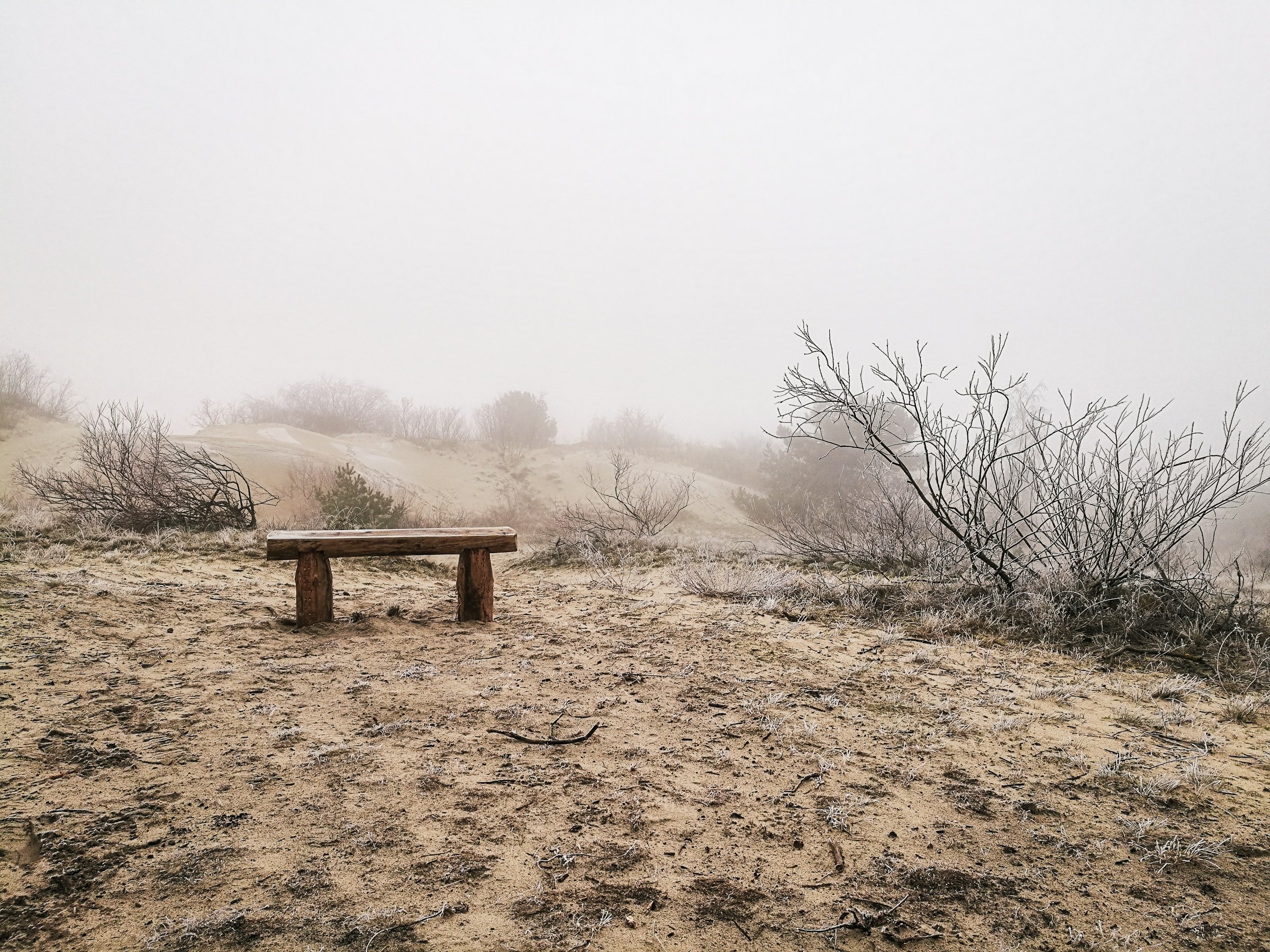
|
|---|
One needs to embrace destruction. Everyone knows that in order to create one needs to create some space to CREATE. The cycle repeats, it always repeats in us, it always repeats in nature, it is NATURAL. So the next time you see something or someone ‘dead’, don’t be quick to judge as it might one day be more alive than you’ve ever seen it.
Comparing such a dynamic environment as Curonian Spit in different times of year gives a great sense of what NATURAL CYCLE means. The lesson here is to understand that you are no exception to this, so don’t stop living, don’t stop dying and don’t stop rebirthing. This cycle is as old as the life itself and it is what enabled evolution which led to such complex beautiful creatures we are.

|
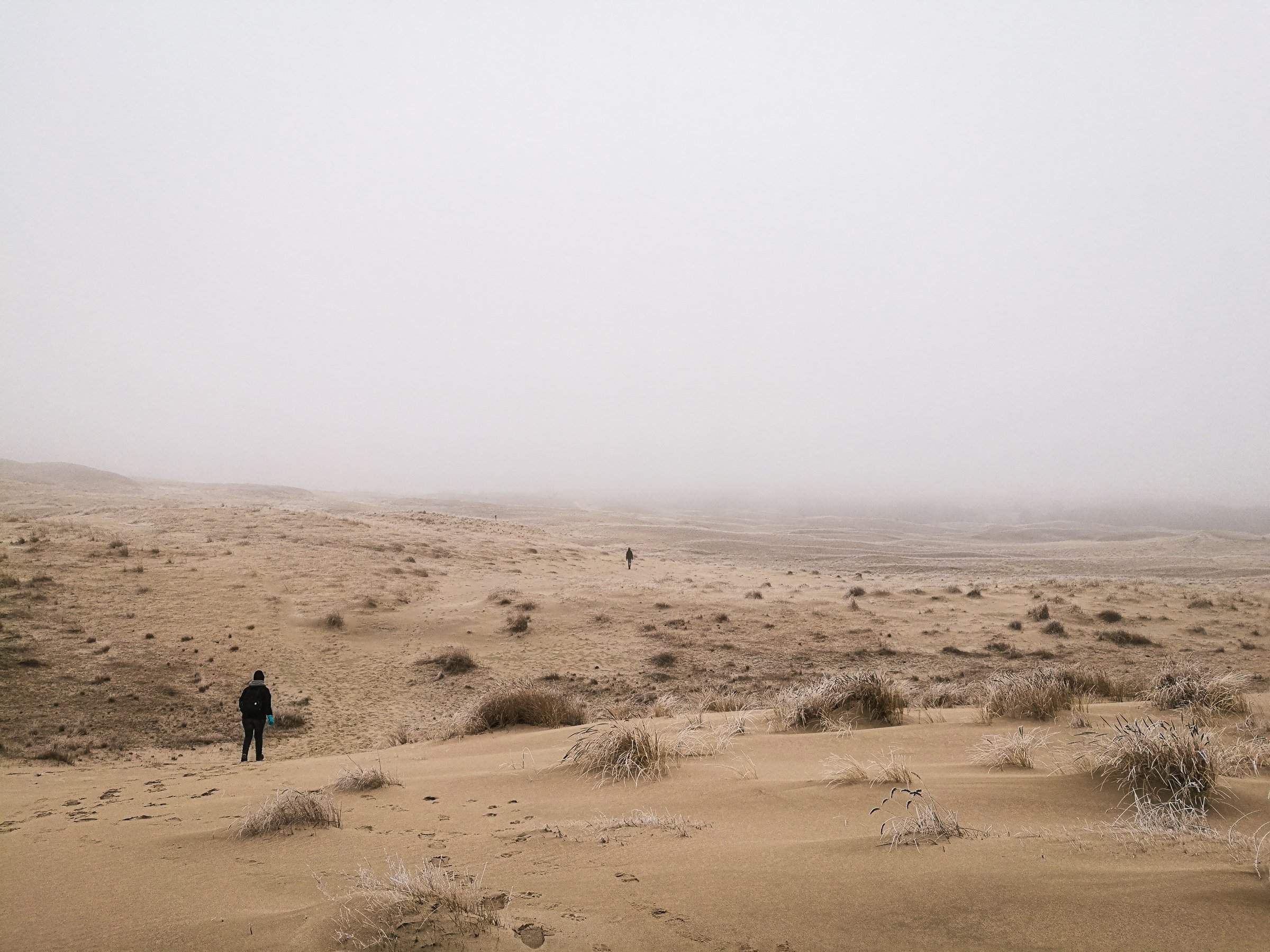
|
|---|
I struggle, you struggle, we struggle, everyone struggles, it is a natural condition and it is in our blood to help each other.
We are not alone.
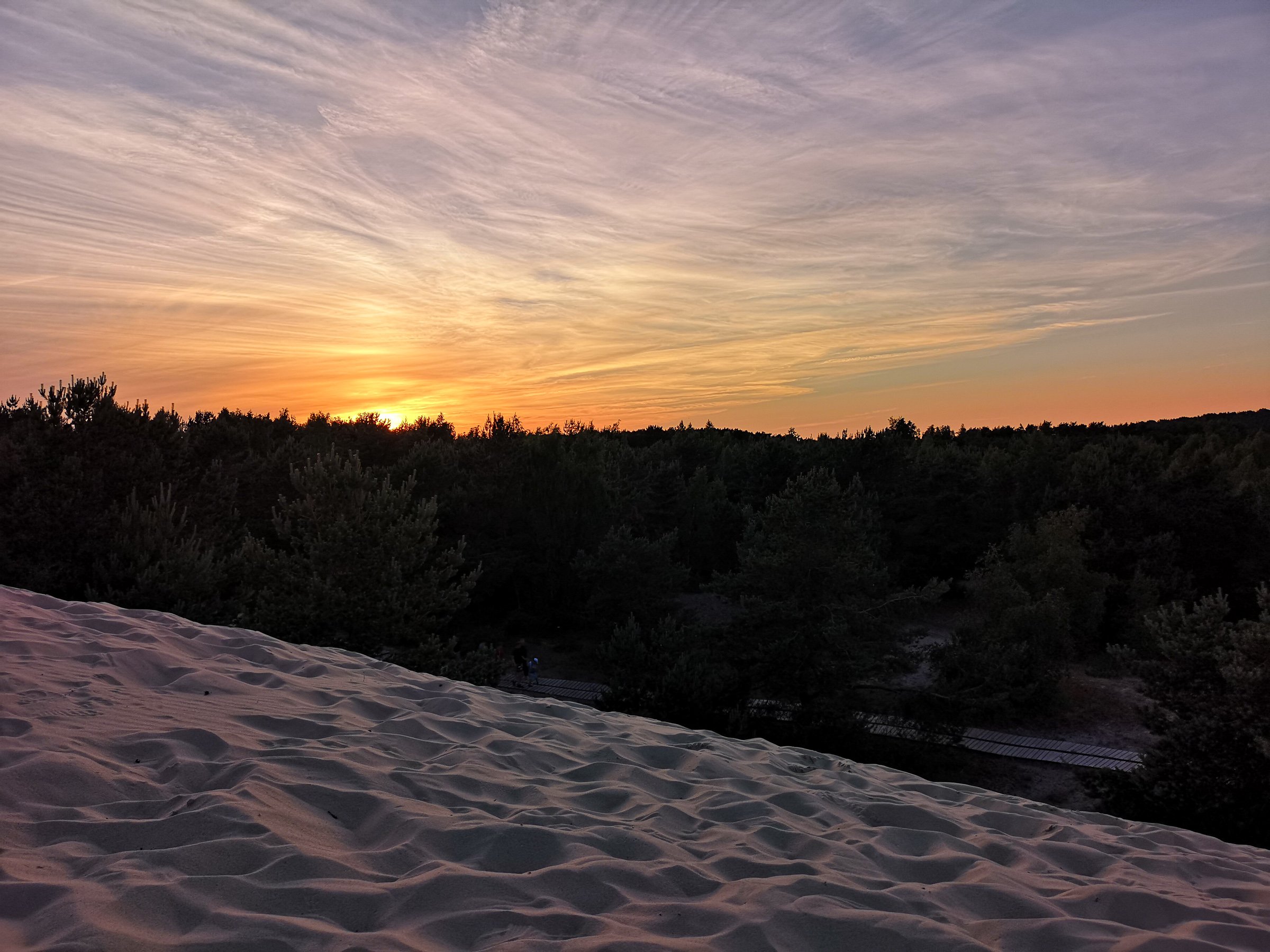
As a matter of fact, this beautiful environment is dying too, it is calculated that in the last 30 years the height of Parnidis dune has reduced by 10 meters - almost 1/5th of its current height. Appreciate it, as it is as temporary as everything else.
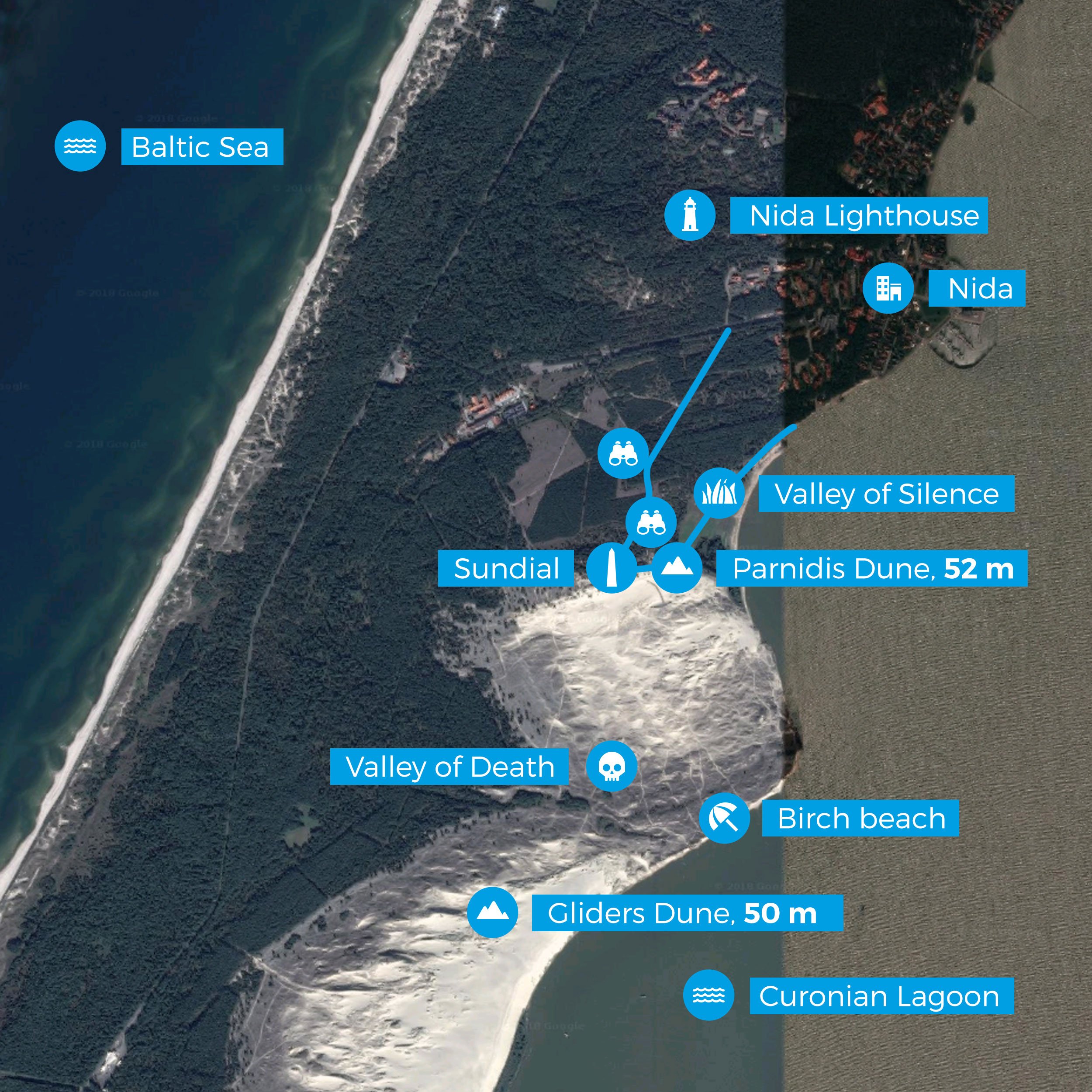
To be back with Curonian Spit after my next visit there in early August

This is a special post from my adventures, based on two journey, one at late January and the other one early June. Both done this year.
Author: Mantas Ališauskas
Photography: Mantas Ališauskas or attributed below the photo
Design: Mantas Ališauskas
Website: http://www.ctdots.eu

